Inbox and environment News: Issue 621
April 7 - 20, 2024: Issue 621
Koala Extinction 'Ticked Off'
Government Approves Santos Barossa Pipeline And Sea Dumping
- 5.15pm the day before the Easter break Santos' Barossa pipeline for gas was approved until 2056.
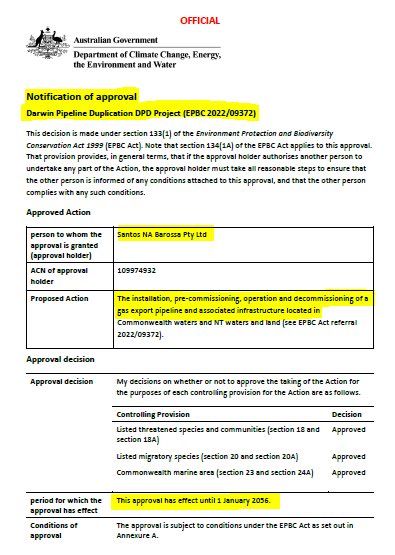 Senator David Pocock; 'The Govt passed their 'Sea Dumping' Bill to create a loophole in the Safeguard Mechanism so Santos can export CO2 to Timor Leste to meet their emissions reduction requirements.
Senator David Pocock; 'The Govt passed their 'Sea Dumping' Bill to create a loophole in the Safeguard Mechanism so Santos can export CO2 to Timor Leste to meet their emissions reduction requirements.New Research Shows Koalas In The Sydney Basin Are In Decline: NSW State Government Seeking Feedback On Reviewing The NSW Koala Strategy
- Overall, the proportional area where koalas are found in the Sydney Basin has slightly declined and there are fewer areas supporting long-standing breeding populations.
- The geographic extent (Extent of Occurrence) of koalas across the Sydney Basin has remained relatively stable from 2021 – 2023, though with a slight overall trend towards decline (0.75%). This represents a decrease of 35,857ha.
- The proportion of this extent which is occupied by koalas (Area of Occupancy) across the Sydney Basin shows a small but significant decline from 12.81% ± 0.18% (2021) to 12.55% ± 0.13% (2023).
- Areas of Generational Persistence (long standing source populations) across the Sydney Basin are dynamic, though there is an overall decrease in the number of cells of Generational Persistence between the time frames 2021 (n = 141) and 2023 (n = 125).
- When considering the six Focal Areas, patterns are variable with some areas showing small increases or relative stability e.g. Hawkesbury LGA and Liverpool LGA respectively, while other areas show significant declines e.g. Cessnock LGA and Wingecarribee LGA.
- The results of this study may be impacted by delays in entering koala sightings records into government databases, though we note that significant decreases in Cessnock occur despite high numbers of records.
- The majority of relevant councils still have no Comprehensive Koala Plan of Management (KPoM) in place.
- Disparities in koala protection remain, with progress towards returning to a single State Environmental Planning Policy (SEPP) for koalas stalled.
- The new Labor government has not detailed its plans for environmental reform, including in relation to its commitments around land clearing and biodiversity offsets, and is still preparing its response to the 5-year statutory reviews of the BC Act and Part 5A of the Local Land Services Act 2013 (NSW) (LLS Act).
- The Commonwealth government continues to work on legislative reform to the Commonwealth Environment Protection and Biodiversity Conservation Act 1999 (EPBC Act), yet progress is slow and, at this stage, it is still unclear how the reforms will ensure improvements in threatened species conservation, including koalas.
- Finalise the Koala SEPP Guideline - applying a full list of koala habitat trees to rural and urban land.
- Add all LGAs in the Sydney Basin with koala sightings to the Koala SEPP i.e. Sutherland Shire, Penrith, and Hills Shire.
- Give recognised koala corridors legal protection e.g. via relevant SEPP changes, by following Chief Scientist recommendations to protect, restore, and zone appropriately sized corridors as conservation land (C2).
- Reform the Cumberland Plain Conservation Plan
- Scrap the Rural Boundary Clearing Code (RBCC) in the Sydney Basin Bioregion, to prevent further fragmentation of koala habitat.
- Urgently adopt interim controls on koala habitat in Areas of Regional Koala Significance (ARKS) to prevent clearing of koala habitat across public, and private land.
- Fund councils via NSW Koala Strategy to develop Comprehensive Koala Plans of Management (CKPoM) ensuring all councils have a CKPoM in place.
- Reform the Local Land Services (LLS) Act to end code based clearing and strictly limit allowable activities on koala habitat.
- Reform the Biodiversity Conservation Act (BCA) and Biodiversity Offsets Scheme (BOS) to strengthen protection for koalas (and other species).
- Support Wildlife Rescue Groups to enable timely data to be uploaded to Bionet.
- Incorporate wildlife mitigation measures such as overpasses and underpasses into plans for all new roads and upgrades.
- Undertake a strategic supply plan to reduce ad-hoc quarry development on koala habitat.
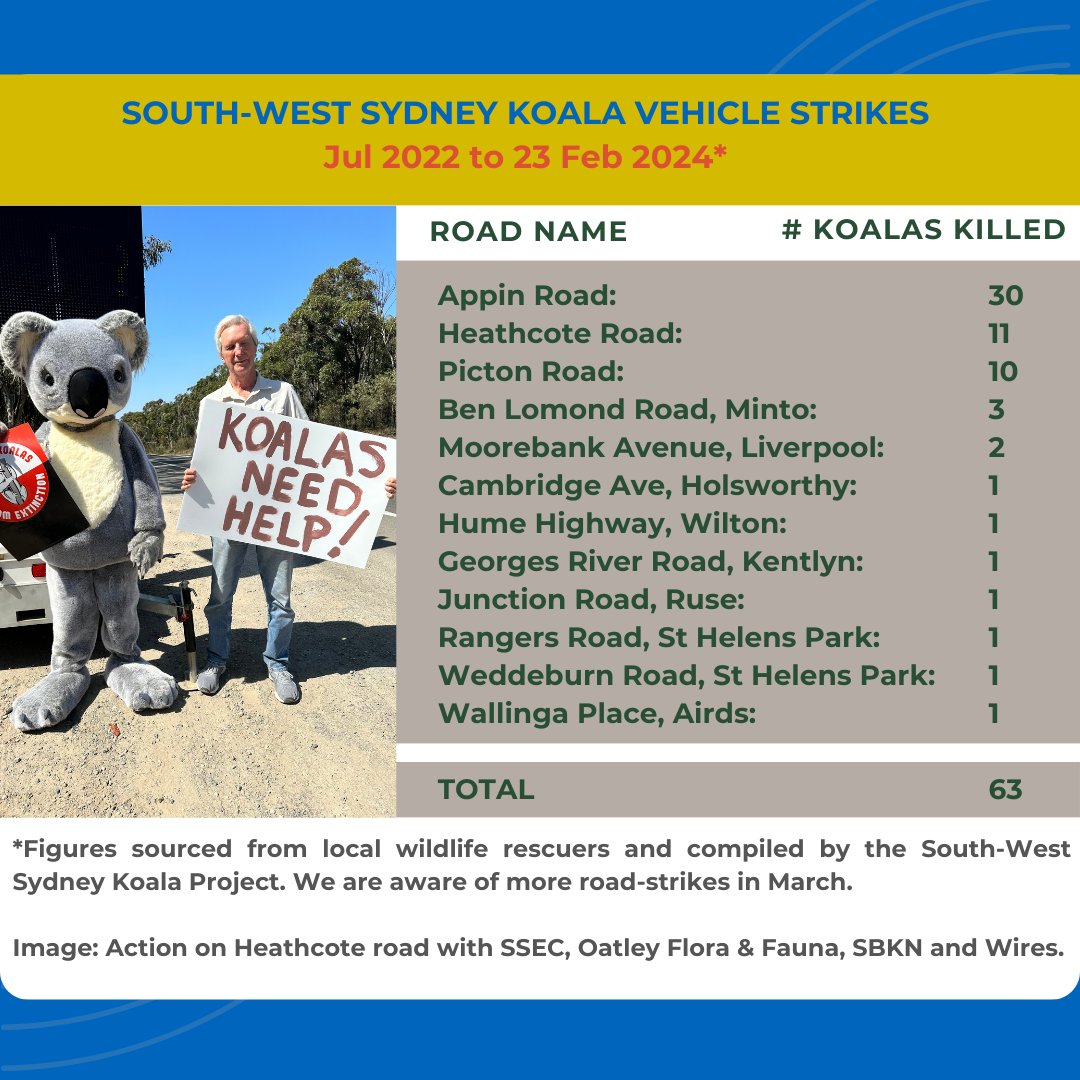
The Long Lunch
On Sunday April 21 NBCAN is holding fundraiser, 'The Long Lunch'.
This event hopes to raise enough funds to buy a PA system for the Northern Beaches Climate Action and its 47 Groups to share to use at the NBCAN Soapbox and other events.
This will be held on beautiful acreage in Ingleside.
Enjoy drinks and canapes on arrival, followed by a delicious buffet and home-made desserts, while listening to an eclectic mix of music from great local talent.
There will be a Silent auction with great prizes, art, pottery and plants for sale.
If you can't attend but still wish to donate, please use our "Scan to pay" QR code and thank you for your generosity.
Tickets are available at: www.eventbrite.com.au/e/the-long-lunch-tickets

Northern Beaches Clean Up Crew: Whale Beach Clean
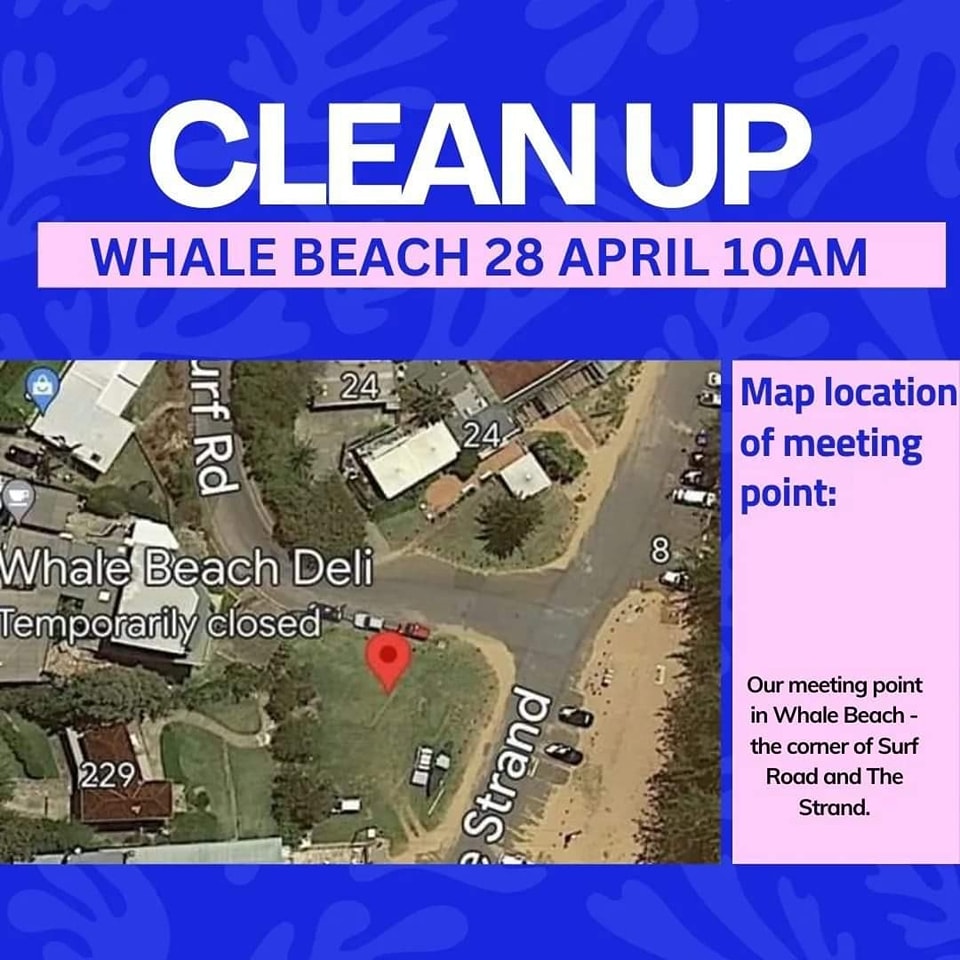
Increase Tree Vandalism Penalties: NSW Parliamentary Petition
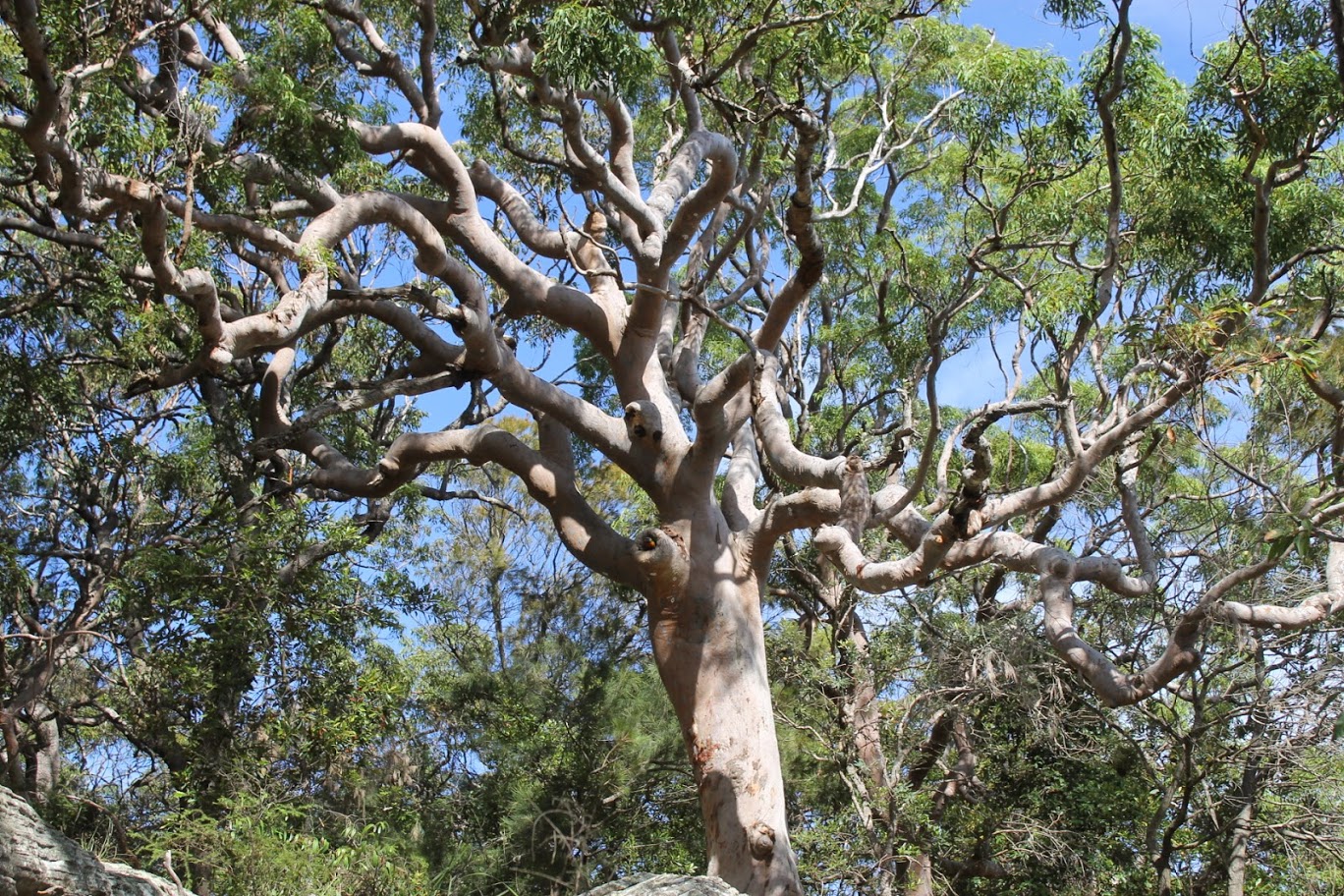
.jpg?timestamp=1708790130470)
2024 BirdLife Australia Community Conservation Grants
- Assessment criteria
- Eligibility
- Stream 1: Community Participation and Volunteering Assessment Criteria
- Stream 2: Conservation and Applied Research Assessment Criteria
Have Your Say: Hawkesbury-Nepean Valley Disaster Adaptation Plan
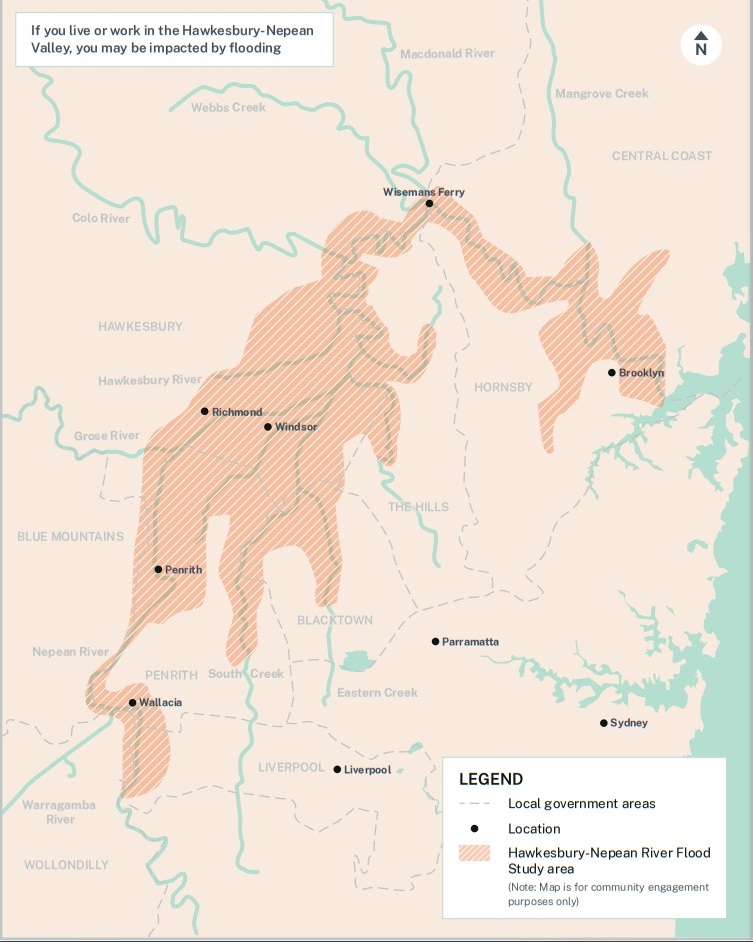
Eastern Blue Groper Changes: Have Your Say
Iconic Blue Groper Now Protected In NSW
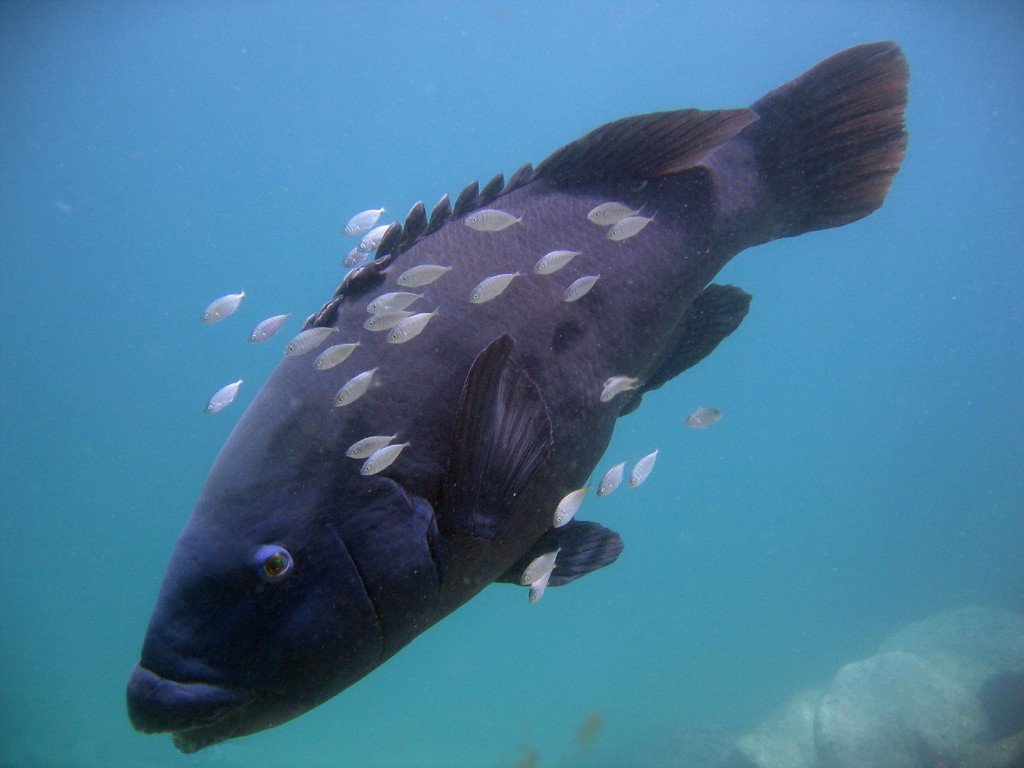
Murrumbidgee Floodplain Management Plan: Have Your Say
- the proposed floodplain boundary
- the historical flood events used for modelling
- the floodway network
- cultural and heritage sites
- ecological assets
- local variances to some rules.
- Hay, Wednesday 3 April
- Balranald, Thursday 4 April
- Darlington Point, Wednesday 10 April
- Wagga Wagga, Thursday 11 April.
- Survey - Complete the survey: Murrumbidgee Floodplain Management Plan
- Email - floodplain.planning@dpie.nsw.gov.au
- Formal submission - Address: Murrumbidgee Valley FMP, Water Group - NSW DCCEEW, PO Box 189, Queanbeyan, NSW 2620
Plastic Bread Ties For Wheelchairs

Volunteers For Barrenjoey Lighthouse Tours Needed
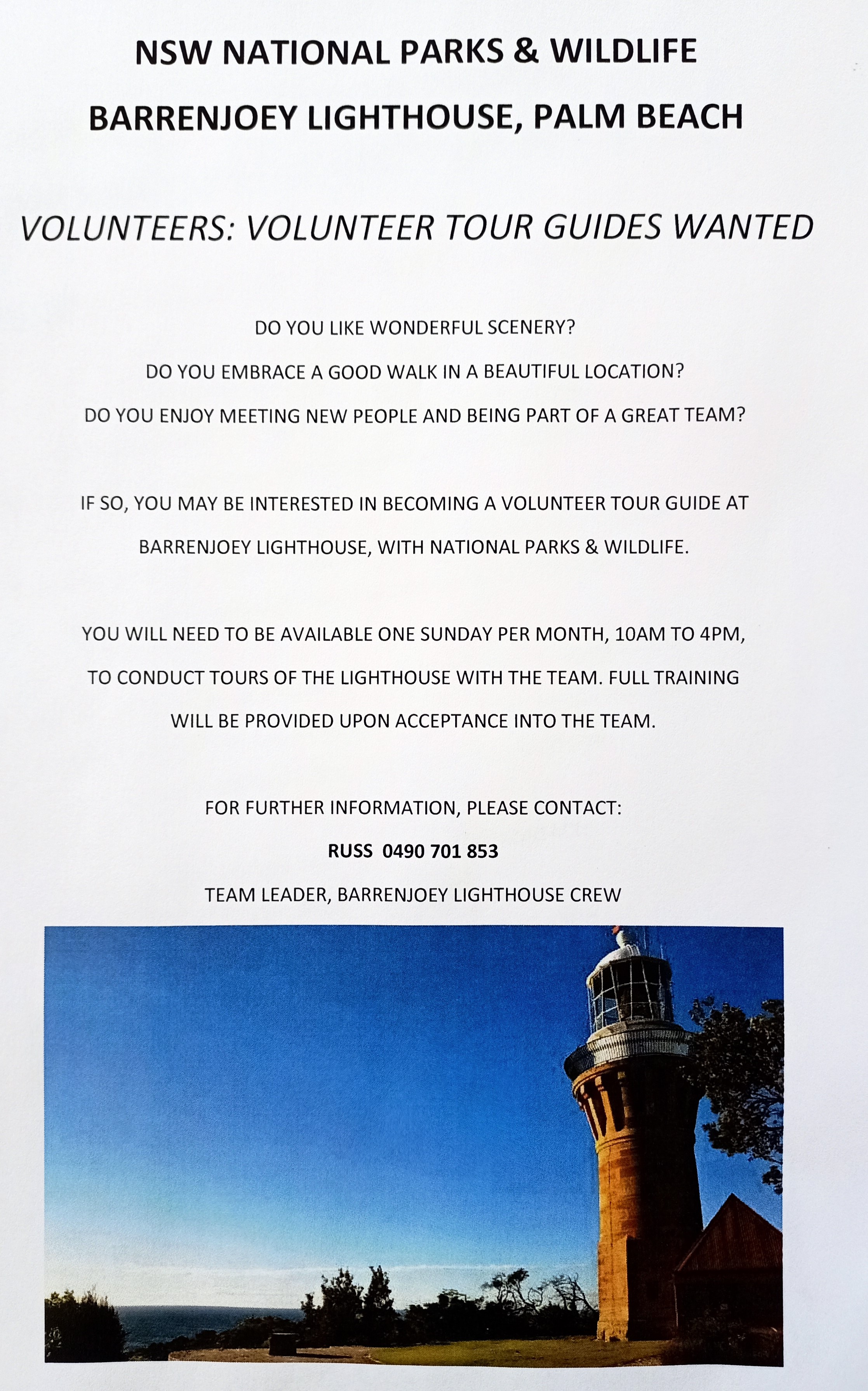
Stay Safe From Mosquitoes
- Applying repellent to exposed skin. Use repellents that contain DEET, picaridin, or oil of lemon eucalyptus. Check the label for reapplication times.
- Re-applying repellent regularly, particularly after swimming. Be sure to apply sunscreen first and then apply repellent.
- Wearing light, loose-fitting long-sleeve shirts, long pants and covered footwear and socks.
- Avoiding going outdoors during peak mosquito times, especially at dawn and dusk.
- Using insecticide sprays, vapour dispensing units and mosquito coils to repel mosquitoes (mosquito coils should only be used outdoors in well-ventilated areas)
- Covering windows and doors with insect screens and checking there are no gaps.
- Removing items that may collect water such as old tyres and empty pots from around your home to reduce the places where mosquitoes can breed.
- Using repellents that are safe for children. Most skin repellents are safe for use on children aged three months and older. Always check the label for instructions. Protecting infants aged less than three months by using an infant carrier draped with mosquito netting, secured along the edges.
- While camping, use a tent that has fly screens to prevent mosquitoes entering or sleep under a mosquito net.
Mountain Bike Incidents On Public Land: Survey
- Mountain Bike Incidents On Public Land: Survey Launched To Gather Data On What's Happening To Public Parks - Community Land - Bush Reserves In Pittwater
- Mother Brushtail Killed On Barrenjoey Road: Baby Cried All Night - Powerful Owl Struck At Same Time At Careel Bay During Owlet Fledgling Season: calls for mitigation measures - The List of 'What You can Do' as requested
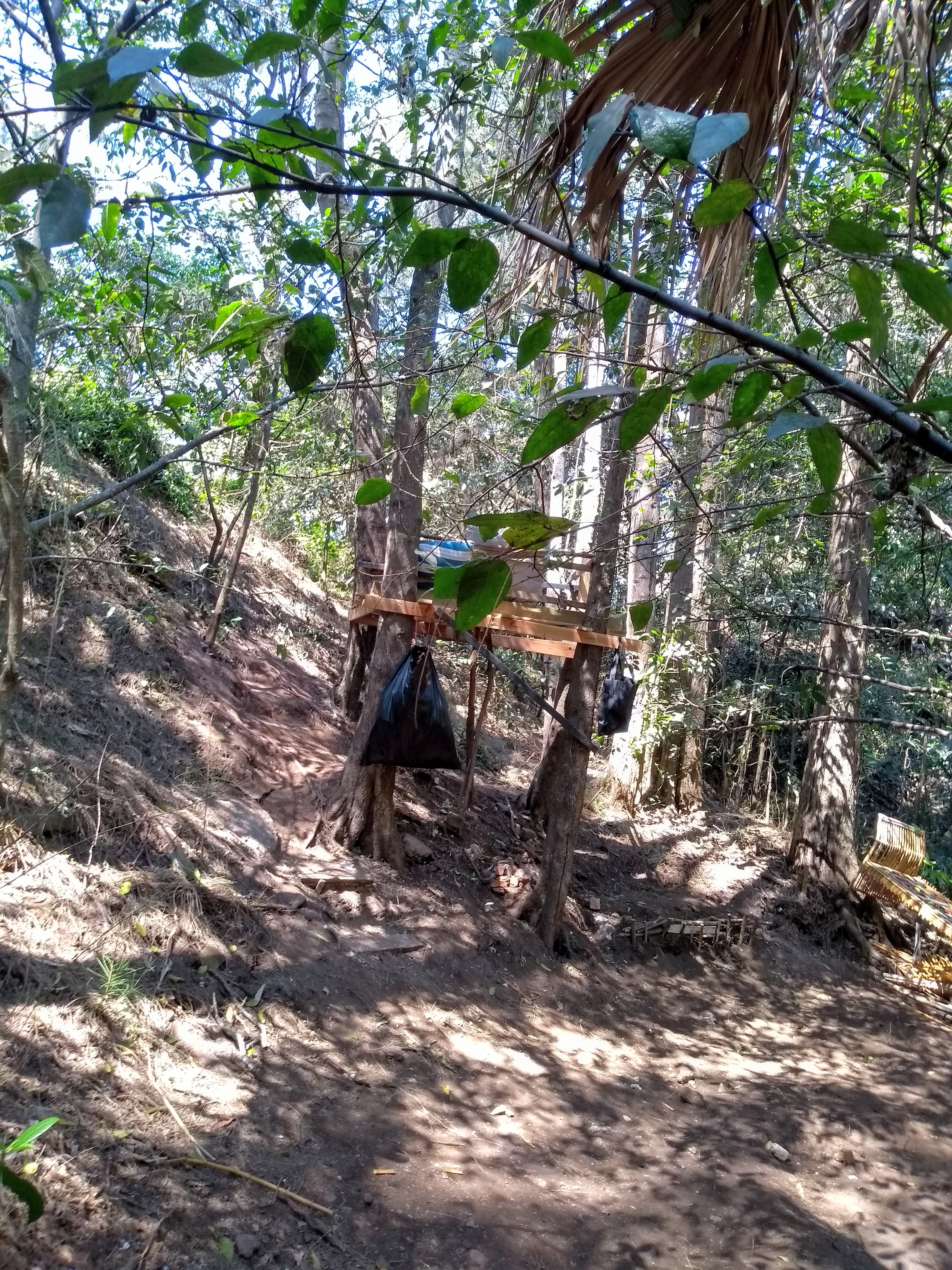
Report Fox Sightings
%20(1).jpg?timestamp=1675893929686)
Marine Wildlife Rescue Group On The Central Coast
A new wildlife group was launched on the Central Coast on Saturday, December 10, 2022.
Marine Wildlife Rescue Central Coast (MWRCC) had its official launch at The Entrance Boat Shed at 10am.
The group comprises current and former members of ASTR, ORRCA, Sea Shepherd, Greenpeace, WIRES and Wildlife ARC, as well as vets, academics, and people from all walks of life.
Well known marine wildlife advocate and activist Cathy Gilmore is spearheading the organisation.
“We believe that it is time the Central Coast looked after its own marine wildlife, and not be under the control or directed by groups that aren’t based locally,” Gilmore said.
“We have the local knowledge and are set up to respond and help injured animals more quickly.
“This also means that donations and money fundraised will go directly into helping our local marine creatures, and not get tied up elsewhere in the state.”
The organisation plans to have rehabilitation facilities and rescue kits placed in strategic locations around the region.
MWRCC will also be in touch with Indigenous groups to learn the traditional importance of the local marine environment and its inhabitants.
“We want to work with these groups and share knowledge between us,” Gilmore said.
“This is an opportunity to help save and protect our local marine wildlife, so if you have passion and commitment, then you are more than welcome to join us.”
Marine Wildlife Rescue Central Coast has a Facebook page where you may contact members. Visit: https://www.facebook.com/profile.php?id=100076317431064
- Ph: 0478 439 965
- Email: marinewildlifecc@gmail.com
- Instagram: marinewildliferescuecc
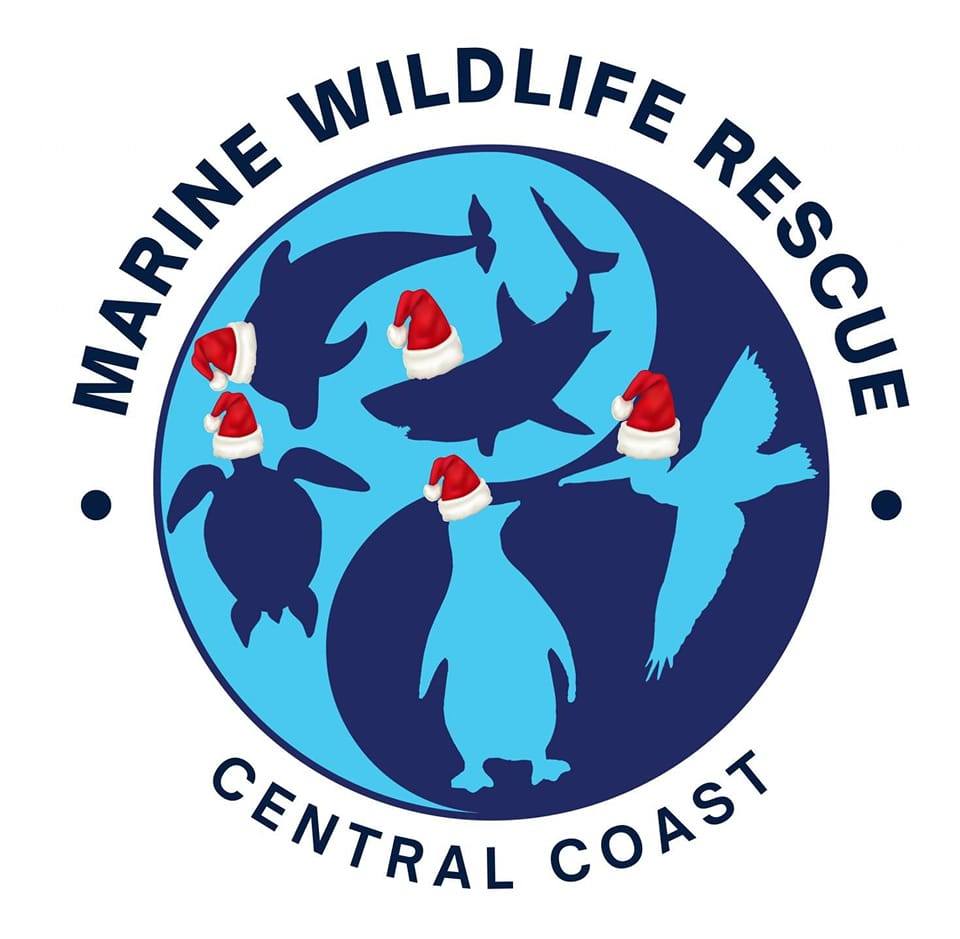
Watch Out - Shorebirds About
.JPG.opt1460x973o0,0s1460x973.jpg?timestamp=1663629195339)
Possums In Your Roof?: Do The Right Thing
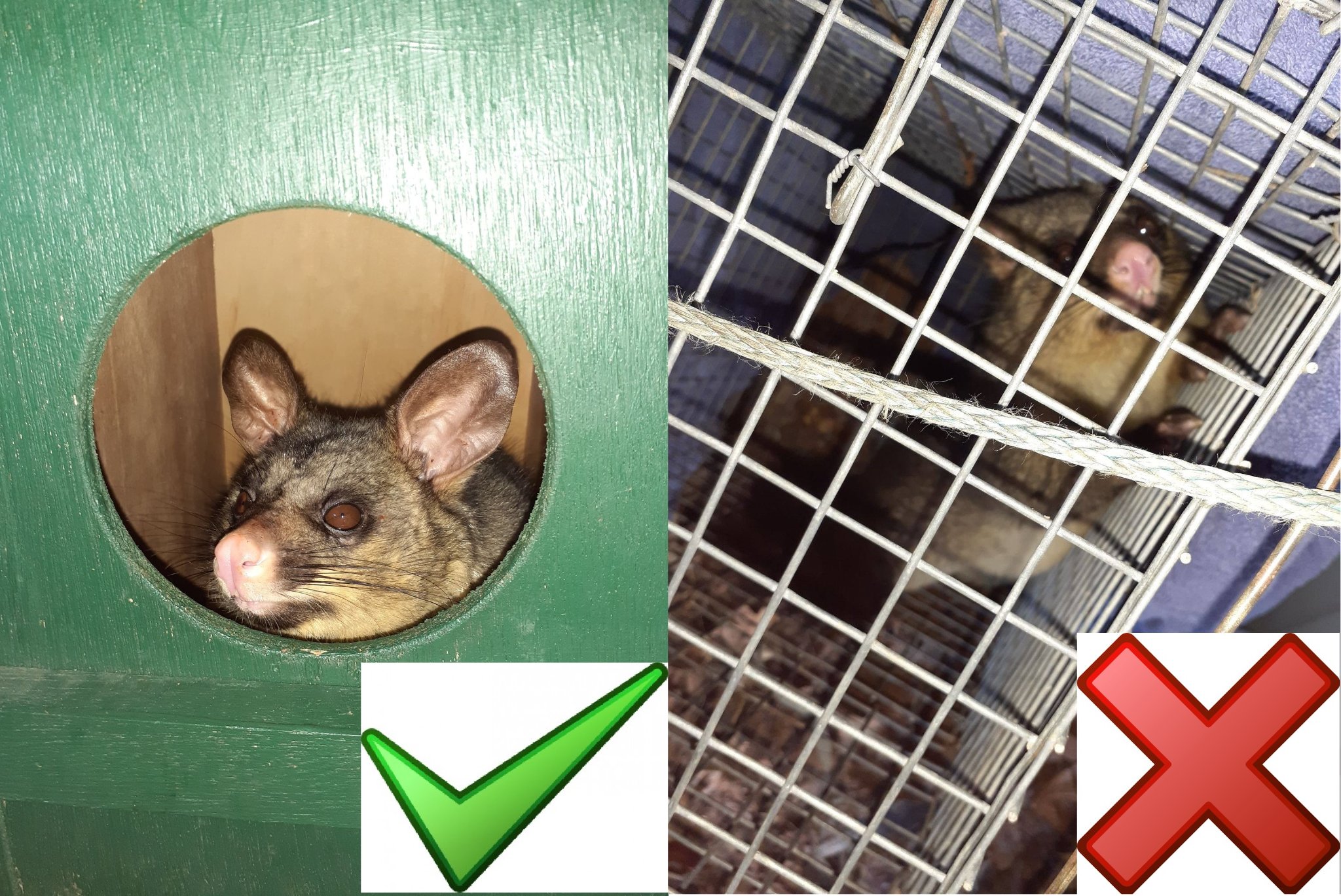
Aviaries + Possum Release Sites Needed

Bushcare In Pittwater: Where + When
Where we work Which day What time
Avalon
Angophora Reserve 3rd Sunday 8:30 - 11:30am
Avalon Dunes 1st Sunday 8:30 - 11:30am
Avalon Golf Course 2nd Wednesday 3 - 5:30pm
Careel Creek 4th Saturday 8:30 - 11:30am
Toongari Reserve 3rd Saturday 9 - 12noon (8 - 11am in summer)
Bangalley Headland 2nd Sunday 9 to 12noon
Bayview
Winnererremy Bay 4th Sunday 9 to 12noon
Bilgola
North Bilgola Beach 3rd Monday 9 - 12noon
Algona Reserve 1st Saturday 9 - 12noon
Plateau Park 1st Friday 8:30 - 11:30am
Church Point
Browns Bay Reserve 1st Tuesday 9 - 12noon
McCarrs Creek Reserve Contact Bushcare Officer To be confirmed
Clareville
Old Wharf Reserve 3rd Saturday 8 - 11am
Elanora
Kundibah Reserve 4th Sunday 8:30 - 11:30am
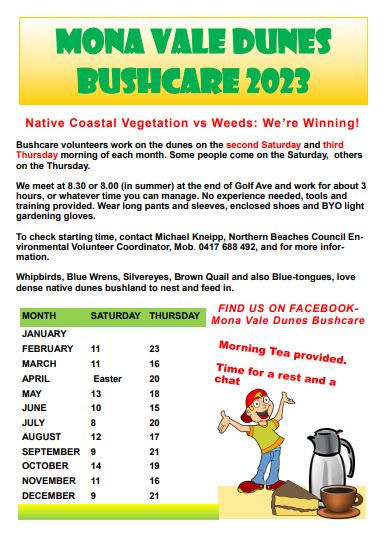 Mona Vale
Mona Vale Mona Vale Beach Basin 1st Saturday 8 - 11am
Mona Vale Dunes 2nd Saturday +3rd Thursday 8:30 - 11:30am
Newport
Bungan Beach 4th Sunday 9 - 12noon
Crescent Reserve 3rd Sunday 9 - 12noon
North Newport Beach 4th Saturday 8:30 - 11:30am
Porter Reserve 2nd Saturday 8 - 11am
North Narrabeen
Irrawong Reserve 2nd Saturday 2 - 5pm
Palm Beach
North Palm Beach Dunes 3rd Saturday 9 - 12noon
Scotland Island
Catherine Park 2nd Sunday 10 - 12:30pm
Elizabeth Park 1st Saturday 9 - 12noon
Pathilda Reserve 3rd Saturday 9 - 12noon
Warriewood
Warriewood Wetlands 1st Sunday 8:30 - 11:30am
Whale Beach
Norma Park 1st Friday 9 - 12noon
Western Foreshores
Coopers Point, Elvina Bay 2nd Sunday 10 - 1pm
Rocky Point, Elvina Bay 1st Monday 9 - 12noon
Friends Of Narrabeen Lagoon Catchment Activities

Gardens And Environment Groups And Organisations In Pittwater
- Ringtail Posse: 1 – February 2023; Anna Maria Monticelli: King Parrots/Water Dragons - Jacqui Scruby: Loggerhead Turtle - Lyn Millett OAM: Flying-Foxes - Kevin Murray: Our Backyard Frogs - Miranda Korzy: Brushtail Possums
- Ringtail Posse: 2 - March 2023; Kevin Murray: Tawny Frogmouth - Kayleigh Greig: Red-Bellied Black Snake - Bec Woods: Australian Water Dragon - Margaret Woods: Owlet-Nightjar - Hilary Green: Butcher Bird - Susan Sorensen: Wallaby
- Ringtail Posse 3 - April 2023: Jeffrey Quinn: Kookaburra, Tom Borg McGee: Kookaburra, Stephanie Galloway-Brown: Bandicoot, Joe Mills: Noisy Miner
- Ringtail Posse 4 May 2023 - Andrew Gregory: Powerful Owl, Marita Macrae: Pale-Lipped Or Gully Shadeskink, Jools Farrell: Whales & Seals, Nicole Romain: Yellow-Tailed Black Cockatoo
- Ringtail Posse 5: June 2023 - Lynleigh Greig OAM: Snakes, Dick Clarke: Diamond Python, Selena Griffith: Glossy Black-Cockatoo, Eric Gumley: Bandicoot
- Ringtail Posse 6: July 2023 - Sonja Elwood: Long-Nosed Bandicoot, Dr. Conny Harris: Swamp Wallaby, Neil Evers: Bandicoot, Bill Goddard: Bandicoot
- Ringtail Posse 7: August 2023 - Geoff Searl OAM: Tawny Frogmouth, Peter Macinnis: Echidna, Peter Carter: Ringtail Possum, Nathan Wellings; Kookaburra
- Ringtail Posse 8: September 2023 - Saving Sydney's Last Koalas; Logging Now Stopped In Future Koala Park By Minns Government - ''Is There Time To Save Sydney's Last Koalas Too?'' Asks: John Illingsworth, WIRES, Sydney Wildlife Rescue, Save Sydney Koalas, The Sydney Basin Koala Network, The Help Save The Wildlife & Bushlands In Campbelltown Group, Appin Koalas Animal Rescue Service, Patricia and Barry Durham, Sue Gay, Save Mt. Gilead, Paola Torti Of The International Koala Intervention Group
- Ringtail Posse 9: October 2023 - David Palmer OAM: Bandicoots, Helen Pearce: Brushtail Possum, Amina Kitching: Goanna, David Goudie: Ringtails Possums + Bandicoots + Owls
- Mother Brushtail Killed On Barrenjoey Road: Baby Cried All Night - Powerful Owl Struck At Same Time At Careel Bay During Owlet Fledgling Season: calls for mitigation measures - The List of what you can do for those who ask 'What You I Do' as requested
- Ringtail Posse 10: November 2023 - Stop Wildlife Roadkill Group: You Can Help By Using The Wildlife Incident Mapping Website
Coastal Floodplain Drainage Project: Have Your Say
- addressing the complexity, time and costs associated with the approvals process
- reducing the impact of these works and activities on downstream water quality, aquatic ecosystems, communities and industries.
- Option 1: One-stop shop webpage - A single source of information on the various approvals that may be required by government agencies for coastal floodplain drainage works.
- Option 2: Drainage applications coordinator - A central officer(s) to guide the applicant through the approvals processes for all NSW government agencies (Department of Planning and Environment’s Water Group, Planning, Crown Lands, and the Department of Primary Industries — Fisheries) and answer the applicant’s questions about their individual location and proposed works. The drainage applications coordinator would complement both Option 1 and Option 3.
- Option 3: Concurrent assessment - Concurrent assessment of applications by relevant government agencies.
- Option 4: Risk-based approach - NSW Government agencies would use a standardised risk matrix to compare the type and extent of the drainage works against the acidic water and blackwater potential of the drainage area to identify the level of risk associated with the proposed works. The identified level of risk could then be used to determine the level of information required from applicants, the level of assessment required by the approval authority, and the types of conditions applied to any approvals.
- Option 5: Drainage work approvals under the Water Management Act 2000 - Switch on drainage work approvals under the Water Management Act 2000. Two different methods of implementation are possible:
i. a drainage work approval would be required only when works are proposed and for the area of works onlyii. a drainage work approval could apply to existing and new drainage works across the entire drainage network.
Within either of these two methods, one of three different approaches for public authorities could be applied:
a. require public authorities to hold a drainage work approvalb. allow for public authorities to hold a conditional exemption from requiring approvalsc. exempt public authorities from requiring a drainage work approval.
- Option 6: Streamlining of Fisheries and Crown Land approvals through the use of drainage work approvals - Drainage work approvals, particularly under Option 5(ii), have the potential to deliver a catchment-wide consideration of the drainage network. This would provide greater certainty to other agencies such as Fisheries and Crown Land that environmental impacts have been considered and appropriate conditions applied, supporting them to assess and issue approvals more quickly.
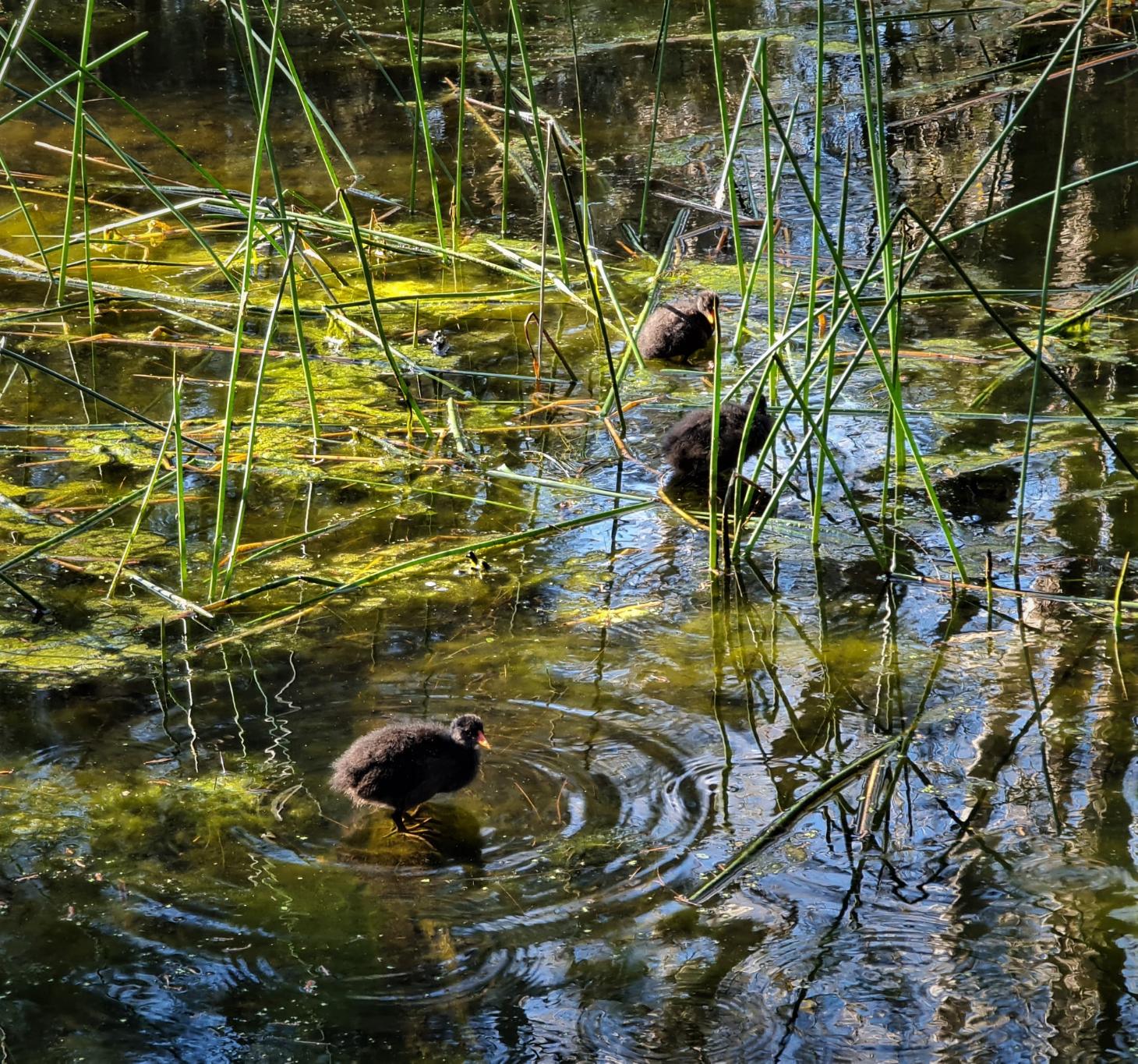
Hundreds of animals were rescued after the Black Summer bushfires – but how many actually survived?
Catherine Herbert, University of Sydney; Chris Dickman, University of Sydney; Holly Cope, University of Sydney, and Rachael Gray, University of SydneyThe horrific Black Summer bushfires of 2019–20 burned more than 8 million hectares of vegetation across southeastern Australia. An estimated 3 billion animals were caught in the fire zone.
Intense media coverage often included graphic images of koalas and other marsupials fighting for survival. People everywhere became emotionally invested in wildlife rescue and rehabilitation.
Yet despite the courageous efforts of volunteers, our new research has found wildlife rescue and rehabilitation rates were much lower than expected.
We can use this information to improve our response to future disasters. Knowledge of the likely chance of recovery from different injuries can be used to refine treatment for each species. This will allow volunteers and veterinarians to prioritise rehabilitation efforts and minimise animal suffering.
Grim Statistics On Rescue And Rehab
Our research analysed marsupial rescue, rehabilitation and release statistics from two of the worst-affected regions: New South Wales and Kangaroo Island.
We compared these statistics to the estimated population size for each species and to typical marsupial rescue and rehabilitation records in NSW. Typical rescue data were not readily available for Kangaroo island.
Despite an estimated 46.8 million marsupials in the NSW fire zones, only 889 marsupial rescues were reported in NSW. Just 618 marsupial rescues were reported on Kangaroo Island.
Why were rescue rates so low? Our research provides some clues.
The peak rescue period was 6–8 weeks after fire ignition, and rescues were mostly clustered around the edge of the fire zone. This suggests that timely access to firegrounds was difficult or unsafe. The scale and intensity of the fires almost certainly limited the capacity of many individual animals to flee. Many likely perished in the fire, or before rescuers could arrive.
Most rescues in NSW were of common species such as kangaroos and wallabies (458) or possums (162). But koalas (204), a threatened species in NSW, were rescued more often than expected relative to their population size.
So what was the fate of animals that were rescued? Sadly, we found more than half the marsupials rescued in both regions did not survive.
Kangaroos and possums were more likely to be euthanised on the fireground or soon after being found. Koalas, on the other hand, were more likely to enter rehabilitation facilities, but many still died.
We found kangaroos had a lower chance of successful rehabilitation (15%) than koalas (47%) and possums (55%). This highlights the need for more research on ways to improve rehabilitation success.
What Can We Learn?
Our analysis provides valuable insights that could be used to improve outcomes in the future.
The type of injury can be used to predict survival. Animals that had traumatic injuries, such as burns, were less likely to survive. If they were malnourished or immobilised they were in serious trouble. On the other hand, orphaned or heat-stressed and dehydrated animals had a better chance of survival and release back to the wild.
Our detailed analysis of the factors influencing survival for each species can be used to refine decision-making, improve animal welfare and identify areas where more research is needed to improve treatment regimes in the future. If an animal has a poor chance of survival, euthanasia should be considered at the initial assessment.
The Way Forward
During the 2019–20 fires, the community expected that wild animals would be rescued and rehabilitated where possible. But most people involved in rehabilitation are volunteers who invest an enormous amount of time, money and energy into caring for wildlife. These personal costs are much higher during disasters, and raise questions about whether wildlife volunteers should be compensated for their efforts.
As Australia and the world grapples with the increasing frequency and severity of extreme weather events, we need better ways to support wildlife and volunteers. Improving partnerships between government agencies and skilled volunteers may form part of the solution.
In response to the 2020 NSW Bushfire Inquiry, new initiatives in wildlife emergency response have recognised the need for timely responses in the aftermath of disasters.
In NSW, firefighters have now received basic wildlife rescue training. Veterinarians and wildlife volunteers have access to fireground training and protective equipment.
These initiatives aim to improve opportunities for wildlife rescue and animal welfare in the aftermath of future disasters. They also make it safer for workers and volunteers.
Our research supports the need for timely intervention if we want to rescue more animals and minimise suffering.
More consistent data collection is needed on a national scale to fully appreciate the true costs of disasters on wildlife. This should include user-friendly technology to accurately log all wildlife rescues (and euthanasia) in the field and track individual animals throughout rehabilitation. This will help to understand species differences in rates of rescue and rehabilitation, and hopefully improve rescue and rehabilitation outcomes for all species. ![]()
Catherine Herbert, Associate professor, University of Sydney; Chris Dickman, Professor Emeritus in Terrestrial Ecology, University of Sydney; Holly Cope, Honorary Research Associate, University of Sydney, and Rachael Gray, Associate Professor in Veterinary Pathology, University of Sydney
This article is republished from The Conversation under a Creative Commons license. Read the original article.
After 10 years of work, landmark study reveals new ‘tree of life’ for all birds living today
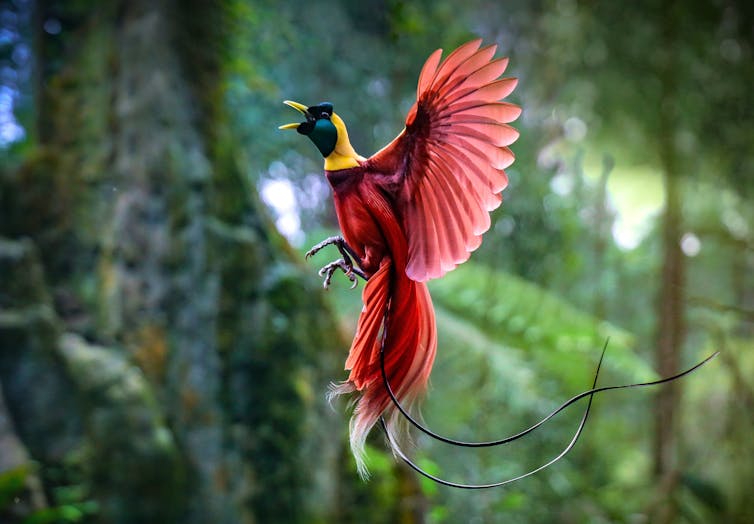
The largest-ever study of bird genomes has produced a remarkably clear picture of the bird family tree. Published in the journal Nature today, our study shows that most of the modern groups of birds first appeared within 5 million years after the extinction of the dinosaurs.
Birds are a large part of our lives, a sign of nature even in cities. They are popular among the general public and well studied by scientists. But placing all of these birds into a family tree has been frustratingly difficult.
By analysing the genomes of more than 360 bird species, our study has identified the fundamental relationships among the major groups of living birds.
The new family tree overturns some previous ideas about bird relationships, while also revealing some new groupings.
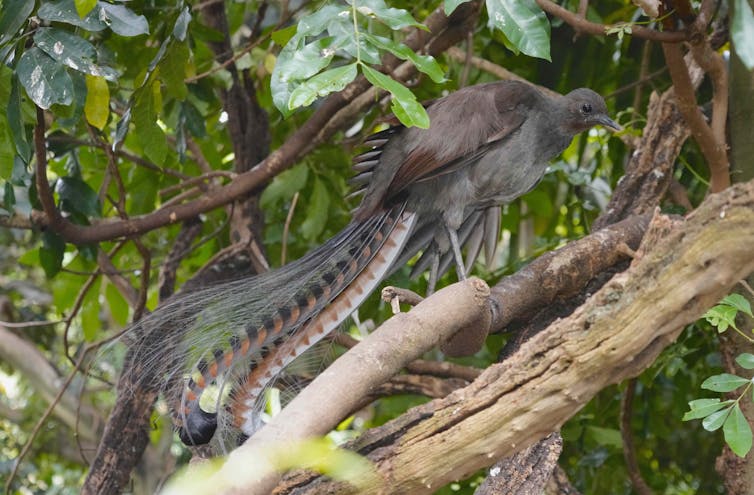
Resolving A Messy Relationship
Previous studies showed the bird family tree has three major branches. The first branch contains the tinamous and ratites, which include flightless birds such as the emu, kiwi and ostrich.
The second branch holds the landfowl and waterfowl – chickens, ducks and so on. All other birds sit on the third branch, known as the Neoaves, which include 95% of bird species.
The Neoaves branch includes ten groups of birds. Most of these are what biologists have named the “Magnificent Seven”: landbirds, waterbirds, tropicbirds, cuckoos, nightjars, doves and flamingos. The other three groups are known as the “orphans” and include the shorebirds, cranes and hoatzin, a species from South America.
The relationships among these ten groups, especially the orphans, have been incredibly difficult to resolve. Our genome study shows a resolution is within reach.
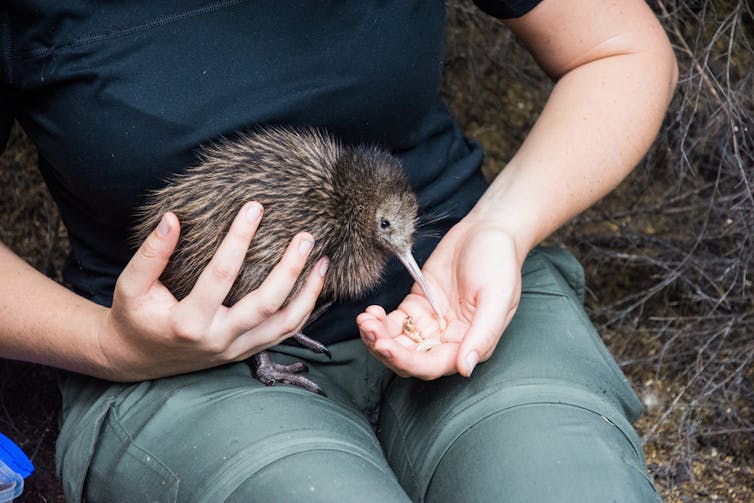
Meet The ‘Elementaves’
Our genome study revealed a new grouping of birds we have named “Elementaves”. With a name inspired by the four ancient elements of earth, air, water and fire, this group includes birds well adapted for success on land, in the sky and in the water. Some of the birds have names relating to the sun, representing the element of fire. The Elementaves group includes hummingbirds, shorebirds, cranes, penguins and pelicans.
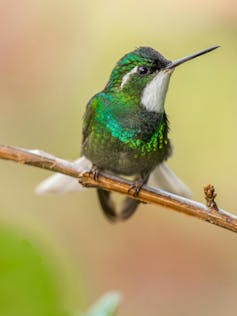
Our study also confirms a close relationship between two of the most familiar groups of birds in Australia, the passerines (songbirds and relatives) and parrots. These popular birds dominate the Australian Bird of the Year polls.
Songbirds make up nearly 50% of all bird species and include birds like magpies, finches, honeyeaters and fairywrens. They had their humble beginnings in Australia about 50 million years ago, then spread across the globe to become the most successful group of birds.
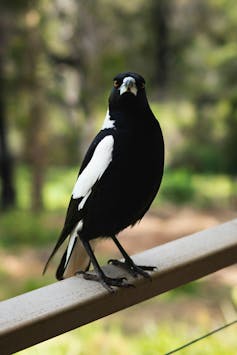
When Did Birds Really Emerge?
A further goal of our study was to place a timescale on the bird family tree. We did this by modelling the evolution of genomes using a tool known as the “molecular clock”. By drawing on information from nearly 200 fossils, we were able to constrain the ages of some of the branches in the bird family tree.
Our study shows all living birds share an ancestor that lived just over 90 million years ago. But most groups of modern birds emerged about 25 million years later, within a small window of just a few million years after the end of the Cretaceous period around 66 million years ago.
This coincides with the mass extinction of dinosaurs and other organisms caused by an asteroid striking Earth. So it seems birds made the most of the opportunities that became available after these other dominant life forms were wiped out.
One Mystery Remains
The genome study is the product of nearly a decade of research, conducted as part of the Bird 10,000 Genomes Project. The ultimate goal of this project is to sequence the genomes of all 10,000 living bird species.
The current phase of the project focused on including species from every major group, or family, of birds. The study of these 363 genomes was a truly international effort led by researchers at the University of Copenhagen, University of California San Diego and Zhejiang University in China.
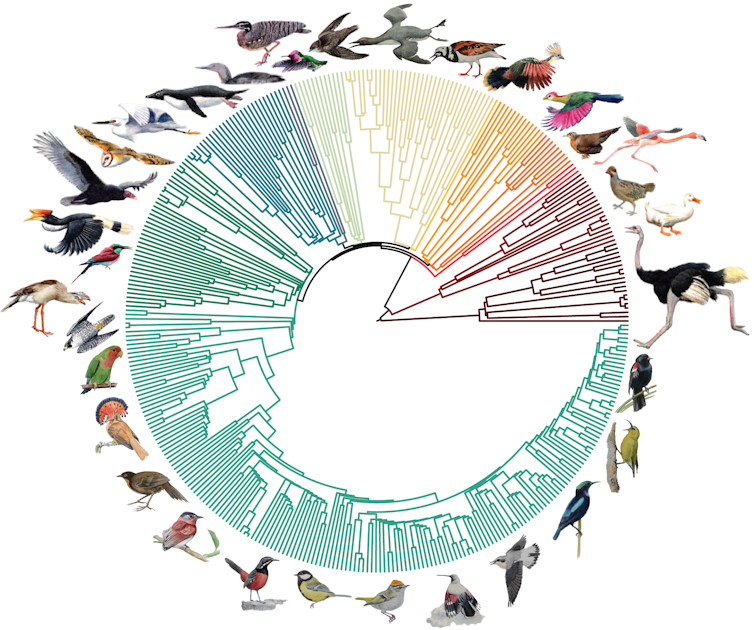
Even with such a huge amount of genome data, one branch of the bird family tree remains a mystery. Our analysis could not confidently determine the relationships of one of the orphans, the hoatzin. Found in South America, the hoatzin is a highly distinctive bird and the sole survivor of its lineage.
Our study shows that some relationships in the tree of life can only be determined using huge amounts of genome data. But our study also demonstrates the power of studying genomes and fossils together to understand the evolutionary history of life on Earth. ![]()
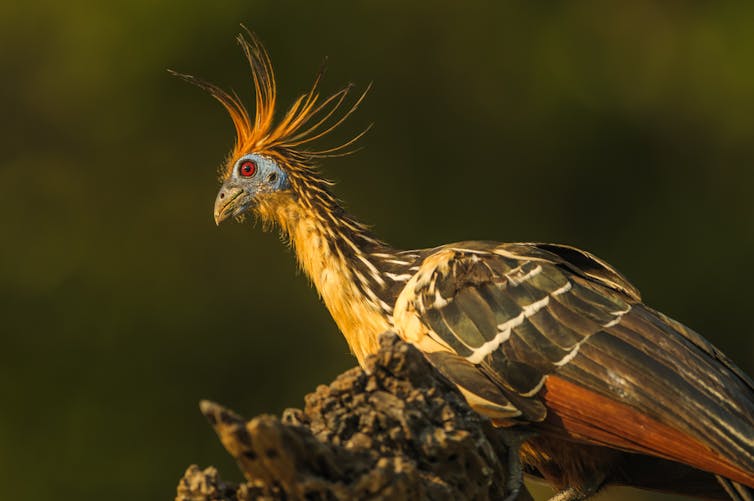
Jacqueline Nguyen, Scientific Officer in Ornithology, Australian Museum, and ARC DECRA Fellow, Flinders University and Simon Ho, Professor of Molecular Evolution, School of Life and Environmental Sciences, University of Sydney
This article is republished from The Conversation under a Creative Commons license. Read the original article.
Australian ‘bush glass’ bears the fingerprints of a cosmic collision with an iron meteorite
Aaron J. Cavosie, Curtin UniversityHow Earth and the other planets of the solar system formed and evolved over the aeons is a hot question for planetary scientists like me. One of the best ways to find out is by looking at rocks from space.
Getting the rocks is the hard part. Sending spacecraft to asteroids or other planets to gather samples and bring them home is possible, but extremely difficult and expensive.
Another option is to study space rocks that fall to Earth: meteorites. However, they are relatively rare, and the journey through our planet’s atmosphere followed by a high-speed collision with the ground often means they’re not in very good condition by the time we get a look at them.
That said, meteorites do leave fascinating traces. In a new study, my colleagues and I analysed lumps of glass found around a 5,000-year-old meteorite impact site in the Northern Territory and discovered it contains a surprisingly large amount of metal from the meteorite itself – proving the craters at the site were formed by a cosmic interloper and giving clues about the intruder’s composition.
Natural Glasses
We’re all familiar with the human-made kind of glass found in windowpanes and kitchenware. But glass occurs in nature, too. Most of it is obsidian, the glass produced in volcanoes which has been known since ancient times.

A much smaller amount of natural glass is produced by lightning strikes and asteroid impacts. When we find glass in nature, it can take careful forensic work to pinpoint what created it. However, the forensic analysis can reveal a surprising amount of information about the origin of the glass.
In our study, published in Geochimica et Cosmochimica Acta, we analysed glass from a site in the NT called the Henbury crater field.
Meteorite fragments have been recovered from the site, where there are at least 13 impact craters formed in an event around 5,000 years ago. The crater field is also called Tatyeye Kepmwere, and reports of it are found in Aboriginal oral traditions.
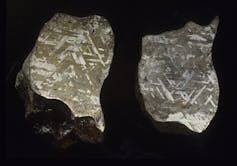
The meteorites recovered from the Henbury field are a type called IIIAB irons. They are remnants of the metallic core of an ancient shattered world and were eventually delivered to Earth. They’re essentially lumps of metal, comprised mostly of iron, nickel and cobalt.
Heavy Metal–Classic Rock Fusion
When the space rock struck at Henbury, the heat of the impact melted the meteorite along with rock from the ground. Some of this fused material formed molten droplets which was thrown from the craters and cooled to form thumb-sized lumps that look a lot like volcanic glass.
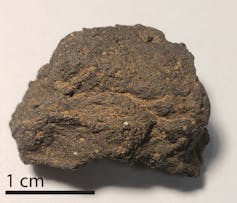
To find out more about this “bush glass”, we took samples to the laboratory and shot holes in them with a laser, heating the glass into a hot plasma we could study with a mass spectrometer, which can determine which elements are present.
This revealed the glass contained elements from the local sandstone as well as high levels of iron, nickel and cobalt – much more than we found in exposed rocks in the craters. These results suggest the glass is made of about 10% melted meteorite.
A 10% meteorite contribution might not seem like a lot, but it’s a relatively enormous amount. By comparison, melted rocks from Chicxulub, the giant asteroid strike in Mexico widely believed to have killed off the dinosaurs, are typically less than 0.1% meteorite.
The Henbury glass also contained elevated levels of chromium, iridium and other elements from the platinum group. All of these are vanishingly rare in most rocks on Earth’s surface. Their high abundance in Henbury glass is another hallmark of a cosmic origin.
Meteorite Glass Around The World
Such high levels of meteorite residue in glass have not been reported from other Australian craters.
Similar glass has been described at two other sites, both younger and smaller than the largest Henbury crater (145m across). One is the 45m Kamil crater in Egypt, and the other is the 110m Wabar crater in Saudi Arabia.
Around 200 meteorite impact structures have been documented on Earth, with 32 located in Australia.
We think meteorite-rich glass like we found at Henbury forms in all craters, regardless of size. However, it likely represents a very small volume of the melt formed at large craters, and is best preserved at young craters that haven’t been eroded.
Our main motivation to search for meteorite residue in natural glass is that it provides ground-truth evidence for an impact with a celestial object. Many circular, crater-like features occur on Earth’s surface, but few have a truly cosmic origin.
Discovery of meteoritic residue in glass is an unambiguous method to confirm that a suspect site was made by an asteroid strike.
More Enigmatic Glasses
There are many reports of enigmatic natural glasses, in places such as Argentina, Australia and elsewhere, whose origins are ambiguous. In many cases no crater is known in the vicinity, such as Libyan desert glass. Determining whether they have an impact origin requires careful detective work to look for the telltale signs.
NASA is currently weighing up spending US$11 billion or so to bring a few hundred grams of rock samples from Mars collected by the Perseverance rover. Missions to Itokawa, Ryugu and Bennu have returned samples of asteroids, and a flood of new missions to the Moon will hopefully return fresh samples of our planetary neighbour.
In the meantime, there are lots of interesting bush glasses that deserve a second look for clues of a cosmic heritage. ![]()
Aaron J. Cavosie, Senior research fellow, Curtin University
This article is republished from The Conversation under a Creative Commons license. Read the original article.
A 20-year ‘mega-drought’ in Australia? Research suggests it’s happened before – and we should expect it again
Georgina Falster, Australian National University; Nerilie Abram, Australian National University, and Nicky Wright, University of SydneyDroughts can have dramatic effects in Australia – decimating agriculture, threatening water resources and devastating the environment. Much of Australia is drought-prone, and the risk is expected to increase as global warming continues.
That’s why it’s important for Australia to be prepared for droughts, particularly those lasting multiple years.
To have some idea of just how bad things might get, we must look far back in time to see what’s come before. That’s where our new research comes in.
We examined computer simulations of Earth’s climate over the past 1,150 years. Worryingly, we found that given enough time, natural variability in Australian rainfall can produce “mega-droughts” lasting 20 years or more. If we add in human-caused climate change, it suggests future droughts will be far worse than we imagined.
Rainfall Records Aren’t Enough
To understand the full picture of future droughts, we need historical rainfall data. But in Australia these records only go back to around the year 1900. This doesn’t fully record the huge range of natural rainfall variability over many hundreds of years.
To a degree, we can get these long records from features of the environment such as trees, which record information about rainfall changes in their annual growth rings. Unfortunately, these natural “archives” generally only reach back a few hundred years. And they only store information about what’s happened in their local area, not across all of Australia.
Scientists need alternative ways of looking back in time – and that’s what our new research set out to do.
We used computer models of Earth’s climate from the years 850 to 2000 (1,150 years in total) to fill in the picture. The models simulate the interactions of the atmosphere, oceans, ice and land, and so provide a picture of how the climate has changed through time.
Because no single climate model is perfect, we used an “ensemble” of 11 different climate models to explore the range of droughts Australia has experienced.
First, we looked at the characteristics of Australian droughts due to natural fluctuations in rainfall. Then we compared the simulated droughts during the 20th century with those from the pre-industrial period (before the year 1850). This let us test if human-caused climate change during the past century has caused detectable changes in Australian droughts.
We paid particular attention to the Murray-Darling Basin in south-eastern Australia. It contains Australia’s largest river system and is our largest agricultural region, so it’s important to know how bad droughts there could be.
Our Results
We found during the 20th century, simulated droughts in southwestern and eastern Australia – including the Murray-Darling Basin – were longer on average compared with pre-industrial times.
This change is consistent with the rainfall trends expected in these regions in future due to human-caused climate change. It suggests that an emerging human influence on our climate has already made southern parts of Australia more drought-prone.
Other characteristics of simulated Australian droughts, such as their intensity or recurrence, didn’t show marked differences last century compared to pre-industrial times. In other words, human-caused climate change had probably not yet caused Australian droughts to be any drier, or changed how often we are in drought. But this influence could still emerge as climate change worsens.
The devastating impacts of Australia’s last major drought from 2017 to 2019, known as the “Tinderbox” drought, are a stark reminder of what we might expect in future. The drought was likely worsened by human-caused climate change, and preceded the catastrophic Black Summer fires.
How Bad Could Australian Droughts Be?
One of the most concerning findings from our research is that even without the effects of climate change, natural variability can produce “mega-droughts” in Australia lasting 20 years or more. That is far longer than any drought that has been experienced in Australia since instrumental records began.
Our findings show mega-droughts are possible across the Australian continent. This includes the Murray-Darling Basin where typical droughts last century lasted four to five years. The graphic below shows the worst of these since direct rainfall records began. A 20-year drought would make these extremes seem short-lived.
Mega-Droughts Are Possible In Australia
This new research shows mega-droughts in Australia are possible – even without the influence of climate change. They are a natural part of Australian rainfall variability over the long term. This finding is supported by evidence drawn from ice cores, which suggests a 39-year drought gripped eastern Australia around 800 years ago.
This is concerning, because climate change is also increasing the chance of reduced rainfall across much of southern Australia.
It’s difficult to imagine a drought lasting several decades. But our research suggests it can happen, and future droughts in Australia will be worse than any in our recent historical experience.
Our work highlights the need to consider the unthinkable when it comes to preparing for future droughts. This has implications for industry, governments and communities as they adapt to a warmer future.![]()
Georgina Falster, Postdoctoral Fellow, Australian National University; Nerilie Abram, Chief Investigator for the ARC Centre of Excellence for Climate Extremes; Deputy Director for the Australian Centre for Excellence in Antarctic Science; Deputy Director for the Centre of Excellence for 21st Century Weather, Australian National University, and Nicky Wright, Research Fellow, University of Sydney
This article is republished from The Conversation under a Creative Commons license. Read the original article.
Myrtle rust is lethal to Australian plants. Could citizen scientists help track its spread?
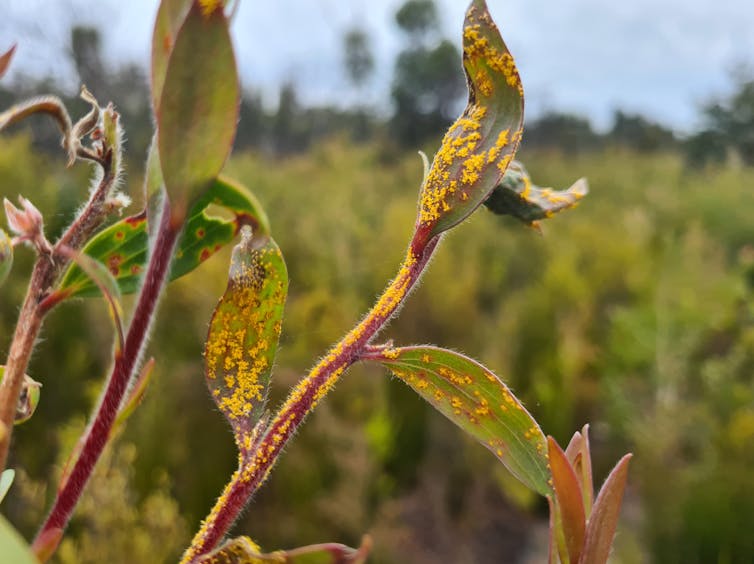
Every weekend, thousands of citizen scientists head into the great outdoors. If they see an unusual animal, plant or fungi, they take a photo and upload it.
This simple act by bushwalkers with smartphones is, in aggregate, increasingly valuable to researchers. Half of all records uploaded to Australia’s largest open-data aggregator, the Atlas of Living Australia, now come from citizen scientists – and this number is likely to keep growing.
Citizen science isn’t just useful in gauging how native species are going. Curious eyes spot invasive species too. The first sighting of the invasive buff-tailed bumble bee (Bombus terrestris) in Victoria was reported by a citizen scientist last year. The first discovery of a virus which turns woodlice (slaters) iridescent purple came from a citizen scientist. To date, reports from citizen scientists strongly favour native species. But as we grapple with damaging new invasive species, we need much more data.
We have been working to track the spread of the lethal plant fungus, which causes the disease myrtle rust, which can weaken and kill hundreds of our most loved tree species, including eucalypts, paperbarks, bottlebrushes, tea trees and lilly pillies. How far has it spread? We just don’t know. We urgently need more reports from bush tracks and backyards.
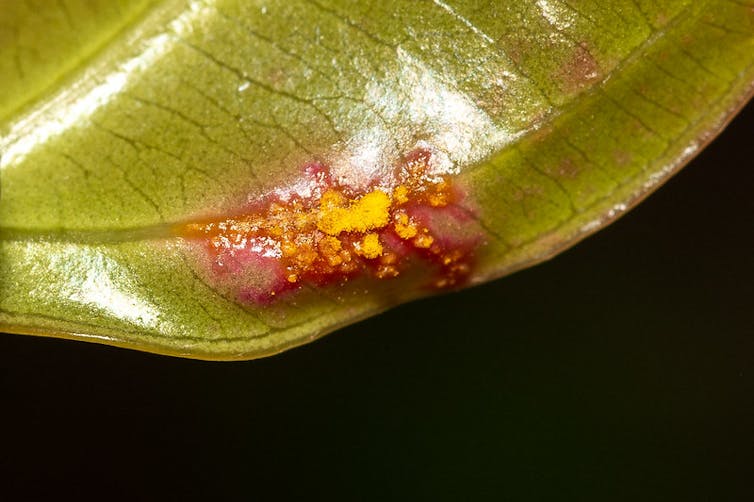
Why Is Myrtle Rust So Bad?
“Myrtle rust” sounds almost cute. It’s not. Austropuccinia psidii is a highly invasive fungal pathogen native to South America, which arrived in New South Wales in 2010. Windborne spores let the fungus spread rapidly up and down the east coast. By 2015, it had arrived in Tasmania and the Northern Territory, and by 2022 it was in Western Australia. Spores have been detected in South Australia, but no infections have yet been reported.
When the spores land on a plant, the fungus begins to feed on the plant’s nutrients and causes myrtle rust disease. In severe cases, the fungus overruns the plant and it suffers dieback. The disease has already driven native guava (Rhodomyrtus psidioides) and scrub turpentine (Rhodamnia rubescens) to localised extinction in areas of Queensland and New South Wales where they were previously common. At least 15 species of rainforest tree are threatened with extinction. The fungus can infect at least 380 Australian species in the Myrtaceae family.
You can spot myrtle rust by its clusters of bright yellow powdery spores on the new leaves, fruits, flowers or stems of plants in the myrtle family. Each cluster has thousands of spores which can be easily carried by the wind or hitching a ride on your clothes to a new host plant to infect. It’s important to avoid touching the rust to reduce its spread.
What Role Can Citizen Science Play?
We now have more than 130 million observations recorded in the Atlas of Living Australia, ranging from common species such as Australian magpies (Gymnorhina tibicen) to little-known species such as the sand ghost shrimp (Arenallianassa arenosa). Of all these records, only about 2% are of invasive species.
Why? Most citizen scientists get into it because they love native plants, animals and fungi. They may not realise the value of reporting invasive species.
It’s very common to think biosecurity is about the border. But conserving Australia’s wealth of biodiversity doesn’t stop at the airport. Even once an invasive species has arrived, there is much that can be done to reduce the damage. For example, citizen scientists in Queensland have logged reports of highly invasive weed species such as new types of prickly pear cactus (Opuntia spp.). Early warnings like this allow authorities to eradicate plants likely to have been illegally dumped.
We know when communities see an invasive species has become a major problem, they will see the value of recording and reporting it via platforms which feed data into the Atlas of Living Australia.
We know myrtle rust has been observed in most states and territories. But we have little up to date information away from the eastern seaboard.
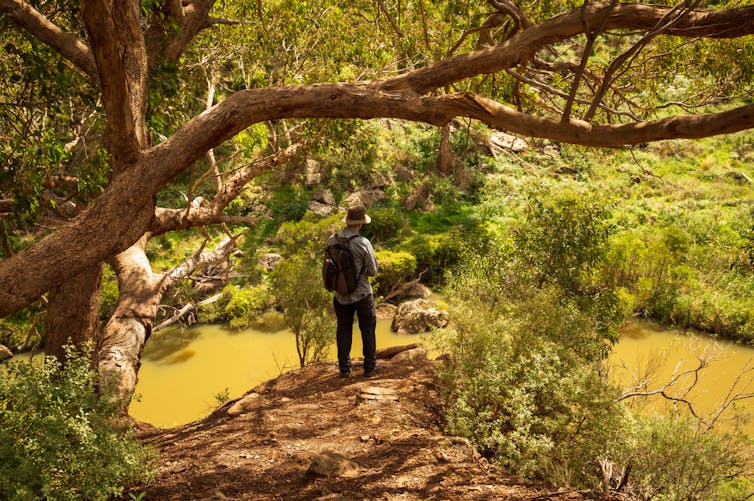
When an invasive species arrives in a new area, it’s essential we find out as soon as possible. Biosecurity rests on early detection. There’s often a very small window to eradicate the species before it spreads. We couldn’t eradicate varroa mite, which devastates beehives, and are struggling to control fire ants.
Even when it’s too late for eradication, as with myrtle rust, occurrence data can help us blunt the damage. Of particular interest is understanding how far it has spread and what plant species are most susceptible to myrtle rust. This information can help researchers tailor new chemical tools against the rust.
We know other strains of the rust outside Australia could actually pose an even worse threat. If these strains arrive or if the rust in Australia evolved in similar ways, it could accelerate the damage. Eyes on the ground help us track changes to pathogen behaviour.
We need, in short, data coming in constantly. This challenge is beyond the resources of professional researchers. Combining research fieldwork with citizen science reports is shaping up as an excellent way to get a better picture.
One reason citizen scientists are so valuable is that many have access to areas not usually observed by scientists, such as home gardens, rural acreage and hiking tracks.
Citizen science is remarkably easy. Free, open-source citizen science apps such as iNaturalist and NatureMapr add the photos you take to the repository of species data we are amassing.
Every photo and observation counts. We really do need your eyes. ![]()
Erin Roger, Sector Lead, CSIRO; Alyssa Martino, PhD Candidate , University of Sydney, and Rebecca Paxton, Doctoral student, University of Adelaide
This article is republished from The Conversation under a Creative Commons license. Read the original article.
Without community support, the green energy transition will fail. Here’s how to get communities on board
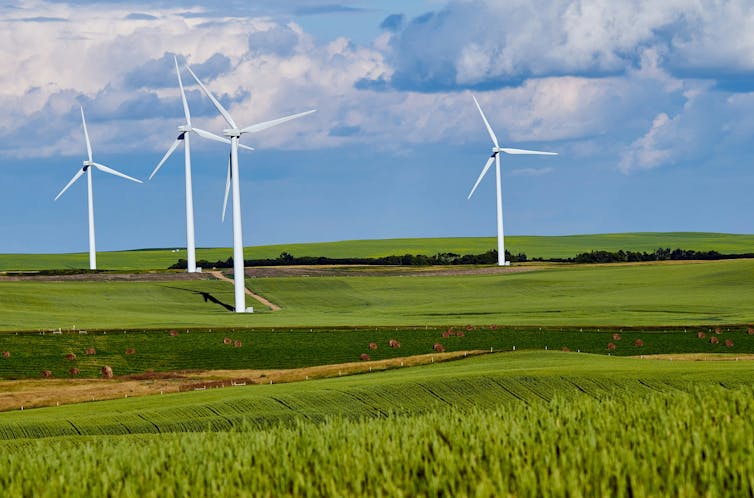
Connecting cheap, clean energy from renewables comes with a hidden cost and challenge: building 5,000 kilometres of new transmission lines this decade, and another 5,000km after that. This sounds like a lot, but 5,000km is only around 10% of the existing grid network, and unlocks more than 32 gigawatts of new clean energy capacity by 2030.
The problem is, communities are often not sold on having to host new transmission lines. As the recent review of community engagement by renewable and transmission companies demonstrates, this is because it wasn’t explained well to these communities as to why it’s needed and how they can benefit.
We already know uncertainty undermines the social license for big projects. And we know public engagement is vital in translating national policies into local impacts.
In my research, I work with RE-Alliance, a community organisation working to help local communities actually benefit from the energy transition. In the course of this research, rural residents often say they would like to host wind turbines on their property. But we have seen those same residents oppose new transmission line projects – without realising the wind farm will not be viable without this infrastructure.
When these projects succeed, it’s because developers engage early and often with communities, showing them why the project matters to society – and to them.
Projects are much more likely to succeed when communities feel the project is theirs or includes them.
Community Pushback Could Scupper The Green Transition
Community scepticism is not unique to Australia.
More than two-thirds of Americans favour renewables over fossil fuels. But when it comes to actually building them, opposition is common. Around 300 wind, solar and transmission projects are being delayed by local opposition, stalling A$132 billion of investments and 74,000 jobs.
In some respects this is understandable. Communities can bristle if they feel a project is imposed on them – especially if it feels like a cost without benefits.
Developers who engage with communities from the beginning and work to tackle concerns and issues collectively have a better chance of success. Equitable sharing of benefits can help.
Focus On Local Benefits
Almost 20 new renewable projects are planned in Victoria’s Wimmera Southern Mallee region near the Grampians. Until now, solar farms in this flat, sunny region have been hamstrung by a lack of transmission lines. But some local residents are strongly sceptical of transmission projects, which means some renewable projects can’t proceed.
Even so, progress is being made, due in part to the efforts of regional development organisation, Wimmera Southern Mallee Development, to broker between community and developers. As the organisation’s CEO Chris Souness told me:
Renewable energy will thrive [in this region] if developers and communities collaborate, the interests of the farming communities and rural towns are supported, and the benefits flow to communities.
The region is in need of jobs, more diverse industries, workforce reskilling, and better housing stock. These are all things renewable and transmission projects can help provide.
It’s a similar story in the South West Renewable Energy Zone in New South Wales, one of several laid out by the state government to boost efficiency by grouping big solar and wind projects with existing or new transmission lines.
The zone has led to a renewable gold rush, as developers scout for good locations. But what does it mean for people? The Hay Shire Council last year asked its 3,000 residents what they thought.
The council took the lead on consultation to increase community influence and make clear to renewable developers what the community does and does not want. The alternative was to have many developers running their own consultation efforts.
The consultation revealed some residents felt overwhelmed by the interest from developers. Others worried wind and solar farms could damage the local environment. Would there be enough housing for workers, given the existing housing crisis? And what about the visual impact of large transmission lines? In the consultation document, council staff note:
It is very important that the development of renewable energy projects in Hay Shire happens “with” our community, not “to” our community.
How Do We Do Better When Time Is So Short?
The conundrum we face is we know we need to do better, but we have only a narrow window of time to green the grid.
One avenue is to focus on the long-term prosperity of these projects, both for landowners hosting them and for the broader community. Local leadership here is essential, as are First Nations voices and leadership in clean energy.
For farmers battling increasingly volatile growing and grazing conditions due to climate change, renewables offer new income streams. Typical payments by wind companies are now more than A$40,000 per turbine per year.
Many farmers host dozens of turbines while still farming sheep or cattle. For solar projects, farmers can earn around $1,500 per hectare per year in rent and can keep running sheep under the panels. Landowners willing to host new high voltage transmission lines can get payments from $200,000 to $300,000 a kilometre depending on the state.
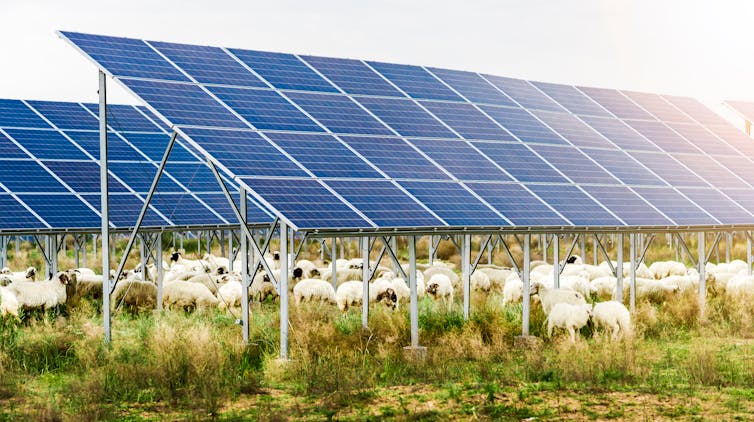
But we will also need national action.
The federal government must find ways of better communicating their plans at local level. Explain why we need to do this, what the benefits are to communities, and why transmission is key.
The government could consider a CSIRO-based research centre focused on environment, technology and social outcomes in the energy transition.
And the government could invest in local energy hubs where people can ask questions, get information, and find out ways of sharing benefits. These hubs could work alongside existing project shopfronts, such as the ENGIE hub in Hay.
As James Joyce wrote, mistakes are the portals of discovery. We need to learn quickly from the early opposition so we can avoid repeating our mistakes. ![]()
Simon Wright, Senior Research Fellow, Energy & Circularity, Gulbali Institute, Charles Sturt University
This article is republished from The Conversation under a Creative Commons license. Read the original article.
Only 57 producers are responsible for 80% of all fossil fuel and cement CO2 emissions since 2016 – new report
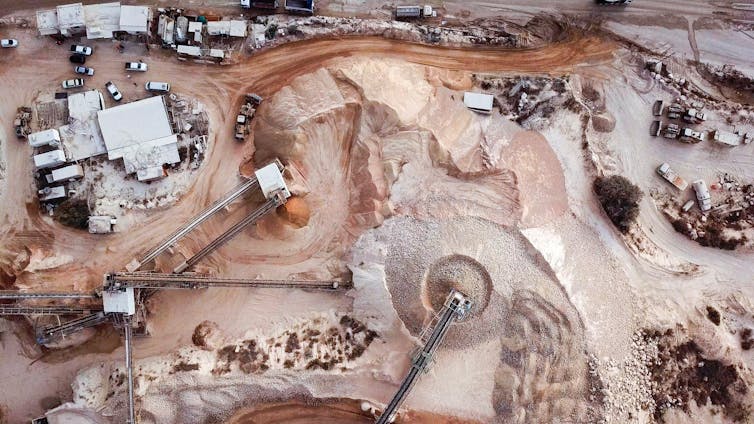
Just 57 companies and nation states were responsible for generating 80% of the world’s CO₂ emissions from fossil fuels and cement over the last seven years, according to a new report released by the thinktank InfluenceMap. This finding suggests that net zero targets set by the Paris climate change agreement in 2015 are yet to make a significant impact on fossil fuel production.
The report uses the Carbon Majors database, established in 2013 by Richard Heede of the Climate Accountability Institute, to provide fossil fuel production data from 122 of the world’s largest oil, gas, coal and cement producers.
The InfluenceMap report tells a sobering but informative story of the state of production in these high-emitting industries. Cement and fossil fuel production has reached unprecedented levels, with most of the emission growth traceable to a relatively small number of large companies.
The troubling reality is that the lack of progress of these large fossil fuel companies means the world will need to undertake ever more stringent and steep decarbonisation trajectories if countries are to meet the Paris agreement goal of keeping warming well below 2°C.
The Carbon Majors database highlights how critical it is for companies and countries to be held accountable for their lack of progress on emission reductions. Companies need to define exactly how best to align with the Paris goals, and then monitor and track their progress.
To address this need, our team of researchers from the Universities of Queensland, Oxford and Princeton developed a framework that outlines strict science-based requirements for tracking the progress of companies against Paris-aligned pathways.
By applying this framework to the Carbon Majors database in a follow-up study, our team mapped production budgets for 142 fossil fuel companies against several Paris-aligned global scenarios of the Intergovernmental Panel on Climate Change.
We considered the “middle-of-the-road” future scenario whereby business carries on as usual – this is commonly used by investors to evaluate a company’s climate risks. With this scenario, we found that between 2014 and 2020, the coal, oil and gas companies produced 64%, 63% and 70% respectively more than their budgets allow. Further details can be found on the Are You Paris Compliant? website.
Transparency Is Crucial
Over the seven-year period covered by the InfluenceMap report, nation states and state-owned companies are responsible for most of this growth. It is not yet clear whether such government-run companies will move towards improved reporting against climate standards, but further interventions by governments will clearly be required to meet stated national emission-reduction goals.
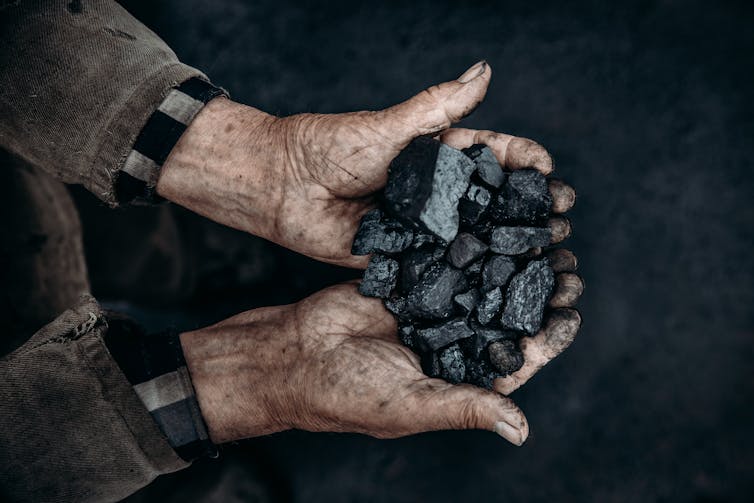
Fortunately, more transparency will be available for investor-owned companies. In 2023, a non-profit that aims to standardise global accounting, the International Financial Reporting Standards Foundation, released new climate-related disclosure standards. These should provide investors, politicians and the public with access to more transparent and consistent data, making it much easier for them to accurately judge companies’ climate performance – or lack thereof.
It will be interesting to read the climate reporting of the 57 companies identified by InfluenceMap in coming years. The release of the Carbon Majors data, along with the new climate-related disclosure standards, will hopefully make a huge difference. Companies being more accountable for their emissions should help reduce greenwashing in corporate sustainability reports.
Quantifying fossil fuel and cement production, and associated emissions, is a crucial step. But companies also need to act. Achieving net zero by reducing the emissions of a relatively small number of companies will be much easier than persuading 8 billion people to take collective action on climate.
Such drastic reductions in fossil fuel production must also be matched by investment in abundant and increasingly cheap sources of clean renewable energy. Without these steps, the Paris goals will be unachievable – and that’s very risky for all of us.
Don’t have time to read about climate change as much as you’d like?
Get a weekly roundup in your inbox instead. Every Wednesday, The Conversation’s environment editor writes Imagine, a short email that goes a little deeper into just one climate issue. Join the 30,000+ readers who’ve subscribed so far.![]()
Matthew Carl Ives, Senior Researcher in Economics, University of Oxford; Belinda Wade, Adjunct Associate Professor, School of Business, The University of Queensland, and Saphira Rekker, Senior Lecturer in Sustainable Finance, The University of Queensland
This article is republished from The Conversation under a Creative Commons license. Read the original article.
Out of alignment: how clashing policies make for terrible environmental outcomes
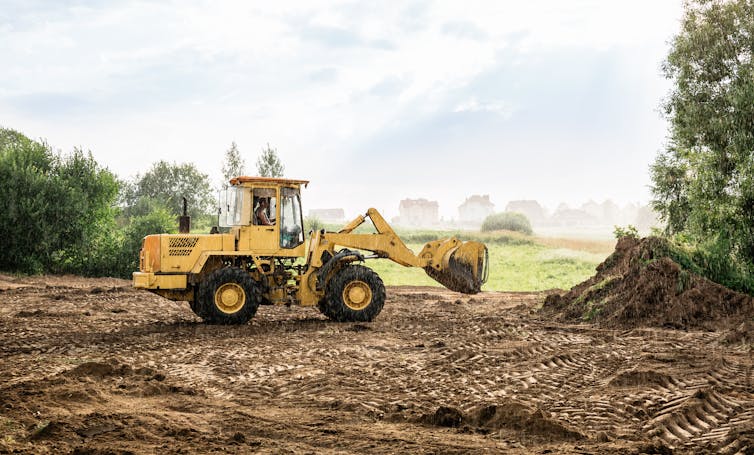
Policy alignment sounds dry. But think of it like this: you want to make suburbs cooler and more liveable, so you plant large trees. But then you find the trees run afoul of fire and safety provisions, and they’re cut down.
Such problems are all too common. Policies set by different government departments start with good intentions only to clash with other policies.
At present, the Albanese government is working towards stronger environmental laws, following the scathing 2020 Samuel review of the current Environment Protection and Biodiversity Conservation Act. The review noted planning, funding and regulatory decisions are “not well integrated or clearly directed towards achieving long-term environmental sustainability”.
Stronger laws are not a standalone answer. We must find ways to align government policies far better, so progress on one front doesn’t lead to a setback elsewhere. As the government prepares to announce once in a generation changes to our main environment laws, it must find ways to reduce these clashes.
Nature Vs Cities
All levels of government have policies aimed at increasing canopy cover and biodiversity in cities. How hard can it be to plant trees?
The problems start when you look for places to actually plant street trees. It’s common to encounter a wall of obstacles, namely, other policies and regulations. Fire prevention, human safety, visibility for road traffic and provision of footpaths and carparks are often legally binding requirements that can stymie this seemingly simple goal.
Most cities in Australia are now actually losing canopy cover rather than gaining more.
On the biodiversity front, urban sprawl is pushing many species and ecosystems to the brink of extinction.
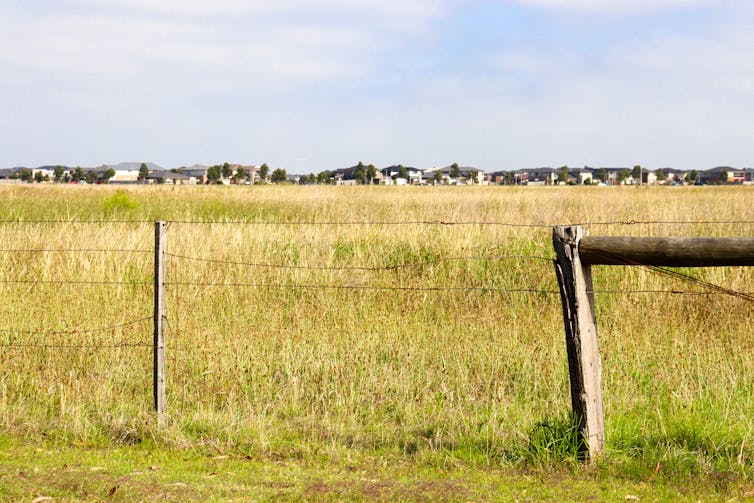
Last year, conservationists rediscovered the grassland earless dragon on Melbourne’s grassy western fringes, which we had believed was extinct. Now we had a second chance to save it, in line with the Australian government’s pledge to stop extinctions.
The problem? The grasslands where the dragon was found near Bacchus Marsh, just outside Melbourne, are zoned for housing. Only 1% of the grasslands ecosystems suitable for these reptiles is still intact, and much of it has been earmarked for housing.
From a housing point of view, the continued existence of the dragon now threatens plans for 310,000 homes.
If we had better policy alignment, we would look to achieve both goals: protect the dragon and build more housing through methods such as building sustainable midrise developments in established urban areas.
Protecting The Reef While Exporting LNG
Meanwhile, the Great Barrier Reef is bleaching again, the fifth bout in just eight years.
Almost all the extra heat trapped by greenhouse gases goes into our oceans, triggering marine heatwaves and bleaching. If the world’s largest living structure bleaches too much, it will begin to die, threatening its rich biodiversity, cultural heritage and industries such as tourism.
On the one hand, Australia wants to protect the reef and has funded efforts to boost water quality.
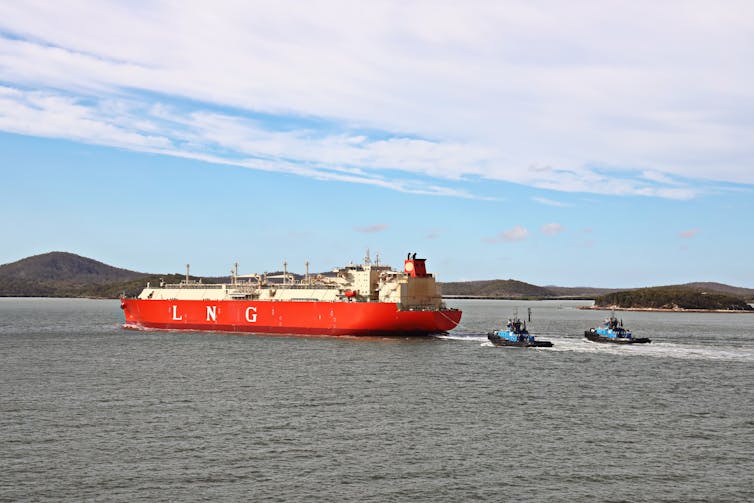
But on the other hand, supportive government policies contribute to our recent emergence as a top exporter of liquefied natural gas, which is 85–95% comprised of the potent greenhouse gas methane. Land clearing in the catchments of rivers which flow to the reef is ongoing due to policy loopholes, which adds more smothering sediment, nutrients and pollutants to the reef’s woes.
The shipping sector only has to abide by a voluntary code to avoid invasive species arriving in the ship’s bilge water, even though they could be carrying the tissue loss disease devastating reefs in the Caribbean and Florida.
Renewables Versus Biodiversity
Calls to fast-track clean energy projects and stop them being held up by environmental approvals are risky. We could tackle one crisis (climate change) by making another worse (biodiversity and extinction).
Australia has destroyed nearly 40% of its forests since European colonisation, with much of the remaining native vegetation highly fragmented. Because this clearing has already happened, it should be entirely possible to build renewables without damaging the homes of native species.
In fact, we can do better – we can take degraded farmland, build solar on it and restore low-lying native vegetation around it to actually boost biodiversity. Requiring new renewable projects to be nature positive would encourage creative approaches to delivering infrastructure while benefiting nature.
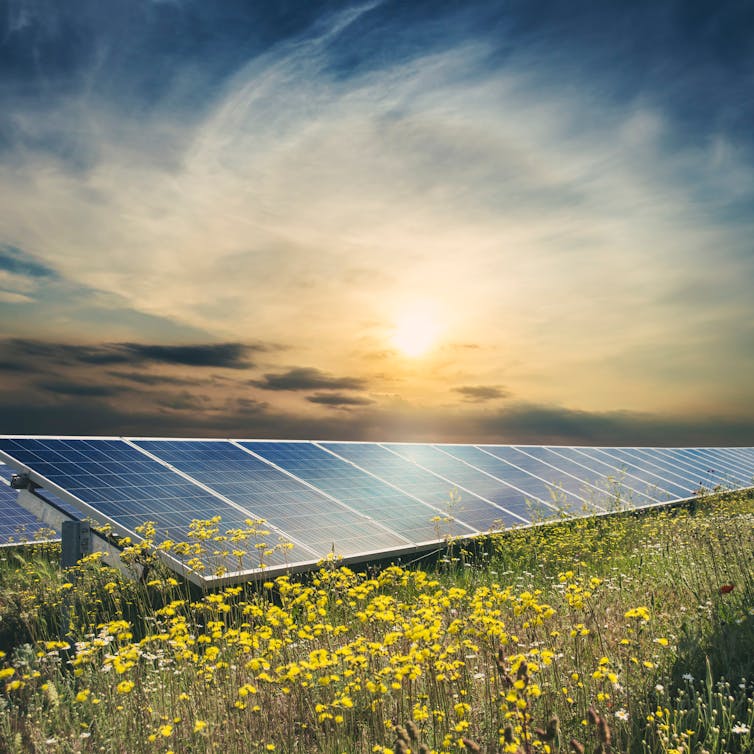
Policy Clashes Abound
There is, sadly, no shortage of examples of clashing policies:
Victoria’s “wild dog” bounty pays landowners to kill the dingo, a listed threatened native species
relaxing new emissions rules for utes and vans conflicts with government climate efforts to rapidly reduce emissions
exotic plant species such as buffel grass are still routinely used and promoted for use in agriculture, despite the damage they do to biodiversity and their ability to fuel more severe fires, more often.
Why The Lack Of Alignment?
For politicians, the environment ministry is often seen as a poisoned chalice.
Within government, departments often pull in different directions. When resource and agriculture plans conflict with environmental concerns, it’s not hard to guess which side tends to win. Case in point: the recent plans to remove gas project oversight from environment minister Tanya Plibersek in favour of resources minister Madeleine King.
How can we make policies work together better for the environment? Governments should sift through all relevant policies and regulations to make sure nature-positive approaches are embedded. Requiring development proposals to benefit nature would go a long way to reducing environment-economy conflict. After all, most businesses are now looking into ways of becoming nature-positive.
Too often, environment policies are seen as opposed to those promoting the economy, jobs and industry. But they don’t have to clash.
Tremendous opportunities exist for a safer, more sustainable future, if we address current causes of friction and take a big picture approach to how we develop our policies. ![]()
Euan Ritchie, Professor in Wildlife Ecology and Conservation, School of Life & Environmental Sciences, Deakin University; Catherine Lovelock, Professor of Biology, The University of Queensland, and Sarah Bekessy, Professor in Sustainability and Urban Planning, Leader, Interdisciplinary Conservation Science Research Group (ICON Science), RMIT University
This article is republished from The Conversation under a Creative Commons license. Read the original article.
The Southern Ocean has the cleanest air on Earth. We have just discovered why
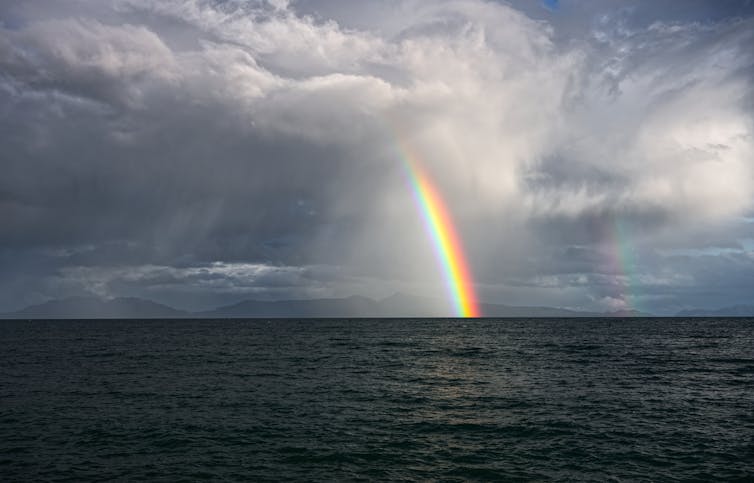
The Southern Ocean is renowned for having the cleanest air on Earth. But the precise reasons why have remained a mystery, until now.
There’s more to it than just a lack of human activity. Yes, there are fewer people down there using industrial chemicals and burning fossil fuels. But there are natural sources of fine particles too, such as salt from sea spray or dust whipped up by the wind.
Regardless of origin, fine solid particles or liquid droplets suspended in air are known as “aerosols”. We consider clean air to have low levels of aerosols, without discriminating between natural or industrial sources.
Our recent research discovered clouds and rain play a crucial role in scrubbing the atmosphere clean.
Understanding The Role Of Clouds And Rain
Aerosol levels over the Southern Ocean are influenced by a range of factors. These include the amount of salt spray and seasonal variation in the growth of tiny plant-like organisms called phytoplankton, which are a source of airborne sulphate particles.
Fewer sulphates are produced during winter, which is when the air over the Southern Ocean is most pristine.
But that’s not the full story. The Southern Ocean is also the cloudiest place on Earth. It experiences short-lived, sporadic showers like nowhere else. We wanted to understand the role of clouds and rain in cleaning the air.
The biggest barrier to understanding these processes has always been the lack of high-quality observations of clouds, rainfall and aerosols in this poorly observed region of the world.
Thankfully, a new generation of satellites allows us to study images of clouds in unprecedented detail. We developed a computer program to recognise different cloud patterns over a vast area of the Southern Ocean.
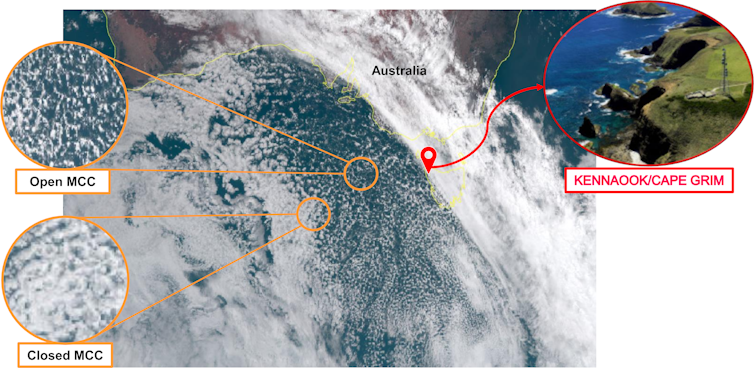
In particular we were on the lookout for distinctive honeycomb-shaped patterns in the cloud field. These honeycomb-like clouds are of great interest because they have a major role in regulating the climate.
When the honeycomb cell is filled with cloud or “closed” it is whiter and brighter, reflecting more sunlight back to space. So these clouds help keep the Earth cool.
Empty or “open” honeycomb cells, on the other hand, let more sunlight in.
These intricacies remain a source of error in modelling the Earth’s climate because they are not being properly included. It’s important to get the balance of open and closed cells right, or the results can be way off.
Whether the honeycomb cells are open or closed also relates to the amount of rainfall they can produce.
The cells are big enough to be seen from space, around 40-60km in diameter. So we can study them using satellite images.
Our research is particularly timely given this month’s launch of a cloud and precipitation experiment at Kennaook/Cape Grim in Tasmania. It aims to get higher resolution data on clouds, rain and sunlight.
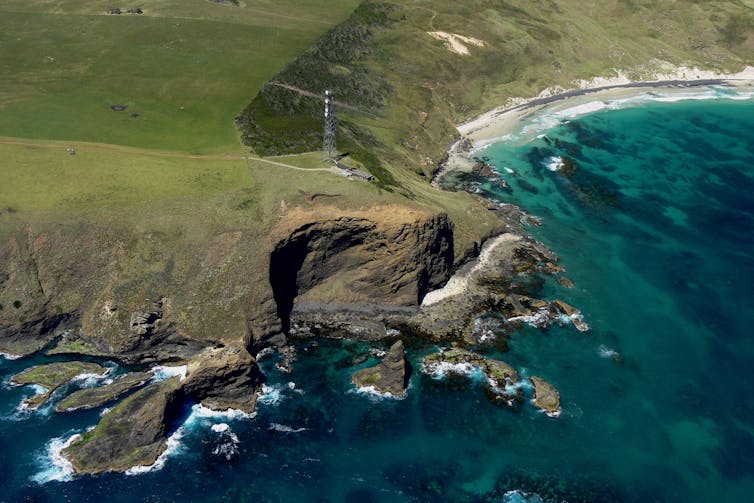
Scrubbing Aerosols Out Of The Sky
We compared the honeycomb cloud patterns with measurements of aerosols from the Kennaook/Cape Grim observatory and also with the Bureau of Meteorology’s rainfall observations from a nearby rain gauge.
Our results showed days with the cleanest air were associated with the presence of open honeycomb cloud. We think this is because these clouds generate sporadic but intense rain showers, which seem to “wash” the aerosol particles out of the air.
It’s somewhat counter-intuitive, but it turns out the open cells contain more moisture and produce more rain than the fluffy white closed cells filled with cloud. We found the open honeycomb clouds produce six times as much rain as the closed ones.
So what looks like less cloudy weather by satellite actually triggers the most effective rain showers for washing the aerosols out. Whereas the filled or closed honeycomb pattern, which looks cloudier, is less effective. That was one of the more surprising aspects of our findings.
We found the empty honeycombs to be far more common during the winter months, when the air is cleanest.
We also wanted to know what makes cloud fields look the way they do. Our analysis suggests large-scale weather systems control the pattern of the cloud field. As unruly storms track across the Southern Ocean, they produce these open and closed cells.
Fresh Air And Better Climate Models
Our research has added a new piece to the puzzle of why the Southern Ocean has the world’s cleanest air. Rainfall is the key, especially rain from these clear, open honeycomb cell-type clouds. We were first to discover they are truly responsible for cleaning up all the air flowing over the Southern Ocean.
These honeycomb patterns are also found in both the North Atlantic and North Pacific regions during winter. So our work will also help explain how these clouds remove aerosols including dust and pollution in these locations. And our findings will help improve climate models, enabling more accurate predictions.
Rain scrubs the aerosols out of the sky in much the same way as a washing machine acts to clean clothes.
After the cold front comes through, the air is clean. If you’re wintering on the south coast of Australia, you can breathe in the benefits as this fresh air comes in off the Southern Ocean.
We would like to acknowledge the valuable contributions of CSIRO, ANSTO and the Bureau of Meteorology to this research.![]()
Tahereh Alinejadtabrizi, PhD student, Monash University; Steven Siems, Professor in Cloud Microphysics, Monash University, and Yi Huang, Senior Lecturer in Climate Science, The University of Melbourne
This article is republished from The Conversation under a Creative Commons license. Read the original article.
Pittwater Reserves: Histories + Notes + Pictorial Walks
A History Of The Campaign For Preservation Of The Warriewood Escarpment by David Palmer OAM and Angus Gordon OAM
A Stroll Around Manly Dam: Spring 2023 by Kevin Murray and Joe Mills
A Stroll Through Warriewood Wetlands by Joe Mills February 2023
A Walk Around The Cromer Side Of Narrabeen Lake by Joe Mills
America Bay Track Walk - photos by Joe Mills
An Aquatic June: North Narrabeen - Turimetta - Collaroy photos by Joe Mills
Angophora Reserve Angophora Reserve Flowers Grand Old Tree Of Angophora Reserve Falls Back To The Earth - History page
Annie Wyatt Reserve - A Pictorial
Aquatic Reflections seen this week (May 2023): Narrabeen + Turimetta by Joe Mills
Avalon's Village Green: Avalon Park Becomes Dunbar Park - Some History + Toongari Reserve and Catalpa Reserve
Bairne Walking Track Ku-Ring-Gai Chase NP by Kevin Murray
Bangalley Headland Bangalley Mid Winter
Bangalley Headland Walk: Spring 2023 by Kevin Murray and Joe Mills
Banksias of Pittwater
Barrenjoey Boathouse In Governor Phillip Park Part Of Our Community For 75 Years: Photos From The Collection Of Russell Walton, Son Of Victor Walton
Barrenjoey Headland: Spring flowers
Barrenjoey Headland after fire
Bayview Baths
Bayview Wetlands
Beeby Park
Bilgola Beach
Botham Beach by Barbara Davies
Bungan Beach Bush Care
Careel Bay Saltmarsh plants
Careel Bay Birds
Careel Bay Clean Up day
Careel Bay Playing Fields History and Current
Careel Creek
Careel Creek - If you rebuild it they will come
Centre trail in Ku-ring-gai Chase National Park
Chiltern Track- Ingleside by Marita Macrae
Clareville Beach
Clareville/Long Beach Reserve + some History
Coastal Stability Series: Cabbage Tree Bay To Barrenjoey To Observation Point by John Illingsworth, Pittwater Pathways, and Dr. Peter Mitchell OAM
Cowan Track by Kevin Murray
Curl Curl To Freshwater Walk: October 2021 by Kevin Murray and Joe Mills
Currawong and Palm Beach Views - Winter 2018
Currawong-Mackerel-The Basin A Stroll In Early November 2021 - photos by Selena Griffith
Currawong State Park Currawong Beach + Currawong Creek
Deep Creek To Warriewood Walk photos by Joe Mills
Drone Gives A New View On Coastal Stability; Bungan: Bungan Headland To Newport Beach + Bilgola: North Newport Beach To Avalon + Bangalley: Avalon Headland To Palm Beach
Duck Holes: McCarrs Creek by Joe Mills
Dunbar Park - Some History + Toongari Reserve and Catalpa Reserve
Dundundra Falls Reserve: August 2020 photos by Selena Griffith - Listed in 1935
Elsie Track, Scotland Island
Elvina Track in Late Winter 2019 by Penny Gleen
Elvina Bay Walking Track: Spring 2020 photos by Joe Mills
Elvina Bay-Lovett Bay Loop Spring 2020 by Kevin Murray and Joe Mills
Fern Creek - Ingleside Escarpment To Warriewood Walk + Some History photos by Joe Mills
Iluka Park, Woorak Park, Pittwater Park, Sand Point Reserve, Snapperman Beach Reserve - Palm Beach: Some History
Ingleside
Ingleside Wildflowers August 2013
Irrawong - Ingleside Escarpment Trail Walk Spring 2020 photos by Joe Mills
Irrawong - Mullet Creek Restoration
Katandra Bushland Sanctuary - Ingleside
Lucinda Park, Palm Beach: Some History + 2022 Pictures
McCarrs Creek
McCarr's Creek to Church Point to Bayview Waterfront Path
McKay Reserve
Mona Vale Beach - A Stroll Along, Spring 2021 by Kevin Murray
Mona Vale Headland, Basin and Beach Restoration
Mona Vale Woolworths Front Entrance Gets Garden Upgrade: A Few Notes On The Site's History
Mother Brushtail Killed On Barrenjoey Road: Baby Cried All Night - Powerful Owl Struck At Same Time At Careel Bay During Owlet Fledgling Season: calls for mitigation measures - The List of what you can do for those who ask 'What You I Do' as requested
Mount Murray Anderson Walking Track by Kevin Murray and Joe Mills
Mullet Creek
Narrabeen Creek
Narrabeen Lagoon Catchment: Past Notes Present Photos by Margaret Woods
Narrabeen Lagoon Entrance Clearing Works: September To October 2023 pictures by Joe Mills
Narrabeen Lagoon State Park
Narrabeen Lagoon State Park Expansion
Narrabeen Rockshelf Aquatic Reserve
Nerang Track, Terrey Hills by Bea Pierce
Newport Bushlink - the Crown of the Hill Linked Reserves
Newport Community Garden - Woolcott Reserve
Newport to Bilgola Bushlink 'From The Crown To The Sea' Paths: Founded In 1956 - A Tip and Quarry Becomes Green Space For People and Wildlife
Pittwater Reserves: The Green Ways; Bungan Beach and Bungan Head Reserves: A Headland Garden
Pittwater Reserves, The Green Ways: Clareville Wharf and Taylor's Point Jetty
Pittwater Reserves: The Green Ways; Hordern, Wilshire Parks, McKay Reserve: From Beach to Estuary
Pittwater Reserves - The Green Ways: Mona Vale's Village Greens a Map of the Historic Crown Lands Ethos Realised in The Village, Kitchener and Beeby Parks
Pittwater Reserves: The Green Ways Bilgola Beach - The Cabbage Tree Gardens and Camping Grounds - Includes Bilgola - The Story Of A Politician, A Pilot and An Epicure by Tony Dawson and Anne Spencer
Pittwater spring: waterbirds return to Wetlands
Pittwater's Lone Rangers - 120 Years of Ku-Ring-Gai Chase and the Men of Flowers Inspired by Eccleston Du Faur
Pittwater's Great Outdoors: Spotted To The North, South, East + West- June 2023: Palm Beach Boat House rebuild going well - First day of Winter Rainbow over Turimetta - what's Blooming in the bush? + more by Joe Mills, Selena Griffith and Pittwater Online
Pittwater's Parallel Estuary - The Cowan 'Creek
Resolute Track at West Head by Kevin Murray
Resolute Track Stroll by Joe Mills
Riddle Reserve, Bayview
Salvation Loop Trail, Ku-Ring-Gai Chase National Park- Spring 2020 - by Selena Griffith
Seagull Pair At Turimetta Beach: Spring Is In The Air!
Some late November Insects (2023)
Stapleton Reserve
Stapleton Park Reserve In Spring 2020: An Urban Ark Of Plants Found Nowhere Else
Stony Range Regional Botanical Garden: Some History On How A Reserve Became An Australian Plant Park
The Chiltern Track
The Chiltern Trail On The Verge Of Spring 2023 by Kevin Murray and Joe Mills
The Resolute Beach Loop Track At West Head In Ku-Ring-Gai Chase National Park by Kevin Murray
Topham Track Ku-Ring-Gai Chase NP, August 2022 by Joe Mills and Kevin Murray
Towlers Bay Walking Track by Joe Mills
Trafalgar Square, Newport: A 'Commons' Park Dedicated By Private Landholders - The Green Heart Of This Community
Tranquil Turimetta Beach, April 2022 by Joe Mills
Turimetta Beach Reserve by Joe Mills, Bea Pierce and Lesley
Turimetta Beach Reserve: Old & New Images (by Kevin Murray) + Some History
Turimetta Headland
Turimetta Moods by Joe Mills: June 2023
Turimetta Moods (Week Ending June 23 2023) by Joe Mills
Turimetta Moods: June To July 2023 Pictures by Joe Mills
Turimetta Moods: July Becomes August 2023 by Joe Mills
Turimetta Moods: August Becomes September 2023 ; North Narrabeen - Turimetta - Warriewood - Mona Vale photographs by Joe Mills
Turimetta Moods: Mid-September To Mid-October 2023 by Joe Mills
Warriewood Wetlands - Creeks Deteriorating: How To Report Construction Site Breaches, Weed Infestations + The Long Campaign To Save The Warriewood Wetlands & Ingleside Escarpment March 2023
Warriewood Wetlands and Irrawong Reserve
Whale Beach Ocean Reserve: 'The Strand' - Some History On Another Great Protected Pittwater Reserve
Wilshire Park Palm Beach: Some History + Photos From May 2022
Winji Jimmi - Water Maze

40+ Water Birds Of The Sydney Region: School Holidays Bird-Watching Fun
by Birds in Backyards TV - November 2023
Here's something you could do this Autumn school holidays - go bird-watching!
We are having a rest for the next few weeks - but we will be back soon. We hope you have a great break and please; take it easy and look out for each other.
The 47 water bird species are listed here in order of appearance: Black Swan, Musk Duck, Blue-billed Duck, Australian Wood Duck, Pink-eared Duck, Australasian Shoveler, Chestnut Teal, Grey Teal, Freckled Duck, Hardhead, Pacific Black Duck, Great Crested Grebe, Australasian Grebe, White-faced Heron, White-necked Heron, Great Egret, Plumed Egret (aka Intermediate Egret), Eastern Cattle Egret, Little Egret, Nankeen Night-Heron, Striated Heron, Royal Spoonbill, Yellow-billed Spoonbill, Australian White Ibis, Straw-necked Ibis, Glossy Ibis, Buff-banded Rail, Ballion's Crake, Australian Spotted Crake, Australasian Swamphen, Eurasian Coot, Dusky Moorhen, Black-tailed Native-hen, Sharp-tailed Sandpiper, Australian Painted Snipe, Masked Lapwing, Red-kneed Dotterel, Black-fronted Dotterel, Red-capped Plover, Red-necked Avocet, Pied Stilt (aka White-headed Stilt), Great Cormorant, Little Black Cormorant, Pied Cormorant, Little Pied Cormorant, Australasian Darter and Australian Pelican.
A wide range of behaviours are presented, such as foraging or hunting, swimming, flying, preening, vocalising, loafing, bickering, courting, nesting and raising young. What might seem remarkable is that all this bird activity is occurring in human-modified environments, including high density residential, industrial, agricultural and recreation areas. While many of the places shown are now protected for their natural and aesthetic values, all have been greatly altered as fledgling cities and towns, farms and factories expanded. No truly wild place is in the mix. But birds are intelligent, adaptable creatures so we should not be too surprised when they survive and thrive amongst us.
Many of our video stars can be found in multiple locations and in a variety of watery habitats. Perhaps the most ubiquitous or adaptive bird here is the White-faced Heron. It frequents rocky tidal platforms, brackish wetlands, the banks and bays of salty rivers, inland lakes, ornamental ponds in parkland, freshwater lagoons, small dams and irrigated farmland.
More elusive birds include the Black-tailed Native-hen and the Freckled Duck. The Black-tailed Native-hen is not an uncommon bird within Australia, but is only sighted east of the Great Dividing Range in some years (e.g. much of NSW in drought). The Freckled Duck is listed as Vulnerable in NSW and is seen infrequently within the Sydney region. Most sightings are just one to four individuals at a time, but occasionally prime habitat (such as Pitt Town Lagoon) can host a few dozen (e.g. in the drought year of 2019).
However, the Australian Painted-snipe wins the (unwanted) prize of most special bird in this production. It is Australia's rarest waterbird and is listed as Endangered nationally and in NSW. Here we present a male filmed at Pitt Town Lagoon in 2017. To read more about this beautiful bird and report a sighting, visit https://paintedsnipe.com.au/.
Music To The Ears: New Recording And Touring Grants
Applications open on 20 March and close 20 May 2024.
 Musicians and artists are set to receive a boost under the NSW Government with the opening of grants focused on rebuilding the NSW touring circuit.
Musicians and artists are set to receive a boost under the NSW Government with the opening of grants focused on rebuilding the NSW touring circuit.
Sound NSW’s new Touring and Travel Fund and Recording and Promotion Grants will inject $3 million into the local contemporary music sector to deliver more new and original music, enable touring opportunities, and open doors for career-defining professional development.
With a focus on fostering growth and sustainability for the contemporary music industry, the programs support NSW artists to be globally competitive, develop industry networks and connect with new audiences locally and internationally.
Touring and Travel Fund
Designed to address the time-sensitive nature of venue availability and performance opportunities, Sound NSW’s $2 million Touring and Travel Fund offers quick response grants of up to $2500 per person for domestic activity and up to $7500 per person for international activity.
Applications for Sound NSW’s Touring and Travel Fund will be assessed on a quick-response basis against eligibility criteria.
Applications open on 20 March via nsw.gov.au/sound-nsw and close 20 May 2024.
Recording and Promotion Grants
Sound NSW’s $1 million Recording and Promotion Grants program will support NSW contemporary musicians to record and release new, original creative projects. NSW artists can apply for grants of:
- up to $25,000 for short-form releases, such as a single or EP
- up to $50,000 for long-form releases, such as an album
- up to $25,000 matched funding for artists signed to a major label.
Applications open 20 March and close 17 April 2024 at nsw.gov.au/sound-nsw
Minister for the Arts John Graham said:
“We are determined to rebuild the touring circuit, up and down the NSW coast, through our inland tours and suburbs. This fund will do just that.
“We’re delivering on our commitment to bring music back in NSW with this much-needed investment. These fast-response grants will support more new and original music from our musicians, enable tours across Australia and the world, and move NSW a step closer to being a global powerhouse for contemporary music.”
Head of Sound NSW Emily Collins said:
“Recording, releasing and performing new music is essential to the contemporary music industry and the growth and sustainability of artists’ careers, but the upfront costs are often greater than the income generated for many musicians.
“Sound NSW is excited to help bridge this gap by providing this vital funding, removing these prohibitive barriers and supporting NSW artists to do what they do best – making great music.”
NSW Youth Week 2024: Express. Empower. Get Loud!
- share ideas
- attend live events
- have your voice heard on issues of concern to you
- showcase your talents
- celebrate your contribution to the community
- take part in competitions
- have fun!
- Express – Youth week is a chance for every young person from across NSW to be themselves! It gives young people the opportunity to showcase their talents and getting involved.
- Empower – It’s time for young people in NSW to have their voices heard on issues that matter to you. Register here to participate in the Advocate for Children and Young People’s opportunities to have your say.
- Get loud! – Get loud and celebrate together at local community events happening in your local community and across NSW.
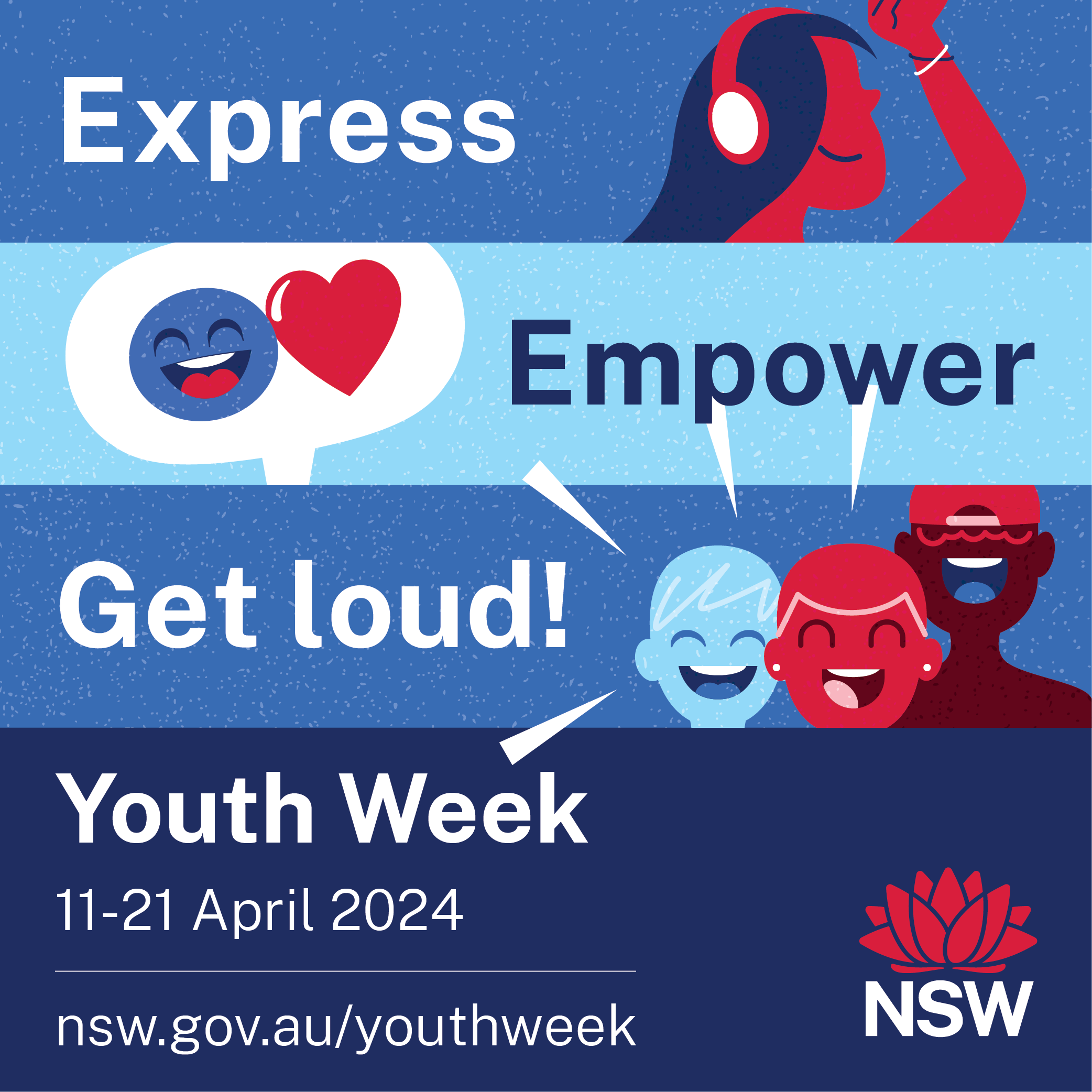
Avalon Youth Hub: Who’s Keen For Youth Week?
The Hub are hosting two events - Wednesday 10/04: 3.30 to 5.30pm (inflatable day) and Friday 12/04, 4-7pm (beats and eats).
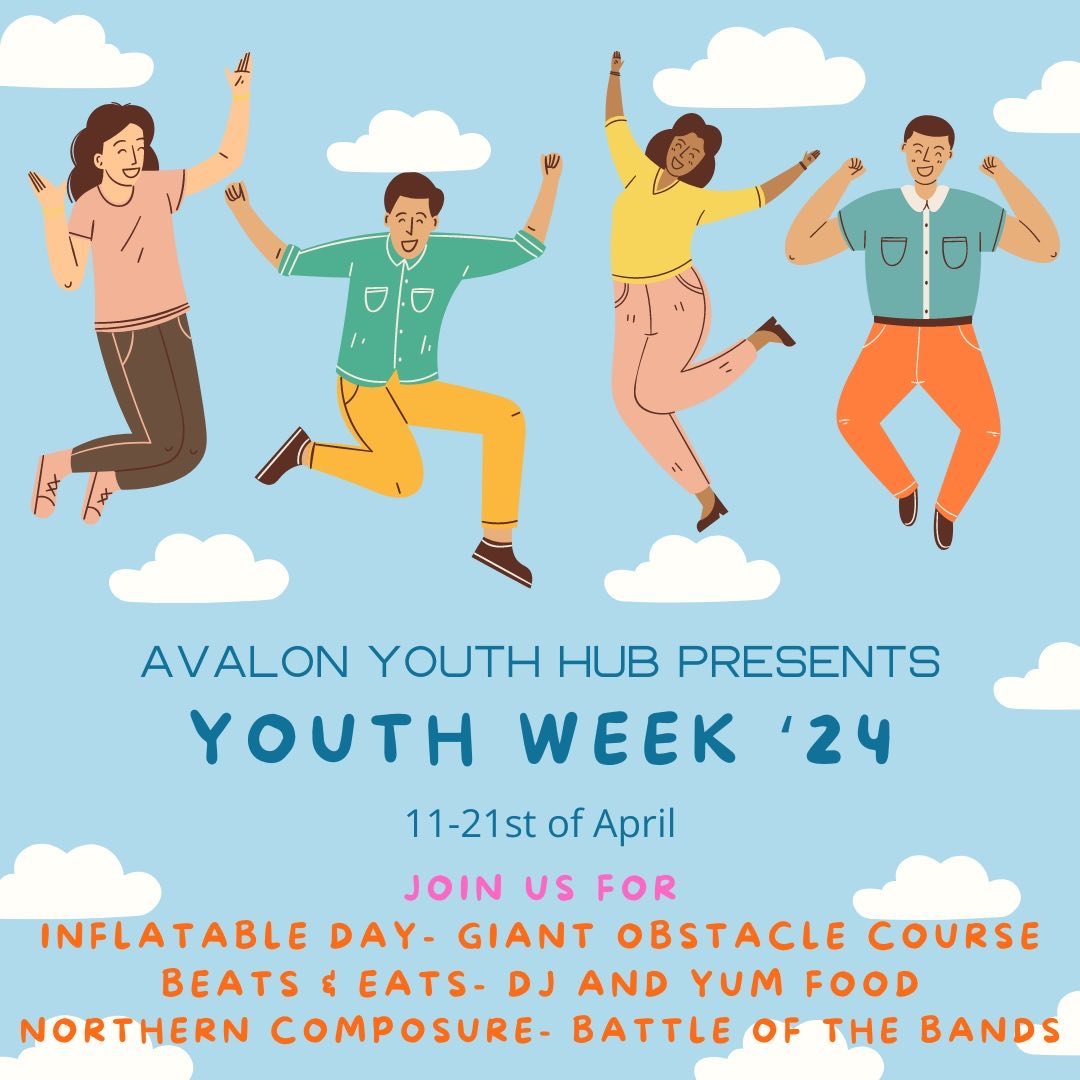
2024 Young Writers' Competition
Celebrating 15 years of the Young Writers' Competition, the 2024 theme word is 'crystal'. Council are looking for the next sparkling young creative writers on the Beaches.
Are you gazing into a crystal ball or standing under a sparkling crystal chandelier? Swimming through crystal blue waters or hunting for a magical crystal guarded by a monstrous beast? Is your story becoming crystal clear?
Write an original creative piece of work using this year's theme word 'crystal' for a chance to win prizes, meet our author judges and receive personalised feedback on your entry.
Open to students up to Year 12.
How to Enter
Visit the council webpage for more information and Conditions of Entry.
Enquiries: writers.comp@northernbeaches.nsw.gov.au
This event is delivered by Council's Library Programs Team as part of NSW Youth Week.
Finalists will be celebrated in an awards event and their creative works published in a library eBook. Entries are judged according to characterisation, plot, originality, and use of language and arranged into six different age group categories.
Four finalists are chosen in each age category and invited to a presentation event where a winner, runner-up and two highly commended prizes are awarded. Finalists from each category will have their stories published in an eBook that will be added to our collection.
All finalists receive a prize bag. Top prizes per category:
- Years K-2 - $70 voucher
- Years 3-4 - $85 voucher
- Years 5-6 - $100 voucher
- Years 7-8 - $125 voucher
- Years 9-10 - $150 voucher
- Years 11-12 - $175 voucher
Entries close May 15, 2024 at 5pm
This is a Free event.
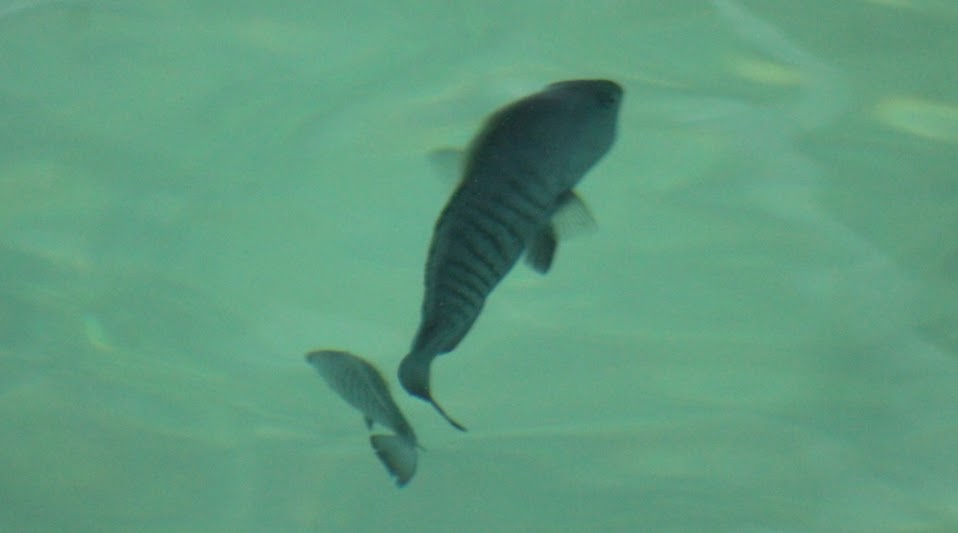
Nominate For 2024 Public Education Awards
Nominations for the 2024 Public Education Awards are now open.
The awards showcase the exceptional work occurring every day across NSW public education - by schools, students, teachers, employees and parents - and were previously known as the Minister’s and Secretary’s Awards for Excellence.
Among the seven award categories in 2024 is the Secretary’s Award for Diversity, Inclusion and Belonging.
This award recognises and celebrates those in NSW public education who proactively advocate for and celebrate diversity, inclusion and belonging.
It is open to all current employees of the NSW Department of Education, including casual staff, temporary staff and contractors.
The seven award categories for 2024 are:
- Minister’s Award for Excellence in Student Achievement
- Minister’s Award for Excellence in Teaching
- Secretary’s Award for Excellent Service - Teaching and School Operations
- Secretary's Award for Diversity, Inclusion and Belonging
- Secretary’s Award for an Outstanding School Initiative
- Secretary’s School Achievement Award
- Public School Parent of the Year
Award nominations close on 14 May and the winners will be announced at a gala event at Sydney Town Hall on Monday 5 August.
More information is available on the Public Education Foundation website

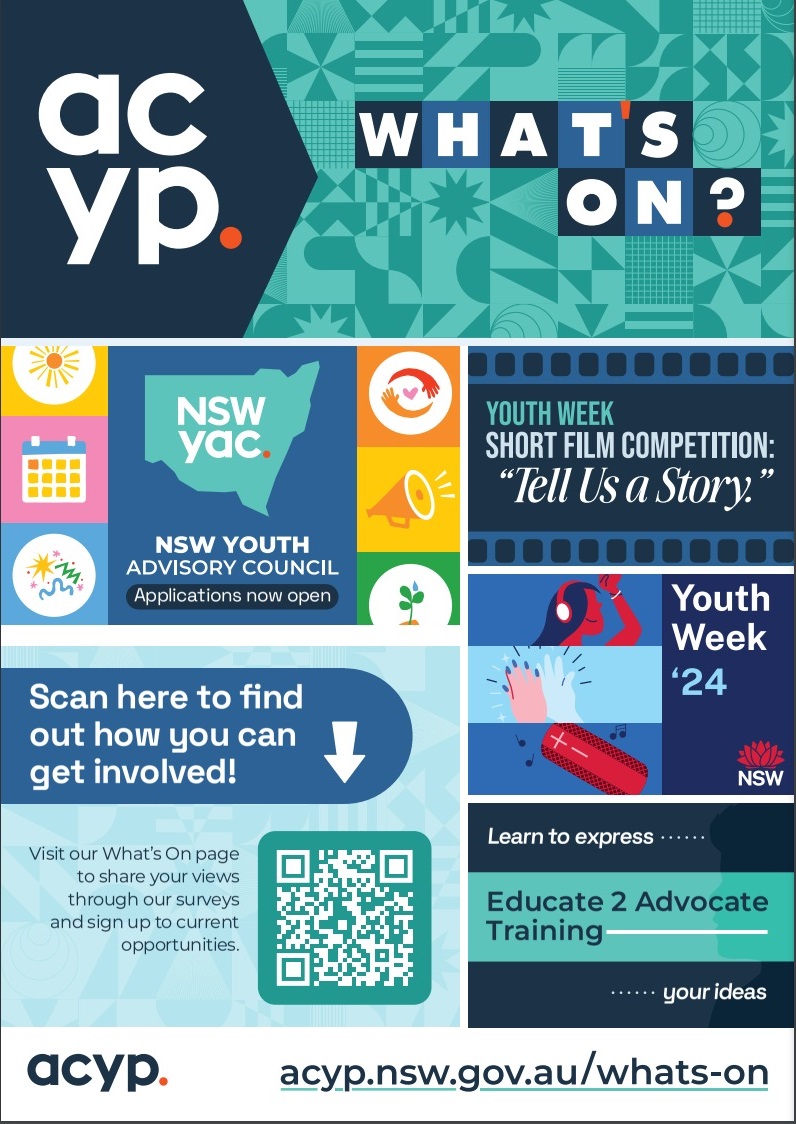
School Leavers Support
- Download or explore the SLIK here to help guide Your Career.
- School Leavers Information Kit (PDF 5.2MB).
- School Leavers Information Kit (DOCX 0.9MB).
- The SLIK has also been translated into additional languages.
- Download our information booklets if you are rural, regional and remote, Aboriginal or Torres Strait Islander, or living with disability.
- Support for Regional, Rural and Remote School Leavers (PDF 2MB).
- Support for Regional, Rural and Remote School Leavers (DOCX 0.9MB).
- Support for Aboriginal and/or Torres Strait Islander School Leavers (PDF 2MB).
- Support for Aboriginal and/or Torres Strait Islander School Leavers (DOCX 1.1MB).
- Support for School Leavers with Disability (PDF 2MB).
- Support for School Leavers with Disability (DOCX 0.9MB).
- Download the Parents and Guardian’s Guide for School Leavers, which summarises the resources and information available to help you explore all the education, training, and work options available to your young person.
School Leavers Information Service
- navigate the School Leavers Information Kit (SLIK),
- access and use the Your Career website and tools; and
- find relevant support services if needed.
Word Of The Week: Autumn
Word of the Week remains a keynote in 2024, simply to throw some disruption in amongst the 'yeah-nah' mix.
Noun
1.The season of the year between summer and winter during which temperatures gradually decrease.
From from Old French autumpne, automne (13c.), from Latin autumnus (also auctumnus, perhaps influenced by auctus "increase"), which is of unknown origin, and possibly from the ancient Etruscan root autu- and has within it connotations of the passing of the year.
Autumn's names across the Indo-European languages leave no evidence that there ever was a common word for it. Many "autumn" words mean "end, end of summer," or "harvest." Compare Greek phthinoporon "waning of summer;" Lithuanian ruduo "autumn," from rudas "reddish," in reference to leaves; Old Irish fogamar, literally "under-winter."
Harvest (n.) was the English name for the season until autumn began to displace it 16c. - as more people gradually moved from working the land to living in towns, the word harvest lost its reference to the time of year and came to refer only to the actual activity of reaping, and autumn, as well as fall, began to replace it as a reference to the season.
In Indian mythology, autumn is considered to be the preferred season for the goddess of learning Saraswati, who is also known by the name of "goddess of autumn" (Sharada).

Autumn (1573), by Giuseppe Arcimboldo
You'd catch 'em surfin' at Del Mar
Ventura County line
Santa Cruz and Trestle
Australia's Narrabeen
Whooping cough is surging in Australia. Why, and how can we protect ourselves?

Australia is facing a whooping cough outbreak. Some 2,799 cases were recorded in the first three months of 2024. Cases are highest in Queensland and New South Wales, with more than 1,000 recorded in each state.
The last time Queensland recorded more than 1,000 cases in three months was the first quarter of 2013. This was at the tail end of a significant outbreak that spanned 2008 until 2012 – Australia’s largest reported outbreak since the widespread introduction of whooping cough vaccines in the 1950s. More than 140,000 cases were recorded during this period, with the number peaking at 38,748 in 2011.
There was a smaller outbreak between 2014 and 2017, with more than 60,000 cases in these years.
So what is whooping cough, why are cases rising now, and how can you protect yourself?
It’s Most Dangerous For Babies
Whooping cough is a serious and highly contagious respiratory disease. Also called pertussis, it’s caused by the bacteria Bordetella pertussis.
The initial symptoms of whooping cough resemble other cold and flu-like symptoms. These include runny nose, sneezing, mild cough and fever. However, as the disease progresses into the second week, the coughing fits become worse and more frequent. After or between bouts of coughing, patients may gasp for air and produce the characteristic “whoop” noise.
The disease is also sometimes called the “100-day cough” as it can last for 6–12 weeks. It’s especially serious and can be life-threatening in newborns who are yet to receive their vaccinations. In older children who are fully vaccinated, as well as adolescents and adults, the disease is normally less severe. However, even in adults, the coughing can lead to fractured ribs.
Antibiotics are used to treat whooping cough but are most effective when given during the initial stages of the illness. The best protection in the first instance is vaccination, which prevents most cases of serious illness, and reduces the spread of whooping cough in the community.
It’s recommended children are given six doses of a whooping cough vaccine (which is combined with vaccines for other diseases) between the ages of roughly two months and 13 years. Vaccination is free under the National Immunisation Program for children and pregnant women. Vaccinating women against whooping cough during pregnancy protects newborns in their first months of life.
Immunity from these vaccines wanes over time, so it’s also recommended adults receive a booster, particularly those who may come into frequent contact with babies.

Why Are Cases Rising Now?
Whooping cough outbreaks generally occur every 3–4 years. Due to COVID measures such as border closures, social isolation and masks, the number of cases declined dramatically during 2020–23. If trends had followed the usual outbreak cycle, this might have been around the time we’d have seen another outbreak.
Missed routine whooping cough vaccinations at the height of the pandemic may mean Australia is more vulnerable now. Reduced immunity in the population could be one of the reasons we’re seeing a rise in whooping cough cases in Australia and other countries including the United Kingdom and the United States.
In Australia, cases have been particularly high during this outbreak in children aged 10–14.
A Potential Superbug
Over the past two decades, whooping cough has been getting better at evading vaccines and antibiotics. Most vaccines used in Australia and other developed countries stimulate your immune system to recognise and target three to five components of the bacteria.
Over time, the bacteria that causes whooping cough has been slowly acquiring mutations in these genes. These mutations make the bacteria look slightly different to the one used in the vaccine, helping it better hide from the immune system.

Most of these changes were small. But in 2008, a new strain appeared in Australia that no longer produced pertactin, one of the components targeted by the vaccine. This means your immune system, like a detective, has one less clue to recognise the bacteria.
This new strain rapidly increased from 5% of strains found in 2008, to become the dominant strain in less than ten years, making up 90% of strains by 2017. This pertactin-negative strain was shown to survive better in vaccinated mice and may have contributed to the high number of cases in the 2008–12 outbreak.
Worryingly, since 2013, antibiotic-resistant strains of whooping cough have become widespread in China. While there are other antibiotics available, these are not recommended for infants younger than two months (the age group at most risk of serious disease). These resistant strains are increasingly spreading through Asia but are not yet in Australia.
What Next?
It’s too early to know how big this outbreak will be or what strains are responsible for it. Greater tracking of whooping cough strains, like we do with COVID, is needed to inform future vaccine design and treatments.
Importantly, although the bacteria is evolving, current vaccines are still very effective at preventing serious disease and reducing transmission. They remain our best tool to limit this outbreak.
To protect oneself, vulnerable newborns, and the wider community, everyone should ensure they are up-to-date with their whooping cough vaccinations. You can check this with your GP if you’re not sure. And anyone with cold or flu-like symptoms should stay away from infants.![]()
Laurence Don Wai Luu, Lecturer and Chancellor's Research Fellow, School of Life Sciences, University of Technology Sydney
This article is republished from The Conversation under a Creative Commons license. Read the original article.
Before Dawn: young Aussie director’s new film is a sombre recount of the ANZACs’ sacrifice

Since Australia first began producing feature films, it has returned time and again to the subject of the first world war. Before Dawn, out in cinemas today, is the latest in this long line of productions.
Based on the real-life war diaries of ANZACS, many of which are held at the Australian War Memorial in Canberra, the film retells how Australian forces helped secure positions from which an attack on the Hindenburg Line could be launched.
As this has been written into history as one of Australia’s great contributions to the attack of the Western Front, the film provides an important essay on the human sacrifice the ANZACS made during WWI.
A Sombre Portrait Of War
The Germans constructed the Hindenburg Line, also known as the Siegfriedstellung or “Siegfried Position” in German, as a defensive fortification on the Western Front in France during the winter of 1916–1917. Stretching between the towns of Arras and Laffaux in the country’s north, it served as a formidable barrier against Allied offensives.
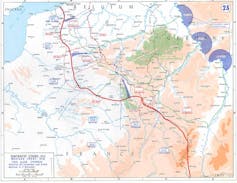
The Hindenburg Line has been portrayed in various films, offering different national viewpoints. Most recently, director Sam Mendes’ 1917 (2019) depicts it from the British perspective, while Edward Berger’s 2022 film All Quiet on the Western Front provides insight from a German standpoint.
Similar to All Quiet on the Western Front, Before Dawn downplays the celebration of victory and nationalist sacrifice by instead providing a sombre portrait of the horrors of combat.
By the time Armistice Day arrives on November 11 1918, marking the end of the war, it is hardly a victory for the soldiers. Rather, it is a moment to absorb the trauma the living now carry, as they are literally surrounded by the corpses of their dead mates.
This portrayal comes through the fictionalised story of teenager Jim Collins (played by Levi Miller), who voluntarily leaves his family-run sheep station to join the ANZAC.

A Young Man’s Film Through And Through
This backstory alone makes for an obvious comparison between Before Dawn and Peter Weir’s seminal film Gallipoli (1981). Both films depict the story of an 18-year-old stockman from Western Australia. That said, it would seem a little unfair to compare Before Dawn with the quality and emotional gravitas of Gallipoli.
By the time Weir directed his war epic he was well experienced, 38 years old and with four feature director credits under his belt. He also had experienced talent at his disposal, most notably screenwriter David Williamson, cinematographer Russell Boyd and actor Mel Gibson (hot off the heels of George Miller’s Mad Max 1 and 2).
In contrast, the director of Before Dawn is Jordon Prince-Wright, who is in his twenties. He worked with relatively inexperienced talent, including upcoming Aussie actors Levi Miller, Travis Jeffrey, Ed Oxenbould and Stephen Peacocke.
Prince-Wright’s prior credits include 2018 film The Decadent and Depraved, an independent western genre film set in outback colonial Western Australia.
Before Dawn was exclusively filmed in regional Western Australia – primarily on about 34 hectares of land near the beach town of Esperance. An extensive set was built to recreate the trenches and battlegrounds of Flanders, Belgium. Originally scheduled to begin in June 2020, the production team postponed filming for a year due to the pandemic.
Prince-Wright shares screenwriting duties with Jarrad Russell, who is receiving his first screenwriting feature credit on the film. It is also the first feature credit for cinematographer Daniel Quinn.
Before Dawn is certainly a young man’s film, both in what is being represented as well as in the cast and crew behind the production. This seems somewhat apt since, during WWI, the largest proportion of men fighting was comprised of 18 and 19 year olds.

Ambitious Work
While you can’t deny the enthusiasm and ambition of the production team, the film does fall short of evoking the necessary empathy. It relies too heavily on composer Sean Tinnion’s overstated musical score to provide emotional weight.
Furthermore, despite more than 100 Aboriginal soldiers also serving on the front lines on the Western Front, Before Dawn is yet another production depicting Australian WWI soldiers as exclusively white men. The contribution of Aboriginal soldiers during WWI is yet to be satisfactorily fictionalised on the screen.

Despite these faults and oversights, Before Dawn offers an account of the important sacrifice Australia made in assisting the Commonwealth during the war. Coupled with other sources, it could function well as a teaching text for students learning about the Hindenburg Line.
Correction: this article originally stated the director was 19. This has been amended.![]()
Stephen Gaunson, Associate Professor in Cinema Studies, RMIT University
This article is republished from The Conversation under a Creative Commons license. Read the original article.
Growing quickly helped the earliest dinosaurs and other ancient reptiles flourish in the aftermath of mass extinction
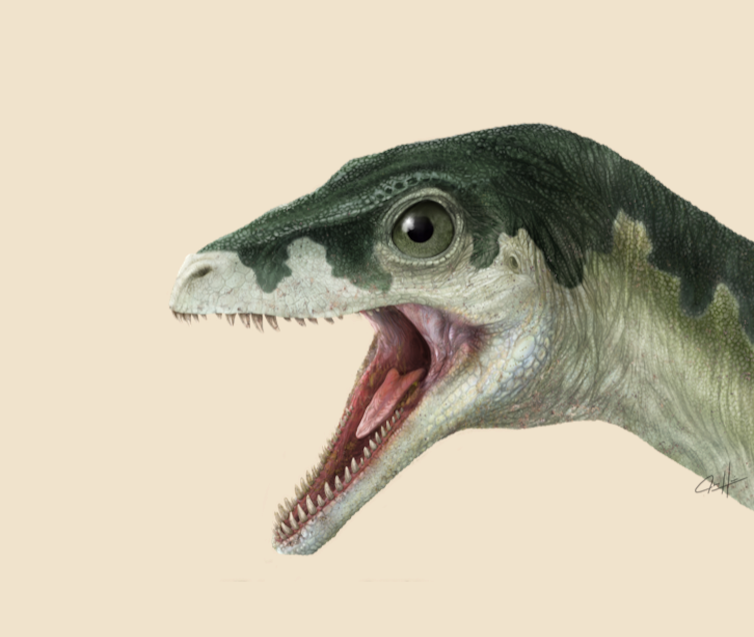
It may be hard to imagine, but once upon a time, dinosaurs didn’t dominate their world. When they first originated, they were just small, two-legged carnivores overshadowed by a diverse array of other reptiles.
How did they come to rule?
My colleagues and I recently studied the fossilized bones of the earliest known dinosaurs and their nondinosaur rivals to compare their growth rates. We wanted to find out whether early dinosaurs were somehow special in the way they grew – and if this may have given them a leg up in their rapidly changing world.
Before Dinosaurs – The Great Dying
Life on Earth was flourishing 250 million years ago. Dinosaurs had yet to evolve. Instead, giant amphibians and sail-backed reptiles called therapsids thrived.
But within a blink of geologic time, in a span of about 60,000 years, scientists estimate 95% of all living things went extinct. Known as the Permian extinction or the Great Dying, it is the largest of the five known mass extinction events on Earth.
Most scientists agree this near total die-off was caused by extensive volcanic activity in modern-day Siberia, which covered millions of square miles with lava. The resulting noxious gases and heat combined to push global temperatures dramatically upward, eventually leading to ocean acidification, a loss of oxygen in ocean waters and a profound ecosystem collapse, both on land and in the ocean.
Only a few lucky survivors made it through.
The Survivors And Their Descendants
In the ecological vacuum after the mass extinction event, on the stage of a healing Earth, the ancestors of dinosaurs first evolved – along with the ancestors of today’s frogs, salamanders, lizards, turtles and mammals. It was the dawn of the Triassic Period, which lasted from 252 million years ago to 201 million years ago.
Collectively, the creatures that survived the Great Dying were not particularly remarkable. One animal group, known as Archosauria, started off with relatively small and simple body plans. They were flexible eaters and could live in a wide variety of environmental conditions.
Archosaurs eventually split into two tribes – one group including modern crocodiles and their ancient relatives and a second including modern birds, along with their dinosaur ancestors.
This second group walked on their tiptoes and had big leg muscles. They also had extra connections between their back bones and hip bones that allowed them to move efficiently in their new world.
Instead of directly competing with other archosaurs, it seems this group of dinosaur ancestors exploited different ecological niches – maybe by eating different foods or living in slightly different geographical areas. But early on, the dinosaurlike archosaurs were far less diverse than the crocodile ancestors they lived alongside.
Slowly, the dinosaur lineage continued to evolve. It took tens of millions of years before dinosaurs became abundant enough for their skeletons to show up in the fossil record.

The oldest known dinosaur fossils come from an area in Argentina now called Ischigualasto Provincial Park. Rocks there date back to roughly 230 million years ago.
The Ischigualasto dinosaurs include all three dinosaur groups: the meat-eating theropods, the ancestors of giant sauropods and the plant-eating ornithischians. They include Herrerasaurus, Sanjuansaurus, Eodromaeus, Eoraptor, Chromogisaurus, Panphagia and Pisanosaurus.
These early dinosaurs represent only a small fraction of animals found from that time period. In this ancient world, the crocodilelike archosaurs were on top. They had a wider array of body shapes, sizes and lifestyles, easily outpacing early dinosaurs in the diversity race.
It wouldn’t be until closer to the end of the Triassic Period, when another volcanism-induced mass extinction event occurred, that dinosaurs got their lucky break.
The late Triassic extinction event killed 75% of life on Earth. It decimated the crocodilelike archosaurs but left early dinosaurs relatively untouched, paving the way for their rise to dominance.
Before long, dinosaurs went from representing less than 5% of animals on Earth to constituting more than 90%.
Bones Tell The Story Of Growth
My collaborators from the Universidad Nacional de San Juan, Argentina, and I wondered whether the rise of dinosaurs may have been underpinned, in part, by how fast they grew. We know, through microscopic study of fossilized bones, that later dinosaurs had fast growth rates – much faster than that of modern-day reptiles. But we didn’t know whether that was true for the earliest dinosaurs.
We decided to examine the microscopic patterns preserved in thigh bones from five of the earliest known dinosaur species and compare them with those of six nondinosaur reptiles and one early relative of mammals. All the fossils we studied came from the 2-million-year interval within the Ischigualasto Formation of Argentina.
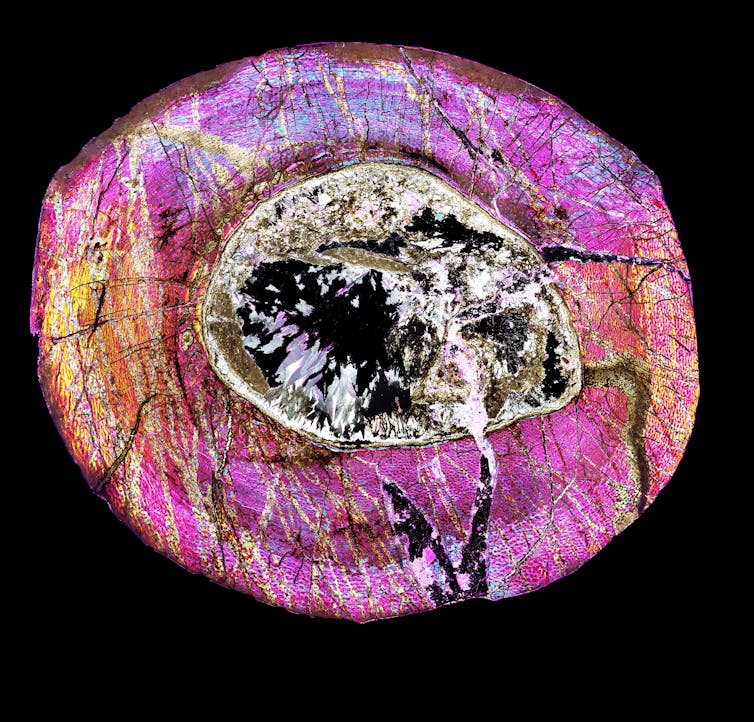
Bones are an archive of growth history because, even in fossils, we can see the spaces where blood vessels and cells perforated the mineralized tissue. When we look at these features under a microscope, we can see how they are organized. The more slowly growth occurs, the more organized microscopic features will be. With quicker growth, the more disorganized the microscopic features of the bone look.
We discovered early dinosaurs grew continuously, not stopping until they reached full size. And they did indeed have elevated growth rates, on par with and, at times, even faster than those of their descendants. But so did many of their nondinosaur contemporaries. It appears most animals living in the Ischigualasto ecosystem grew quickly, at rates that are more like those of living mammals and birds than those of living reptiles.
Our data allowed us to see the subtle differences between closely related animals and those occupying similar ecological niches. But most of all, our data shows that fast growth is a great survival strategy in the aftermath of mass destruction.
Scientist still don’t know exactly what made it possible for dinosaurs and their ancient ancestors to survive two of the most extensive extinctions Earth has ever undergone. We are still studying this important interval, looking at details such as legs and bodies built for efficient, upright locomotion, potential changes in the way the earliest dinosaurs may have breathed and the way they grew. We think it’s probably all these factors, combined with luck, that finally allowed dinosaurs to rise and rule.![]()
Kristi Curry Rogers, Professor of Biology and Geology, Macalester College
This article is republished from The Conversation under a Creative Commons license. Read the original article.
Godzilla x Kong: The New Empire – this Chinese-US blockbuster maximises the global appeal of the MonsterVerse
Rayna Denison, University of BristolSeventy years after his first appearance in the 1954 Japanese film Gojira, Godzilla has become a global star. Meanwhile King Kong, his gigantic Hollywood counterpart, has been circling the globe for a shade over 90 years. The two come together in Godzilla x Kong: The New Empire for the second time in the MonsterVerse film franchise, this time as unlikely partners protecting the Earth.
Godzilla’s globalisation began early in the character’s life. In 1956, Gojira was remade, with new scenes starring Canadian actor Raymond Burr as a US journalist explaining the film’s action to American audiences. The local and transnational politics of the Godzilla franchise have been mutating ever since.
Godzilla began as an post-war destroyer of human cities like Tokyo, but over time the character has shifted, occasionally becoming humanity’s protector, an eco-warrior and even (infamously) a father in Son of Godzilla in 1967.
The MonsterVerse films, which began with Godzilla in 2014 have replayed as many of the Japanese franchise’s main themes as it has remixed and amplified them. Across five films, the MonsterVerse has emerged as slick, well-defined giant monster mythos that has further globalised Godzilla – and King Kong along with him.
Nuclear Godzilla
In the original Japanese film, Godzilla is awakened by American atomic bomb testing in the Bikini Atoll. He represents a warning about the dangers of nuclear power. But by contrast, in the MonsterVerse, nuclear power stations and bombs are used routinely to “power up” Godzilla.
This is taken to new extremes in Godzilla x Kong. Godzilla not only absorbs the nuclear radiation from a power plant, but also turns quasi-cannibal, killing the sea-serpent Titan Tiamat to absorb its power.
This extra dose of radiation results in a radical new look. Each of the Titans (ancient gigantic creatures) in the MonsterVerse has its own colour scheme. Tiamat’s signature colour is pink, and so for the second half of Godzilla x Kong, Godzilla shines with rosy radioactive hues.
Kong Goes Subterranean
The MonsterVerse has added the idea of the “Hollow Earth” to bolster Godzilla’s murky origin story. Hollow Earth is a longstanding myth about a world existing inside our own, which has been the subject of conspiracy theories.
In the MonsterVerse, the Hollow Earth is a pre-modern landscape filled with Titanic creatures.
In Godzilla x Kong, King Kong is in Hollow Earth searching for his lost species. In this way the film is something of a sequel to director Adam Wingard’s 2021 Godzilla vs Kong. In it, Kong discovers an enslaved giant ape community near the heart of the Hollow Earth, under the control of the Skar King.
The Skar King is another giant ape who controls Shimo, the Titan whose icy breath brought on the last ice age. Defeated and badly injured in his initial attempt to free this giant ape community, Kong turns to his human friends from Monarch (the subject of Apple TV’s Monarch: Legacy of Monsters) for help. In a nod to the popularity of the Transformers franchise, Monarch provides Kong with an exoskeletal arm with which to fight the Skar King.
When Kong and Godzilla finally come together they make inventive use of the Hollow Earth’s passageways. Ever since Godzilla began travelling these tunnels to destroy global cities like San Francisco (in the franchise’s first film), the MonsterVerse filmmakers have been carefully selecting famous global cities for the Titans to use as wrestling rings.
In Godzilla x Kong alone, Godzilla’s battles take place in Rome, Egypt and the Arctic. The Skar King’s obsession with the surface world brings him eventually to Rio de Janeiro. The city is burned, frozen and stomped on as Godzilla and Kong face off against their enemies.
Humour In Godzilla X Kong
There is humour in these battles, in which familiar tourist destinations are ripe for destruction. Among the beloved national landmarks reduced to rubble is the Coliseum, which becomes a giant cat bed for Godzilla. But, there is also an industrial logic to the way the locations are being selected.
The Chinese-owned production company, Legendary Pictures, are working with their American studio partner, Warner Brothers, to maximise the MonsterVerse’s global appeal by taking a global approach to these battlegrounds.
Through these familiar cities, the MonsterVerse films are carefully targeted to audiences from across the globe. And, the opening weekend’s blockbuster box office shows that this strategy is paying off. It can even be seen in the transnational casts. Previous instalments of the franchise have featured major international stars like Ken Watanabe, Juliet Binoche and Ziyi Zhang, balanced out by Hollywood stars like Brian Cranston and Millie Bobby Brown.
Aside from the Titans, Godzilla x Kong is largely populated by secondary characters from previous films, along with broadly drawn characters like Trapper, a dentist and vet for Titans (Dan Stevens on scene-chewing form).
This is where the young Jia, played with graceful poise by Kaylee Hottle, comes into her own. Jia is the lone survivor of the Iwi people of Skull Island (wiped out in an off-screen Titan disaster). Hottle, a rising star, is a deaf performer, and provides a signed, subtle performance that supplies the film’s heart.
However, in Godzilla x Kong it seems like the Titans are finally the main attraction in their own movies. As Godzilla and Kong make themselves at home in semi-flattened cities all over the world, the global power of the MonsterVerse is hard to argue with.
Looking for something good? Cut through the noise with a carefully curated selection of the latest releases, live events and exhibitions, straight to your inbox every fortnight, on Fridays. Sign up here.![]()
Rayna Denison, Professor of Film and Digital Arts, University of Bristol
This article is republished from The Conversation under a Creative Commons license. Read the original article.
How food preferences are linked to cognition and brain health – and why a balanced diet is superior
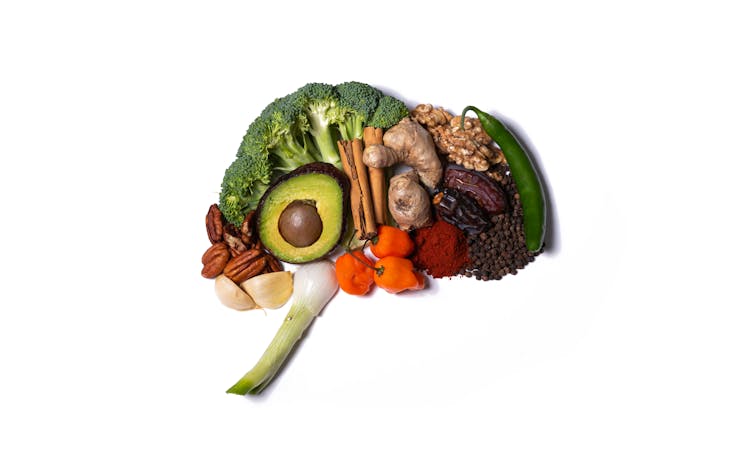
From the crispy crunch of fresh veggies to the creamy indulgence of decadent desserts, we all have different food preferences. Our palates develop uniquely, shaped by genetics, culture and personal experiences.
Food preferences play a significant role in shaping our dietary habits. Highly palatable foods rich in sugars, fats and salts often appeal to people’s tastebuds and provide immediate satisfaction. However, these foods are typically high in calories and low in essential nutrients, leading to weight gain, and a higher risk of physical and mental health conditions.
Now we have discovered that the food you choose to eat isn’t just linked to your physical and mental health, but also to your cognitive function, brain structure and genetics.
A widespread preference for fast food is likely contributing to an increase in obesity worldwide. According to the World Health Organization (WHO), in 2022 one in eight people worldwide were obese. This rate has doubled since 1990.
Obesity isn’t just linked with an increased risk of diseases including type 2 diabetes and cardiovascular disease, but also with a 30-70% higher risk of mental health disorders.
Benefits Of A Healthy, Balanced Diet
Our new collaborative study from Fudan University in China and the University of Cambridge in the UK, published in Nature Mental Health, used a large sample of 181,990 participants from the UK Biobank to examine how food choices are associated with cognitive function, mental health, metabolism, brain imaging and genetics.
We examined the consumption of vegetables, fruit, fish, meat, cheese, cereal, red wine, spirits and bread. We found that 57% of participants had food preferences for a healthy balanced diet. This included a balanced mix of all the foods we examined, with no excessive amounts in any category.
We further showed that those with a healthy balanced diet had better brain health, cognitive function and mental health than others. We compared the balanced diet to three other diet groups – low-carb (18%), vegetarian (6%) and high protein/low fibre (19%).
We found that people who ate a more balanced diet had better fluid intelligence (the ability to solve new problems), processing speed, memory and executive functions (a set of mental skills that include flexible thinking and self-control) than the other diets. This also corresponded to better brain health – with higher grey matter volumes (the outermost layer of the brain) and better structured neurons (brain cells), which are key markers of brain health.
Perhaps surprisingly, the vegetarian diet did not fare as well as a balanced diet. One reason for this may be that many vegetarians don’t get enough protein. Two healthy, balanced diets for the brain are the Mediterranean and Mind (Mediterranean intervention for neurodegenerative delay) diets.
These promote fish (especially those oily fish), dark leafy vegetables and fresh fruits, grains, nuts, seeds, as well as some meat, such as chicken. But these diets also limit red meat, fats and sugars.
In fact, research has shown that the Mediterranean diet can alter our brains and cognition. One study showed that people showed improved cognition after only 10 weeks on this diet.
Another study showed that following the Mediterranean diet was associated with lower levels of a harmful peptide known as beta-amyloid in the brain. Beta-amyloid, together with tau protein, are measures of the brain damage that occurs in Alzheimer’s disease.
Previous studies have also shown that Japanese diets, including rice, fish and shellfish, miso, pickles and fruits, protect against brain shrinkage.
We also discovered that there were some genes that may be contributing to the association between dietary patterns and brain health, cognitive function and mental health. This may mean that our genes partly determine what we like to eat, which in turn determines our brain function.
However, our food choice priorities are also affected by a number of factors, including price, allergies, convenience and what our friends and family eat.
Some people opt for going on diets, which may lead to weight loss, but involve cutting out entire food groups that are important for the brain. While there’s some evidence that ketogenic diets (low carb), for example, have beneficial affects on the immune system and mental health, it does seem that balanced diets, such as the Mediterranean diet, is best for overall brain health and cognition.
Ways Forward
It is clear that adopting a healthy balanced diet and doing exercise can be good for our brains. But for many people, this is easier said than done, especially if their current food preferences are for very sweet or high fat foods.
However, food preferences aren’t destiny. For example, if you reduce your sugar and fat intake slowly and maintain it at a very low level over a number of months, you will actually begin to prefer that type of food.
Establishing healthy food preferences and an active lifestyle early in childhood is vital. Other important techniques are to eat slowly, pay attention to what you eat and enjoy it, rather than finishing a sandwich on the go or while looking at your mobile screen.

It takes time for your brain to register that you are full. For example, it has been shown that consumers generally eat more when watching television, listening to music, or in the presence of others, because the distraction decreases our reliance on internal satiety signals.
Social support from friends has also been shown to encourage adherence to healthy eating habits, as has cognitive behavioural therapy. Distraction is another excellent technique – literally anything you like to do (that isn’t eating) could help.
One interesting survey study found that how you set your priorities affects your food choices. If you are keen to remain healthy and to have a physically fit appearance, you will choose healthy foods.
We live in tough economic times. Socioeconomic status shouldn’t limit dietary choices, though this seems to currently be the case. Clearly, governments have an important duty to prioritise affordable healthy eating options. This will help many of us choose a healthy diet for either health reasons, reduced food prices, or both.
Now that we know that the food we eat can actually affect our brains and how well we perform cognitively, having a healthy balanced diet is more important than ever.![]()
Barbara Jacquelyn Sahakian, Professor of Clinical Neuropsychology, University of Cambridge; Christelle Langley, Postdoctoral Research Associate, Cognitive Neuroscience, University of Cambridge; Jianfeng Feng, Professor of Science and Technology for Brain-Inspired Intelligence/ Computer Science, Fudan University, and Wei Cheng, Young Principal Investigator of Neuroscience, Fudan University
This article is republished from The Conversation under a Creative Commons license. Read the original article.
Was famous bushranger Captain Moonlite definitely gay? An historian explains why it’s much more complicated

Captain Moonlite, the bushranger known for the Egerton bank robbery of 1869 and the Wantabadgery outrage of 1879, is commonly thought to have been gay or queer. In recent years, his love for gang member James Nesbitt has been celebrated in art, music and theatre. Now the Heritage Council of New South Wales is considering adding the graves of Moonlite and Nesbitt to the State Heritage Register in recognition of their “publicly acknowledged same-sex relationship”.
The Heritage Council, however, has several issues to contend with. For one, the nature of the relationship between Moonlite and Nesbitt is not as sure and settled as has been assumed. For another, the headstone that now marks Moonlite’s grave obfuscates, rather than celebrates, his feelings for Nesbitt.

Meeting And Memory
Andrew George Scott – the man behind the Moonlite moniker – met James Nesbitt in Pentridge Prison, Coburg, between 1875 and 1877. The two reunited on the outside in 1879, and Nesbitt followed Scott on his ill-fated trek into New South Wales where, with four other companions, they “stuck up” Wantabadgery Station.
In an ensuing confrontation with police, Nesbitt, August Wernicke (the youngest of Scott’s companions) and Constable Edward Mostyn Webb Bowen were all mortally wounded. Nesbitt and Wernicke were buried in unmarked graves in Gundagai Cemetery.
Scott and another of his companions, Thomas Rogan, were hanged for Bowen’s murder on January 20 1880. In the weeks leading up to this, as he awaited “the last dread sentence of the law” in a condemned cell in Darlinghurst Gaol, Sydney, Scott wrote numerous documents, including letters intended for friends, acquaintances, clergymen and Nesbitt’s parents. In these, he recorded he loved Nesbitt and wished to “fill the same grave” as him so they might be together forever.
Many of Scott’s letters were not sent and the wish they contained was not initially acted upon.
When Scott’s condemned-cell writings were rediscovered in the 1980s, they were swiftly assumed to reveal a romance. In the decades since, it has almost become a commonplace that Scott was homosexual and Nesbitt his lover.
Hidden Histories
Determining the nature of a relationship from the past can be a complex matter. It requires, among other things, a sophisticated understanding of how emotions were expressed and how language was used in the relevant context. Phrases used to express romantic love today were not necessarily used in the same ways in the past.
Modern-day terms and concepts, from “homosexual” to “gay”, are also of limited use in understanding and describing historical people and their relationships. Before these terms and concepts were current, people understood themselves, their desires and their intimacies in other ways.
Unfamiliarity with the past, a yearning for queer forebears, and present-day views on sexuality have prevented us from seeing Scott and Nesbitt’s relationship as anything but romantic (in the everyday sense of the word) and sexual. And yet Scott’s language about Nesbitt conforms closely to the 19th-century concept of manly love – a bond between men which was “passing the love of women” precisely because it was free from any sexual element.
It is also significant that one of Scott’s preferred words to describe Nesbitt was simply “friend”: he was, Scott wrote to supporter John Alexander Dowie, “the truest best friend that man ever had”. It was in memory of a male friend that Tennyson penned his famous lines:
Tis better to have loved and lost / Than never to have loved at all.
Moonlite’s Motivations
Two vital points must be recognised when approaching Scott’s writings about Nesbitt.
The first is all of Scott’s expressions of affection post-date Nesbitt’s death – a violent death, suffered at a young age, in consequence of decisions made by Scott. At the time of writing, Scott was suffering from intense trauma and grief – and as much as any emotion, Scott’s writings are evidence of grief.
The second relates to Scott’s intent. In the wake of his death, Scott was seeking to craft a legacy for Nesbitt. Nesbitt had died ignobly, while resisting the police, and was destined to be remembered as nothing but a scoundrel bushranger. Scott, however, wished him to be remembered otherwise: as honourable, truthful and brave. He even portrayed Nesbitt as Christ-like.
While it remains a possibility Scott and Nesbitt were lovers, as is commonly thought, Scott conveying as much in his condemned-cell writings would have undermined the image of Nesbitt (and himself) he was desperate to establish before his voice was silenced.
Moonlite’s Grave
Scott’s remains were finally reinterred in Gundagai Cemetery in 1995, and marked by a headstone which reads:
ANDREW GEORGE SCOTT
CAPTAIN MOONLITE
BORN IRELAND 8-1-1845
DIED SYDNEY 20-1-1880“As to a monumental stone, a rough unhewn rock
would be most fit, one that skilled hands could
have made into something better. It will be like
those it marks as kindness and charity could have
shaped us to better ends.”
Andrew George Scott
Laid to final rest
near his friends James Nesbitt and Augustus
Wernicke who lie in unmarked graves close by.
Gundagai 13-1-1995.
This differs from what Scott specified in his condemned-cell writings: Nesbitt’s birth and death dates have been excluded, while Wernicke’s name has been added.
The quote is also an addition, albeit with a crucial omission: “As to the monumental stone for my friend and myself […]”. Without these italicised words, the visitor is led to infer that Scott intended his headstone to mark three people (himself, Nesbitt and Wernicke) and is distracted from Scott’s desire to occupy the grave of Nesbitt specifically.
Were the Heritage Council to proceed with its listing it would be both formalising a view of a historical relationship that is open to conjecture, and honouring a grave that deviates from the desires of the deceased.![]()
Matthew Grubits, Historian, Charles Sturt University
This article is republished from The Conversation under a Creative Commons license. Read the original article.
Beyoncé’s ‘Blackbiird’ breathes new life into a symbol that has inspired centuries of Black artists, musicians and storytellers

Prior to the release of “Cowboy Carter,” Beyoncé explained that her album’s links to country were motivated by industry gatekeeping. She was likely referencing the hostile reception she experienced after her performance of “Daddy Lessons” with The Chicks during the 2016 Country Music Awards.
Feeling “unwelcome,” Beyoncé said she decided to delve into Black Americans’ “rich musical archive” for inspiration, and “Cowboy Carter” became a project akin to her previous album, 2022’s “Renaissance” – a way to teach listeners about Black music and Black history.
One of the songs, “Blackbiird,” is a rendition of the Beatles’ “Blackbird,” from their 1968 White Album. The Beatles’ “Blackbird” has a folk bent, but they were certainly influenced by country and other American genres, especially Black rhythm and blues. All of this musical history comes together in Beyoncé’s cover of “Blackbird,” whose composer, Paul McCartney, has a producer credit.
Beyoncé’s version appears to retain the Beatles’ instrumentation, incorporating McCartney’s acoustic guitar and foot tapping. But, importantly, Beyoncé also includes the voices of four Black female country singers: Tanner Adell, Tiera Kennedy, Reyna Roberts and Brittney Spencer.
Black musicians have long used the symbol of the blackbird to describe their careers – the isolation they’ve felt and the discrimination they’ve faced along the way. To appreciate Beyoncé’s “Blackbiird,” we think it’s important to go beyond the shadow McCartney’s song has cast over the symbol.
The Legend Of McCartney’s ‘Blackbird’
Many listeners hear the Beatles’ “Blackbird” as a civil rights song. Part of that may have to do with the evolving ways McCartney has talked about the song in the decades since its release, which we address in our 2023 book, “Blackbird: How Black Americans Sang the Beatles Into Being – and Sang Back to Them Ever After.”
After the release of the White Album, McCartney did mention “civil rights” and “riots” during a recording that captured a conversation about the track with the singer-songwriter Donovan. McCartney also mentions the “offense” Diana Ross took when he played “Blackbird” for her.
For the next three decades, though, he didn’t publicly connect the track to civil rights. Then, in Barry Miles’ 1997 biography of McCartney, McCartney says “a Black woman” was the inspiration for “Blackbird.”
In the 21st century, however, McCartney has been keen to make connections to various places and events associated with the movement during live performances. He mentioned “the Southern states” in 2002; by the 2010s, he started regularly identifying “Alabama” and “Arkansas.” Then, once McCartney specified “Little Rock,” he drew an even clearer connection to the Little Rock Nine, who integrated Central High in 1957. That year, a teenage McCartney was auditioning for John Lennon at the Woolton Village Fete in Liverpool, England, 11 years before “Blackbird” was composed and recorded.
Whatever the origins, McCartney now clearly wants listeners to hear his song in relation to civil rights and current movements like Black Lives Matter.
We aren’t suggesting McCartney’s feelings about these movements are insincere. But when we trace the evolution of his stories, we see the former Beatle working in earnest to emphasize “Blackbird” as a civil rights anthem after the fact.
Dreams Of The Skies
With “Blackbiird,” Beyoncé reasserts a legacy of Black artistry that predates McCartney. Centuries before the Beatles, birds and flight served as powerful symbols in Black storytelling and arts.
Enslaved Africans in the Americas imagined freedom by circulating tales about gaining the ability to fly. Their return home to Africa became possible when a spiritual leader arrived with a “secret password,” one that would allow them to soar as a flock.
Children’s author Virginia Hamilton’s illustrated retelling of the myth compares flying Africans to “blackbirds” with “Black, shiny wings flappin’ against the blue up there.”
The trope finds expression in lonely birds, too; some versions of the myth center on a single bird or flying person. The absence of a flock and the inability to fly are metaphors for slavery’s brutality, particularly the ways in which families were torn apart.
Blackbirds Take Flight
Black musicians in the 20th century often used birds to explore themes of isolation and discrimination. Sad, dejected birds populate the blues, including Lonnie Johnson’s 1926 song “Blackbird Blues.”
“If I was a blackbird, I’d pack my troubles on my back,” he mournfully sings. “I would leave this world, and I never would look back.”
Then there was Florence Mills, one of the most famous Black American stage performers in the 1920s.
Mills debuted “I’m a Little Blackbird Looking for a Bluebird” in 1924. The lyrics are explicit: She wants to find “a bluebird” – a metaphor for happiness – the kind that “white folks” are allowed to pursue.
Although Mills didn’t compose it, the song became one of her most well-known and an anthem for racial tolerance.
In interviews, Mills also detailed the song’s symbolism, connecting the bird’s predicament to the lack of opportunities Black Americans faced. With her talent and success, she felt an obligation to her community.
The Blackbird Of Show Business
Nina Simone co-wrote and released “Blackbird” in September 1963, five years before the Beatles released the White Album.
While Mills’ blackbird yearns for something better, Simone’s pessimistic speaker tells “little sorrow” not to bother trying to fly. McCartney’s “Blackbird” is upbeat, and its entreaty to “Take these broken wings and learn to fly” seems like a hopeful response to Simone’s “Blackbird,” although he has never mentioned the connection.

Like Mills, Simone has used the image of a blackbird to describe her career and its obstacles.
“I am the blackbird of show business,” Simone announced in a 1963 interview with Newsweek.
The discrimination Simone experienced throughout her life included a rejection from Philadelphia’s Curtis Institute of Music – a racially motivated exclusion that echoes Beyoncé’s own experiences with the country music industry.
Bringing Black Artists Into The Light
Beyoncé is far from the only Black artist to cover the Beatles’ “Blackbird.”
Ramsey Lewis was first to do so, in 1968. He was followed by Billy Preston, the Paragons with Roslyn Sweat, Sylvester James, Jr., Bobby McFerrin, Alicia Keys and Bettye LaVette, the last of whom we interviewed for our book.
LaVette has performed her interpretation since 2010. She tweaks the lyrics, reciting them in the first person and turning the song into a meditation on her own struggles and triumphs. The song appears on LaVette’s 2020 album, “Blackbirds,” a tribute to Black women forebears.
“My bridges,” LaVette called the artists whose songs she interprets, including Simone’s “I Hold No Grudge.”
In the myth of the flying Africans, a community’s leader is responsible for its uplift. There are echoes of this imperative in “Cowboy Carter,” a record premised on recovering Black contributions to the country genre. The album is full of collaborations with other musicians, from the famous to the relatively unknown.
Beyoncé’s platform has already elevated the four young Black women featured on “Blackbiird.” In this way, the artist continues her broader project of linking the past to present, of giving other Black artists the space to come out of the darkness and into the light.
Perhaps the familiar sounds from the Beatles’ 1968 track will encourage listeners to think about what’s different in 2024: Black women’s voices harmonizing with each other. The effect prevents listeners from planting their feet in one voice, one genre, or one century – an experience that can be both destabilizing and liberating.
Like flying.![]()
Katie Kapurch, Associate Professor of English, Texas State University and Jon Marc Smith, Senior Lecturer of English, Texas State University
This article is republished from The Conversation under a Creative Commons license. Read the original article.
Dr. Scamps Offering Free Anti-Scam Seminar
Minister For Aged Care - Statement - 3 April 2024
Peak Aged Care Advocacy Bodies Demand Swift Action On New Aged Care Act
Cost Of Living Solutions For Seniors Pre-Budget Submission
Money transporter Armaguard is in peril. Could cash be dead sooner than we think?
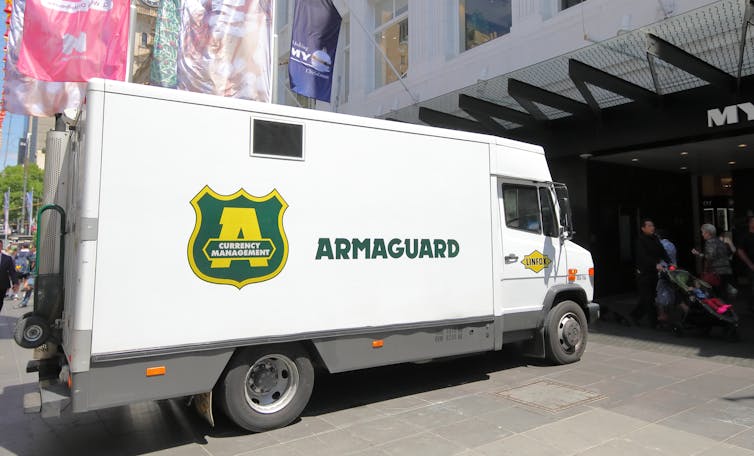
If you’ve ever taken money out at an Australian ATM, been handed $20 change at a supermarket or paid someone in cash, you’ve probably used the services of Armaguard.
Owned by Linfox Group, Armaguard is Australia’s largest currency transport business, servicing about 90% of the cash-in-transit market.
But the company is struggling. Use of cash as a means of payment has declined sharply in recent years, a trend that was only turbocharged by the pandemic. Last year, Armaguard said it would need a $190 million lifeline over the next three years in order to stay afloat.
Last week, the company rejected a A$26 million rescue offer put together by some of Australia’s biggest banks and retailers, which would have required it to open its books. Instead, it opted for a smaller A$10 million package from its parent company Linfox that will see it through the next few weeks.
But the company’s future remains far from certain, worrying the Reserve Bank.
Why is “physical money” still important, and what could Australia learn from countries who’ve already gone cashless?
Cash-In-Transit At A Dead End?
Australian cash use has fallen off a cliff over the past decade. Consumers have moved overwhelmingly toward paying by card, now often facilitated by digital wallets on phones or watches.
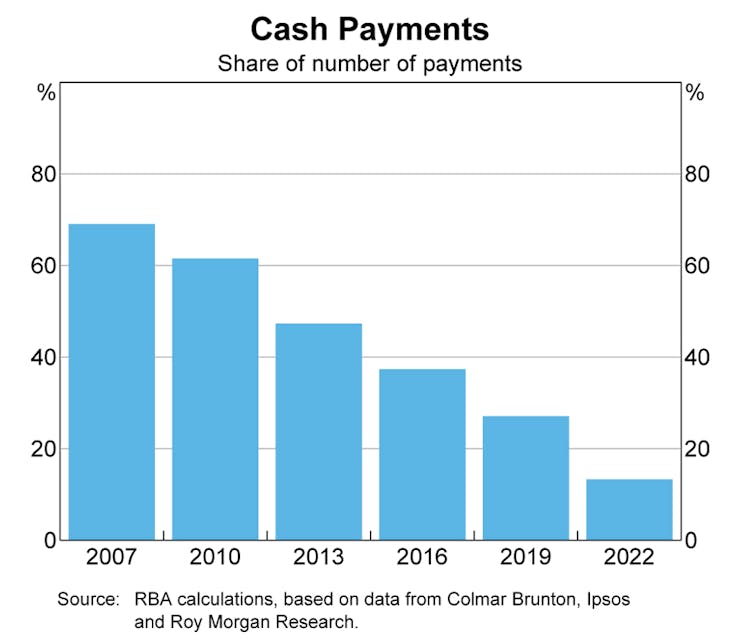
As a result, there are now far fewer bank branches and ATMs operating in Australia. Between 2017 and 2023, bank branch numbers declined by 37% and the number of bank-owned ATMs fell from 13,814 to just 5,693.
According to the Australian Banking Association, cash is now only being used for about 13% of payments, a 57% decline since 2017.
Moving cash around was already expensive – the sheer size of the Australian continent means it has to be transported securely over huge distances. The fall in cash usage has further increased the unit cost of this process.
The Reserve Bank of Australia has outlined an alarming “cash-use cycle”, showing that if cash usage continues to fall, it could become uneconomic for banks and other ATM providers to offer cash services in some regional areas.

With permission from the ACCC, Armaguard acquired its main competitor Prosegur in June last year, arguing the merger would allow it to continue offering cash-in-transit services to all locations both companies had served.
But Armaguard has claimed it is still sustaining larger-than-expected losses, citing a structural reduction in demand for cash-in-transit services.
Having now accepted a A$10 million lifeline from its parent company, Armaguard will continue to operate all of its cash-in-transit services for the moment. But it remains to be seen what extra financial support it will be able leverage from the businesses it currently services.
Why Do We Need Cash To Survive?
The Reserve Bank of Australia (RBA) has a vested interest in maintaining cash as a store of wealth and means of payment for many people, particularly as a backup option when electronic payment systems are unavailable or offline.
As RBA governor Michelle Bullock explained in a recent speech:
For these reasons, the RBA places a high priority on the community continuing to have reasonable access to cash withdrawal and deposit services.
The Reserve Bank is keeping a close eye on the negotiations to keep Armaguard afloat, having previously floated the idea of an industry “cooperative model”.
This would see major cash users like banks form a cooperative entity to replace private sector suppliers like Armaguard.
Such models already exist in European countries. In the United Kingdom, the Link network connects almost all of the country’s ATMs and allows consumers to withdraw cash regardless of who they bank with.
Link is a not-for-profit organisation jointly owned by its members, who all issue cards used in its ATMs.
Lessons From Overseas
Much further down the road than Australia on this journey, Sweden has become one of the most cashless societies in the world. But this has prompted a degree of backlash in the country.
The governor of the Swedish Central Bank, the Riksbank, recently called for urgent legislation to protect both notes and coins as a payment option for Swedes:
Cash is needed to avoid people suffering digital and financial exclusion.
The Riksbank says the banks should be mandated to accept deposits of banknotes and coins and ensure their customers can withdraw cash from both branches and ATMs.

In a recent report, the Riksbank also pointed out there is currently only one private company in Sweden providing a cash-in-transit service, creating a potential point of vulnerability.
It called for collaboration between the Riksbank and Sweden’s commercial banks on ensuring that cash could still be transported if the current system ever broke down.
Importantly, Sweden offers an example of how the true death of cash will ultimately sound alarm bells. Faced with this, central banks and governments can bend to popular opinion and legislate for cash’s survival.![]()
Steve Worthington, Adjunct Professor, Swinburne University of Technology
This article is republished from The Conversation under a Creative Commons license. Read the original article.
Join In The Biggest Morning Tea At RPAYC
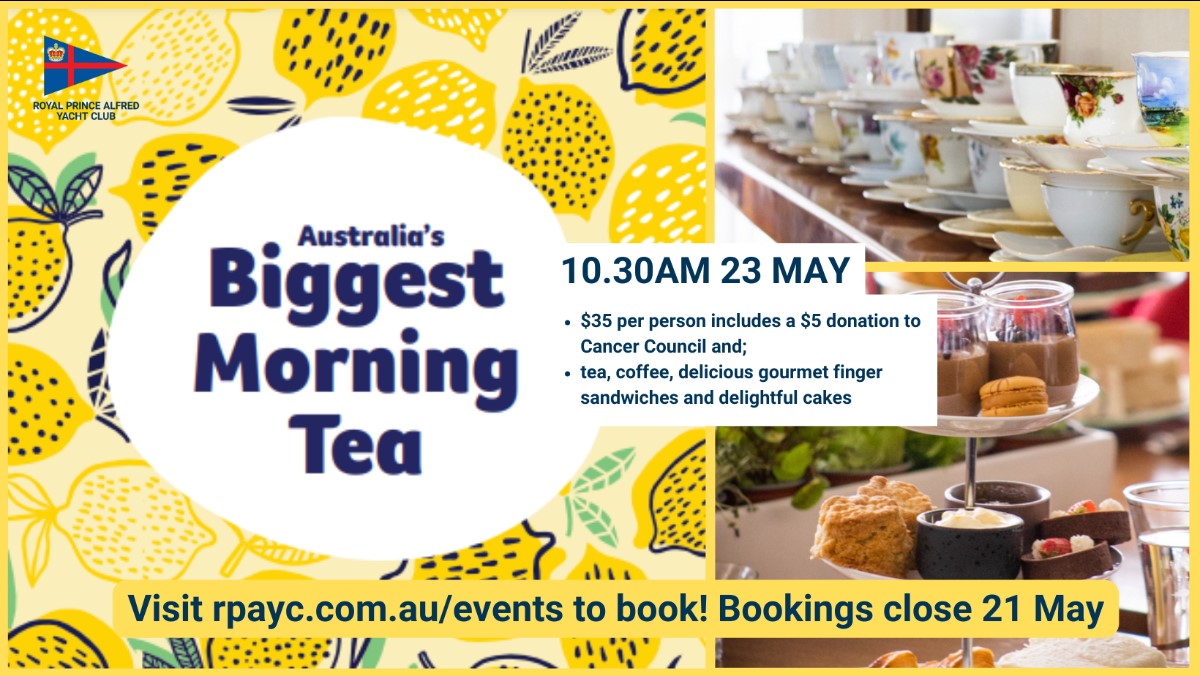

Manly-Warringah Choir is pleased to announce its Autumn concert:
Mostly Mozart
Sunday, 19th May 2024 at 2pm
The Waterford Hall, St Paul's Catholic College, Darley Road, Manly
Tickets will be available from 25th March at: manlywarringahchoir.org.au
Further details are in poster. Parking will be available in the school grounds. Light refreshments will be served afterwards at this lovely venue, with panoramic views over Sydney Harbour. We do hope you can join us.
2024 Seniors Card Discount Directory
AvPals Group Sessions At Newport: Term 1 2024
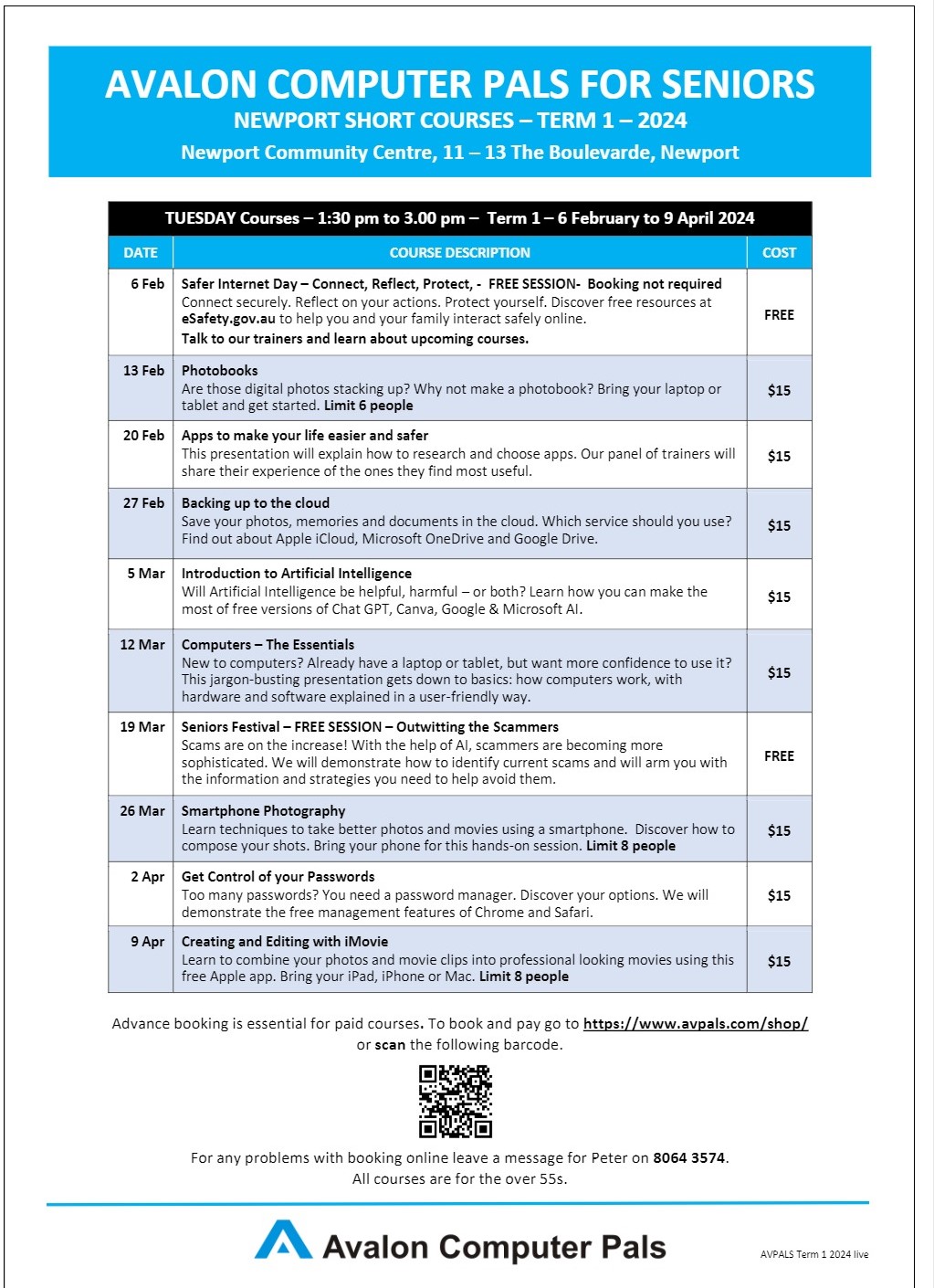
Meryon + Ruth Sumpter At North Avalon Beach Circa 1954-55
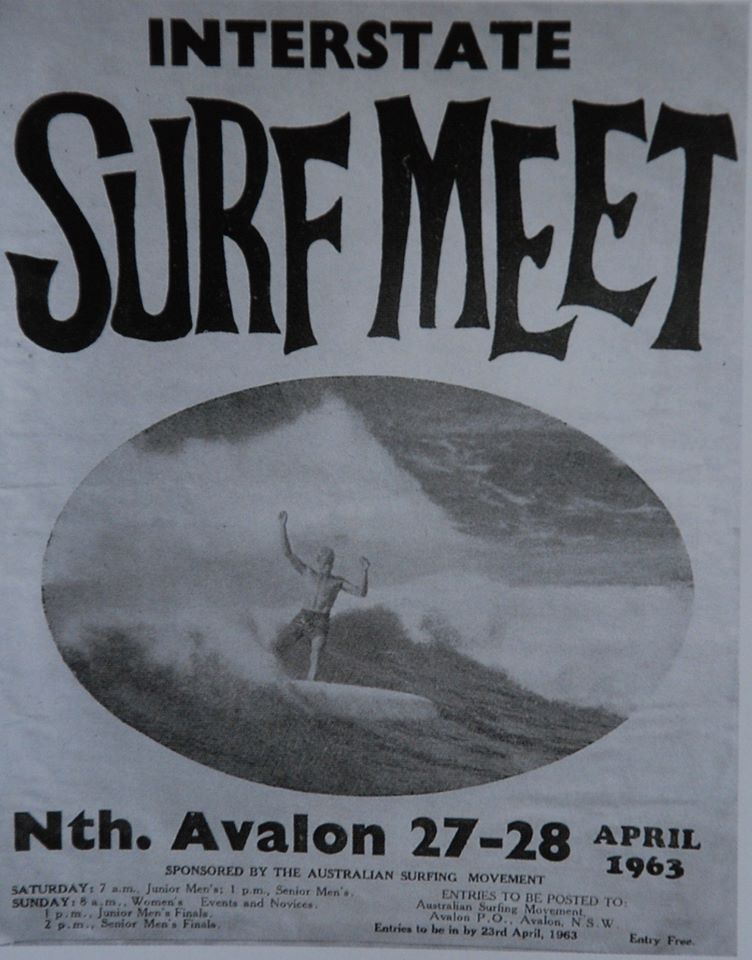
Issacs's Gardening Services: Seniors Looked After
- Horticultural advice
- Mowing & hedging
- Landscaping & fertilising
- Planting & turf laying
- Weed & pest control

Why is Australia’s east coast copping all this rain right now? An atmospheric scientist explains
Kimberley Reid, Monash UniversityHeadlines declaring a “Black Nor'easter” appeared this week as New South Wales and Queensland copped heavy rain – and residents have been warned to brace for more.
The Bureau of Meteorology is forecasting a 75% chance of Sydney receiving at least 50mm of rain, and a 25% chance of at least 100mm of rain on Friday (the average rainfall for the entire month of April in Sydney is 121.5mm).
Parts of Sydney were drenched in more than 100mm of rain overnight and the main dam that supplies the city’s drinking water is expected to spill in coming days. At least one man has died in Queensland floodwaters after torrential rain.
You might be wondering: what is a Black Nor'easter, what’s causing all this rain and does it have anything to do with climate change? I’m an atmospheric scientist who researches atmospheric rivers, extreme rainfall and climate change. Here’s what you need to know.
A Wavy Atmosphere Leads To Wild Weather
Nor'easter simply means the wind comes from the northeast and black refers to the thunderstorm clouds likely to darken the sky.
Pirate-esque poetry aside, this type of weather system is not that unusual for this time of year, and technically the weather system started in the south.
But to understand the bigger question of why the east coast is copping all this rain, you need to remember the atmosphere is a fluid.
That means the same laws of physics that apply to water in the ocean also apply to air in the atmosphere. Like the ocean, the atmosphere has waves that break.
The jet stream is a current of fast winds about 10km high that blows from west to east and steers high and low pressure systems around the planet.
High pressure systems tend to bring clear skies and sunny weather, while low pressure systems are associated with clouds and rain.
But when the jet stream becomes wavy or even breaks, the high and low pressure systems can veer off course.
Like sea spray blowing off an ocean wave as it breaks, a low pressure system can blow off an atmospheric wave, as seen in the video below:
What Causes A Long Stretch Of Intense Weather?
When a high or low breaks away from the jet stream, it can become “stuck”, leading to a stretch of wet weather or a stretch of hot weather.
The worst heatwaves are caused by high pressure systems stalling.
Conversely, some of the worst floods in the world are caused by low pressure systems being cut off from the jet stream and dumping rain in one place for multiple days.
The map below shows the cut-off low and blocked high over eastern Australia.
Like toothpaste in a tube, the air between the high and low is being squeezed along a narrow path (the purple arrow in the map above).
Since the air is coming from the Coral Sea, the air is warm and humid. This narrow region of enhanced moisture in the air is called an “atmospheric river”.
This atmospheric river acts like a hose, feeding moist air into the low. There, the atmospheric moisture is converted to rainfall.
We Have Seen This Before
This is the exact weather set up that caused the devastating floods in Lismore and other places in February to March 2022.
In fact, a recent study showed 72% of all heavy rainfall events over the eastern seaboard are caused by this same weather set up.
That said, we are unlikely to see the same devastating impacts we did in 2022.
The stalled systems causing the current wild weather are forecast to move away after two days. By contrast, the set up that caused the torrential rain in 2022 persisted for three and a half days. It may not sound like a big difference but to atmospheric scientists, it is.
The atmospheric river associated with the current event is also weaker, so there is less moisture in the air to turn into rainfall.
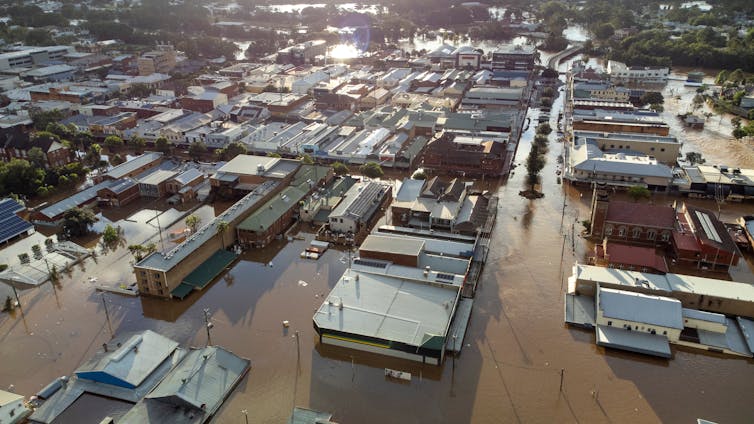
How Will Climate Change Affect These Weather Events?
Recent research found an increase in the intensity of rain from short (less than an hour long) downpours over Sydney.
Another study has shown the atmospheric moisture over Sydney is projected to increase by the end of the century.
However, the representation of certain weather systems in climate models isn’t good enough yet.
Since we are missing this key part of the puzzle, it’s still uncertain how heavy rainfall over eastern Australia may change in the future.
Recent funding to research on this topic and developments in powerful, high definition models should improve our understanding of how these weather events may change in the future.
In the meantime, for those about to face the current deluge, heed warnings from the SES and the Bureau.
Never drive through flood waters and if the sky does turn black, put your headlights on.![]()
Kimberley Reid, Postdoctoral Research Fellow in Atmospheric Sciences, Monash University
This article is republished from The Conversation under a Creative Commons license. Read the original article.
Mah Jong Returns To RPAYC

Beware businesses claiming to use trailblazing technology. They might just be ‘AI washing’ to snare investors

Staying competitive in the finance sector is vital, with many companies moving quickly to adopt artificial intelligence (AI) to reduce costs and streamline operations.
But two companies recently came unstuck when the United States Securities and Exchange Commission (SEC) accused them of exaggerating their use of AI, marking the world’s first significant move in combating so-called “AI washing”.
Delphia (USA) Inc and Global Predictions Inc, boasted about using AI for designing investment strategies, but the SEC found their claims to be unsubstantiated.
There’s much speculation around AI, especially with generative technology app ChatGPT shaking things up. But amid all the hype, AI washing is becoming more common.
As well as exaggerating or misrepresenting their AI capabilities, companies may inflate the abilities of AI algorithms or create the illusion AI plays a more significant role than it actually does.
What’s So Good About AI?
Incorporating AI into business operations has many benefits. It can streamline processes, quickly break down and analyse complex data to speed up decision-making, and help organisations stay ahead in a rapidly evolving and competitive market.
Promoting its use of AI helps portray a company as high-tech and cutting-edge, even if the reality doesn’t check out.
The practice of AI washing isn’t totally new. It follows the same idea as greenwashing, where companies pretend to be eco-friendly to attract investors and consumers.
It involves dressing up ordinary tech with fancy AI buzzwords such as “machine learning”, “neural networks”, “deep learning” and “natural language” processing to seem more innovative than they actually are.
AI And The Finance Sector
AI washing flourishes in finance and investment because of the industry’s high-stakes, intense competition and the seductive appeal of technology-driven solutions.
AI’s algorithms can analyse extensive datasets, enhance predictability and uncover hidden patterns in financial data. And AI’s real-time processing capabilities enable dynamic adaptation to market changes.

The complexity of financial products provides room for firms to conceal the reality behind flashy AI claims. And the lack of regulation exacerbates the problem.
Despite AI’s impressive capabilities, it’s not without its drawbacks, including ethical concerns, susceptibility to cyber attacks and manipulation, and the lack of transparency in how AI algorithms arrive at decisions or predictions.
Supporters of AI-related investments range from novice retail investors to seasoned institutional players.
Such interest has led to venture capital firms allocating more capital to AI startups last year than they did previously.
A Lack Of Regulation
But without clear guidelines, firms can exploit loopholes and mislead investors.
This lack of oversight erodes trust and credibility in the industry. AI washing may also stifle innovation. If investors are skeptical about AI, they’re less likely to invest in legitimate AI-powered solutions. This can slow down the development of truly groundbreaking technologies.
It is crucial to deal with AI washing, echoing the cautionary tale of the dot-com bubble. Much like the exaggerated promises and speculative fervor surrounding internet companies which led to market turbulence and investor scepticism in the late 1990s, the hype surrounding AI capabilities in finance poses similar risks.
AI washing could lead investors to pour money into AI-related ventures without fully understanding the risks or potential limitations, ultimately exposing them to financial losses when the bubble bursts.
The European Union AI Act is the first regulation in the world to govern the use, development, disclosure and oversight of AI. But in Australia there are no specific laws. Regulation currently falls under the Corporations Act.
ASIC is currently considering ways to regulate AI, including formulating penalties for AI washing.
Holding companies accountable for accurate information about technology applications helps maintain the integrity of financial markets and ensures fairness for investors.
How To Spot AI Washing
So, how can you, as an investor or consumer, avoid falling victim to AI washing? Here are some tips:
1. Verify registration status and credentials
Before buying or investing in anything claiming AI capabilities, verify the investment company’s registration status and credentials by looking them up on the professional register. Ensure they have no disciplinary [history] by checking the Australian Securities and Investment Commission register.
2. Be cautious with AI-focused investments
Investing in AI-driven companies may seem promising, but be wary of companies that tout their “revolutionary” or “industry-leading” AI without providing specifics. What exactly makes their AI revolutionary? What problems does it solve? Companies that rely on empty buzzwords without concrete details are probably exaggerating their capabilities.
3. Boost your knowledge
Get a grasp of AI and machine learning basics. Learn common AI techniques and terms used in finance. There are a large number of free resources online for beginners.
4. Ask questions
Do not solely rely on AI-generated information for investment decisions. AI-generated data may be based on inaccurate or biased. Ask financial advisors and companies about their specific AI implementation. What kind of data are they using? How are their algorithms trained? What are the limitations of their technology?
5. Be sceptical of high returns with little to no risk
Be sceptical of financial products promising high returns with minimal risk, especially those claiming AI-powered success. This tactic is a common red flag for AI washing. Don’t rely solely on a company’s claims – conduct independent research by following the financial news or checking regulatory filings of companies before investing.![]()
Angel Zhong, Associate Professor of Finance, RMIT University
This article is republished from The Conversation under a Creative Commons license. Read the original article.
The Missa Solemnis at 200: Beethoven was close to deaf when he wrote his self-proclaimed best work

Major anniversaries of works of art present us with an opportunity to engage in cultural stocktaking. We are invited to take a moment to contemplate and celebrate the basis of their lasting significance.
April 7 2024 presents one such opportunity; it is exactly 200 years from the first performance of Ludwig van Beethoven’s Missa Solemnis, or “Solemn Mass”.
Today, the Missa Solemnis is generally considered to be one of the most remarkable works of Christian liturgical (relating to public worship) music ever conceived. It is also a summation of Beethoven’s mature compositional style.
A Self-Consciously Great Work
Beethoven’s initial excuse for composing the Missa Solemnis had been a commission in 1819 for a Mass to accompany the enthronement of his friend, patron and composition pupil, Archduke Rudolph, as the archbishop of Olmütz (now Olomouc, Czech Republic). But he became so engrossed in the creative challenge that he ran some three years late in finishing it.
In part, this was because he seemed very aware of its potential to be a work of lasting significance. He later claimed to his publishers it was also his best composition. His favourite (and most famous) portrait shows him in the act of writing it.
A Masterpiece You’ve Likely Never Heard
Why, however, is the Missa Solemnis also one of Beethoven’s lesser-recognised and performed works today? One reason is mounting a performance is not for the faint-hearted. At some 90 minutes in length, calling for about 100 highly skilled musicians, it presents a host of logistical and musical challenges.
It also seems, at least at first, to have a potentially uncomfortable relationship with its original liturgical purpose, which was to accompany a full Catholic service of Holy Communion.
However, the period of the Mass’s composition, roughly 1818–1823, was also a period in European history where there was a profound shift away from established religion’s central role in public and private life. This is perhaps reflected in the fact the Missa Solemnis defied, in both its form and content, conventional expectations at the time of what this kind of Mass setting should be.
Perhaps the most famous example is the way Beethoven sets the closing “Dona nobis pacem”, the traditional closing prayer for peace. Heard initially in the liturgically correct place, these words then initiate one of Beethoven’s famous extended codas (or closing passages) to give voice to what he described as a “Bitte um innern und äussern Frieden”, or prayer for inner and outer peace.
Beethoven goes on to highlight, ironically and very dramatically, the disasters of war. And he had good reason to, having experienced first-hand some of the horrors of the Napoleonic wars.
Also, by the time Beethoven composed the Mass he was close to being profoundly deaf. As a result, his music became less concerned with the practicalities (and indeed limits) of performance. He was now realising on paper what he heard in his imagination and seemed to have felt more free to explore the extremes of conventional musical expression.
An Overt Struggle Between Form And Function
While Beethoven made a detailed study of the Mass settings of earlier masters, such as those by Giovanni Pierluigi da Palestrina, he also knew he could not simply follow their example. He said:
It would be a folly to imitate Palestrina’s language unless its spirit and world of religious thought lives within us.
A century later, German critic Paul Bekker wrote Beethoven instead broke through the walls of musical tradition and liturgical dogma “which divide the church from the world”. Indeed, the Missa Solemnis has been almost exclusively performed as a concert piece, despite Beethoven himself intending for it to be performed as part of an actual Mass service.
But all these aspects can also be considered a part of, and not necessarily in opposition to, the work’s underlying religious sensibility.
The score of the Missa Solemnis embodies much of what we have come to label as a “Late Style”. This category of creative output tends to emerge from an artist towards the end of their life. Late Style works are commonly infused with an awareness of impending death, as well as speculation about the limits of artistic expression itself.
An emblematic example might be the way Beethoven sets the text “Et vitam venturi sæculi. Amen” (“[…] and the life of the world to come, Amen”) from the closing passage of the Mass’s Credo (Creed) movement.
While Beethoven at first takes up the tradition of setting these words with a concluding flourish of musical counterpoint, he then proceeds to do so to a technically extreme degree.
Not for nothing did British musicologist Sir Donald Tovey later describe this as “the most difficult choral passage ever written”. It sounds deliberately overproduced, as if Beethoven wishes to convey both a mood of affirmation and doubt – perhaps similar to the supplicant in St Mark’s Gospel who declares: “Lord I believe, forgive my unbelief”.
Even what might at first seem to be an outwardly conservative setting, such as the Mass’s opening Kyrie Eleison prayer (“Lord have mercy upon us, Christ have mercy upon us, Lord have mercy upon us”), draws us into such a mode of contemplation. Here, the Mass’s grandiloquent music contains a more urgent, anxious, prayer as the text changes to “Christ have mercy”.
It expresses both tremendous religious yearning, but also battles with that yearning – and ultimately does not find peace with it. As the opening sequence of 1994 film Immortal Beloved imaginatively depicts, this movement was also performed at Beethoven’s funeral in 1827.
An Enduring Message
This direct engagement with doubt as an inevitable companion to expressions of faith is, I suspect, a key reason why Beethoven’s Missa Solemnis can still speak directly to us across the centuries. Just as Beethoven himself wished: “from the heart to the heart again”.
On Sunday, 200 years to the day, more than 100 musicians will join to commemorate the anniversary of Missa Solemnis with a liturgical performance at St Paul’s Cathedral in Melbourne.
In this way, we hope to bring renewed attention to the powerful amalgam of traditional ritual, musical force and theological questioning that lies at the heart of this great work.![]()
Peter Tregear, Principal Fellow and Professor of Music, The University of Melbourne
This article is republished from The Conversation under a Creative Commons license. Read the original article.
Pittwater-Narrabeen Parkinson’s Support Group
There are new flu vaccines on offer for 2024. Should I get one? What do I need to know?

Influenza is a common respiratory infection. Although most cases are relatively mild, flu can cause more severe illness in young children and older people.
Influenza virtually disappeared from Australia during the first years of the COVID-19 pandemic when public health restrictions reduced contact between people. Since 2022, it has returned to a seasonal pattern, although the flu season has started and peaked a few months earlier than before 2020.
It’s difficult to predict the intensity of the flu season at this point in the year, but we can sometimes get clues from the northern hemisphere. There, the season started earlier than usual for the third year running (peaking in early January rather than late February/March), with a similar number of reported cases and hospitalisations to the previous year.
Influenza vaccines are recommended annually, but there are now an increasing number of different vaccine types. Here’s what to know about this year’s shots, available from this month.
What Goes Into A Flu Vaccine?
Like other vaccines, influenza vaccines work by “training” the immune system on a harmless component of the influenza virus (known as an antigen), so it can respond appropriately when the body encounters the real virus.
Influenza strains are constantly changing due to genetic mutation, with the pace of genetic change much higher than for SARS-CoV-2 (the virus that causes COVID). The strains that go into the vaccine are reviewed twice each year by the World Health Organization (WHO), which selects vaccine strains to match the next season’s predicted circulating strains.
All current influenza vaccines in Australia contain four different strains (known as quadrivalent vaccines). One of the strains appeared to disappear during the COVID pandemic, and the WHO has recently recommended dropping this strain from the vaccine. It’s expected trivalent (three strain) vaccines will become available in the near future.
What’s Different About New Flu Vaccines?
There are eight brands of flu vaccines available in Australia in 2024. These include egg-based vaccines (Vaxigrip Tetra, Fluarix Tetra, Afluria Quad, FluQuadri and Influvac Tetra), cell-based vaccines (Flucelvax Quad), adjuvanted vaccines (Fluad Quad) and high-dose vaccines (Fluzone High-Dose Quad).
Until recently, the process of manufacturing flu vaccines has remained similar. Since the development of the influenza vaccine in the 1940s, influenza viruses were grown in chicken eggs, then extracted, inactivated, purified and processed to make up the egg-based vaccines that are still used widely.
However, there have been several enhancements to influenza vaccines in recent years.

Older people’s immune systems tend not to respond as strongly to vaccines. In some flu vaccines, adjuvants (components that stimulate the immune system) are included with the influenza antigens. For example, an adjuvant is used in the Fluad Quad vaccine, recommended for over 65s. Studies suggest adjuvanted influenza vaccines are slightly better than standard egg-based vaccines without adjuvant in older people.
An alternative approach to improving the immune response is to use higher doses of the vaccine strains. An example is Fluzone High-Dose Quad – another option for older adults – which contains the equivalent of four doses of a standard influenza vaccine. Studies suggest the high dose vaccine is better than the standard dose vaccine (without an adjuvant) in preventing hospitalisation and complications in older people.
Other manufacturers have updated the manufacturing process. Cell-based vaccines, such as Flucelvax Quad, use cells instead of eggs in the manufacturing process. Other vaccines that are not yet available also use different technologies. In the past, manufacturing issues with egg-based vaccines have reduced their effectiveness. Using an alternative method of production provides some degree of insurance against this in the future.
What Should I Do This Year?
Given indications this year’s flu season may be earlier than usual, it’s probably safest to get your vaccine early. This is particularly important for those at highest risk of severe illness, including older adults (65 years and over), those with chronic medical conditions, young children (six months to five years) and Aboriginal and Torres Strait Islander people. Influenza vaccines are also recommended in pregnancy to protect both the mother and the baby for the first months of life.
Influenza vaccines are widely available, including at GP clinics and pharmacies, while many workplaces have occupational programs. For high-risk groups, four of the vaccines are subsidised by the Australian government through the National Immunisation Program.

In older people, a number of vaccines are now recommended: COVID and influenza, as well as one-off courses of pneumococcal and shingles vaccines. In general, most vaccines can be given in the same visit, but talk to your doctor about which ones you need.
Are There Side Effects?
All influenza vaccines can cause a sore arm and sometimes more generalised symptoms such as fever and tiredness. These are expected and reflect the immune system reacting appropriately to the vaccine, and are mostly mild and short-term. These side effects are slightly more common in adjuvanted and high dose vaccines.
As with all medications and vaccines, allergic reactions such as anaphylaxis can occur after the flu vaccine. All vaccine providers are trained to recognise and respond to anaphylaxis. People with egg allergies should discuss this with their doctor, but in general, studies suggest they can safely receive any (including egg-based) influenza vaccines.
Serious side effects from the influenza vaccine, such as Guillain-Barré syndrome, a neurological complication, are very rare (one case per million people vaccinated). They are thought to be less common after influenza vaccination than after infection with influenza.![]()
Allen Cheng, Professor of Infectious Diseases, Monash University
This article is republished from The Conversation under a Creative Commons license. Read the original article.
Days are getting shorter and colder. 6 tips for sticking to your fitness goals

Daylight saving ends this weekend. The days are shorter and getting colder. It’s less appealing to cycle to work, walk after dinner, or wake up early to hit the gym. But we all know daily physical activity is essential for our health and wellbeing.
Physical activity releases feel-good neurotransmitters in our brains, which help to alleviate stress, anxiety, and depression. It also helps prevent diseases such as diabetes, heart disease and some cancers. Regular physical activity can prolong life and improve overall quality of life.
However, many of us find it difficult to achieve the recommended 150 minutes of moderate intensity physical activity each week. In fact, three out of ten Australians and half of Australians aged 65 and over are inactive.
So, what can you do to stay motivated and keep moving regularly through the darker months? Here are some tips.
1. Nail Those Goals
Goals can provide us with a sense of purpose, meaning and direction. But just aiming to “get fit” is less likely to cut it than goals that are SMART: specific, measurable, achievable, realistic and time-bound.
Specific goals are based on an observable behaviour or activity, such as step count, yoga, or competing in an event.
Measurable goals can be tracked, so you can easily tell whether you have ticked them off.
Achievable goals are realistic and based on your current fitness and abilities. But they can and should still be challenging. If you’ve only ever run 5 kilometres, it won’t be realistic to aim for a half marathon in the next month. But you could aim for 10 kilometres.
Relevant goals hold personal meaning for you. Articulating why it’s important will help motivate you to do it.
Time-bound goals include a target date for achieving them. You can always revisit your deadline if you’re ahead of schedule or if it’s too unrealistic.
An example of a SMART goal could be: “I will walk 10,000 steps every weekday within a month.” Then you can break it down into short-term goals to make it more achievable. If you currently walk 6,000 steps each day, you can increase steps by 1,000 every week to reach 10,000 by the end of the month.
2. Keep Track
More than 90% of Australians own a smartphone and more than two in ten own a fitness tracker or a smartwatch. These devices can help you track your goals and activity, keep you accountable and increase your motivation.
A 2021 systematic review suggests fitness trackers and smartphone apps can assist people to increase their step count by up to 2,000 steps per day. Our research demonstrated fitness trackers can also be helpful in increasing physical activity among older people. If you don’t have a fitness tracker, you can buy low-cost pedometers or track your activity times using paper and pen.
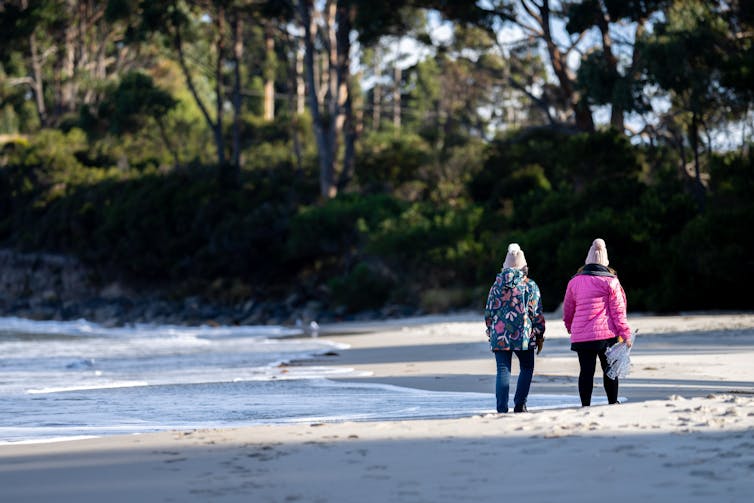
3. Plan For Success But Prepare For Barriers
Take some time to think about the potential barriers that could prevent you from being active and plan solutions to overcome them.
For example, if the cost of physical activity is too high for you, try to find options that are free, such as walking or running. You can also consider free online programs or streaming videos.
If you find it difficult to fit exercise into your busy schedule, try exercising early in the morning before you start your day and laying out your workout clothes the night before. You could consider joining a gym with flexible timetables. A good strategy is to try to fit physical activity into your daily routine, such as walking or cycling to work.
If you are living with a chronic health condition or disability, consider seeking guidance from a health professional such as an exercise physiologist or physiotherapist. Start slow and gradually increase your activity and find something you enjoy so you are more likely to keep doing it.
4. Team Up With A Workout Friend
Physical activity can be more fun when you do it with someone else. Studies show working out with friends can be more motivating and enjoyable. It can also help with accountability, as some people are more likely to show up when they have a workout partner. So, find a friend who supports your goal of being more active or maintaining your current activity levels.
5. Plan Yourself A Little Treat
Make an appointment with yourself in your diary to exercise. Approach it as just as important as meeting a friend or colleague. One idea is to delay something you’d rather do and make it a reward for sticking to your activity appointment. If you really want to go out for coffee, do a hobby, or watch something, go for a walk first.
Research shows incentives can dramatically increase physical activity levels.

6. Find A Coach
If you want more support, health coaching might be an option.
Trained professionals work one-on-one with people, sometimes via telehealth, to find out what’s reducing their motivation to make healthier choices, such as exercise. Then they employ behaviour change techniques to help them meet their health goals.
Our recent research suggests health coaching can improve physical activity in older people and those with chronic pain. In New South Wales, Victoria and Queensland, these sessions are government-subsidised or free.![]()
Juliana S. Oliveira, Postdoctoral Research Fellow, Physical Activity, University of Sydney; Anne Tiedemann, Professor of Physical Activity and Health, University of Sydney; Cathie Sherrington, Professor, Institute for Musculoskeletal Health, School of Public Health, University of Sydney, and Leanne Hassett, Associate Professor in Physiotherapy, University of Sydney
This article is republished from The Conversation under a Creative Commons license. Read the original article.
AMA Calls For Digital Black-Out On Junk Food Ads
Who invented the flat white? Italian sugar farmers from regional Queensland likely played a big role
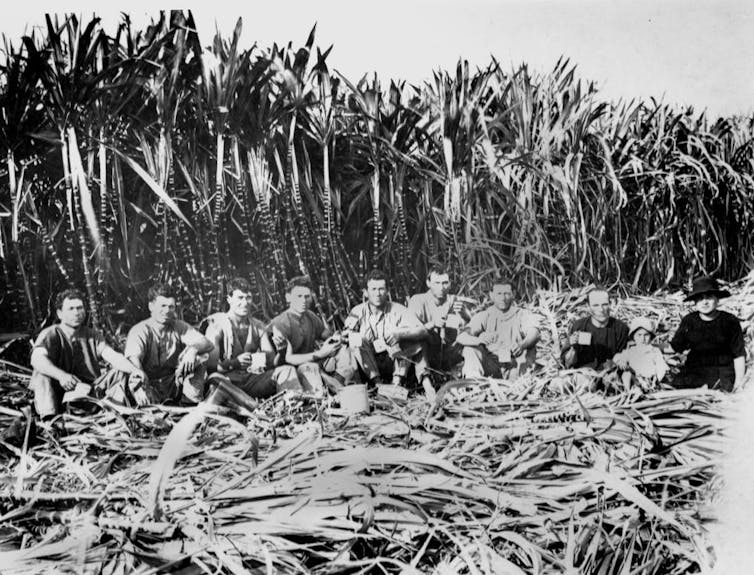
Australia’s coffee culture – a source of great national pride – is usually associated with the wave of Greek and Italian migrants who settled in Melbourne and Sydney following the second world war. But it was very likely in regional Queensland that one of Australia’s favourite brews first took root.
This is the story of how Italian sugar growers in the Sunshine State are said to have inspired the “invention” of the flat white – a drink that would go on to become a global sensation.
Tracing this history shows a different side to how European tastes were imported to Australia beyond the capital cities. It also reminds us big trends can come from small towns, and that multicultural influence can be easily taken for granted in something as basic as your daily cup of coffee.
The Little Italy Of Northern Queensland
Popular conceptions of Italian migrants in Australia are often focused on the wave of migration to the capital cities in the 1950s, overlooking the many migrants who were already settled in regional areas.
In 1891, immigration agent and businessman Chiaffredo Venerano Fraire organised a scheme to recruit cane cutters on behalf of the Queensland government. More than 300 Italians came to the region as a result, prompting chain migration and concerns about their ability to assimilate.
North Queensland became an even more popular destination in the 1920s, after the United States introduced quotas for Italian migrants. By 1925, Italians owned 44% of the sugar farms in the Herbert River area.
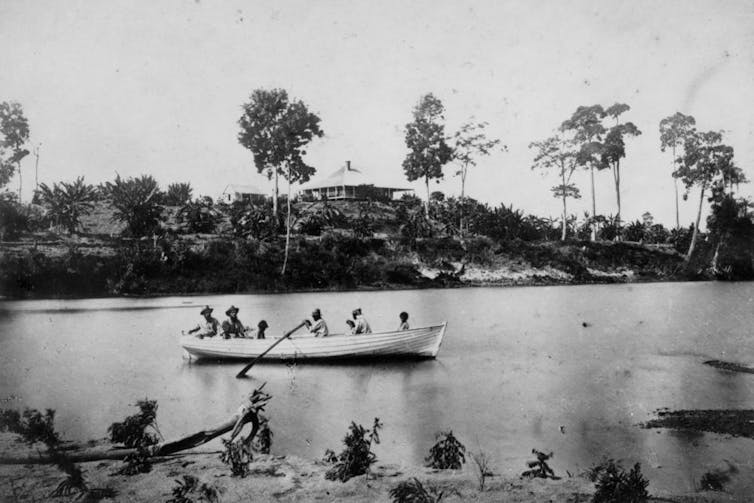
These Italian communities expanded further after WWII, as did their cultural influence. The Australian Italian festival, established in 1995 by the Italian community in Ingham and Hinchinbrook shire, celebrates and preserves the legacy of Italian culture in the district.
What’s In A Name?
There are many claims regarding the origin of the flat white, from England to New Zealand. But the best case for coining the term comes from Sydney cafe owner Alan Preston, who details his reasoning extensively online. While the origin debate rages on, Preston’s argument has the most solid historical evidence to back it.
The exact phrase “flat white” appeared on the coffee menu in Preston’s cafe, Moors Espresso Bar, in 1985 in Sydney’s Chinatown area. Preston claims he was the first to use the term on a menu, and has documented this use through photographs.
He says he brought this style of espresso-based drink to Sydney from Far North Queensland, where he’s originally from. The drink was supposedly popular in cafes in sugar-producing towns as it catered to the tastes of wealthy Italian growers and their families.
According to Preston, these cafes had the best espresso machines available at the time, imported from Italy. There would be five coffee options on offer. The black options were the short black and long black, and the white options were the cappuccino, Vienna and the “flat”. On his own menu, Preston changed the last one to “flat white” as a more efficient moniker.
After Moors Espresso Bar, Preston opened five more cafes with flat whites on the menu, popularising the name and style. In 2015, global coffee giant Starbucks added the flat white to its menu – a testament to its universality. Google is a fan too, and made the flat white its doodle of the day on March 11 2024.
Why Is The Flat White So Popular?
The flat white’s widespread appeal comes down to its balance of textured (steamed) milk and espresso. The sign of a quality espresso is in its “crema”, the caramel-coloured emulsion of hot water and coffee bean oils.

A flat white blends the natural crema of an espresso shot with a thin layer of microfoam at the cup’s surface. Without the thicker foam of a latte or cappuccino, or the distraction of chocolate sprinkled on top, the flat white delivers a stronger coffee flavour with a unified creamy texture.
Preston says a properly prepared flat white should leave “tide marks” on the sides of the cup, showing the level go down with each sip.
Regional Varieties
Perth’s unique “long mac topped up” and the enigmatic Melbourne “magic” are two more examples of how regional influences have given rise to different coffee preferences across Australia.
The West Coast’s long mac topped up has a milk to coffee ratio of 1:4 in a 180ml serving. It’s like a strong flat white where the coffee is no longer just “stained” by the milk (but somehow “double-shot flat white in a smaller cup” doesn’t roll off the tongue).
Similarly, the Melbourne magic is made with a double ristretto (a shorter, more robust espresso shot) and textured milk, and served in a 148ml (5 oz) cup. So it’s an even stronger flat white, in a smaller cup. The name “magic” may not reveal anything about the contents, but the proof is in the drinking.
Déjà Brew
The presence of coffee in Australia is as old as the First Fleet, wherein plants imported from Rio de Janeiro were grown on Norfolk Island in 1788. Reflecting on its long and nuanced history reminds us of the contributions multiculturalism has made to the nation, and why new iterations of old things ought to be welcomed.
The story of the flat white, along with its regional variations, reflects a dynamic coffee culture that will continues to evolve to cater to new tastes. For now, we can thank the Italian migrants of sugar country.![]()
Garritt C. Van Dyk, Lecturer in History, University of Newcastle
This article is republished from The Conversation under a Creative Commons license. Read the original article.
From where we work to what we spend, the ABS knows more about us than ever before: here’s what’s changing
Peter Martin, Crawford School of Public Policy, Australian National UniversityHow much were prices rising in January when Shadow Treasurer Angus Taylor said inflation was “rampant”?
The prices that give us a good steer on inflation were falling, by 0.4%.
That’s the change that month in what the Bureau of Statistics calls the consumer price index “excluding volatile items”. The items it excludes (because they are often affected by supply disruptions) are fruit, vegetables and fuel.
Apart from that, the measure of prices I just quoted is the best monthly measure of the prices of everything that households buy in the proportions they buy them.
Not all prices were falling. The price of alcohol was up, the price of bread was down, the price of rent was up, and the price of tourist accommodation was down. It’s only on balance (excluding volatile items) that prices fell.
This is the sort of thing we wouldn’t have known about until just a few years ago. Up until late 2022, the consumer price index was calculated only four times a year, and even that was a herculean feat.
A Ten-Fold Increase In Data
The bureau had to collect what used to be 100,000 separate prices for each of those four surveys – a huge number collected in person, either over the phone (“hello, can you tell me your current price for…”) or in stores via handheld devices.
The cost to the bureau, and the number of staff involved, was enormous – big enough to make a monthly measure impossible, as important as that would have been to a Reserve Bank that set interest rates monthly and needed a monthly read on inflation.
But in the last few years the use of supermarket scanner data, “web scrapping” to collect online prices, and data feeds direct from the computers of rental agents and all sorts of other businesses have cut costs enormously and increased the number of prices collected each quarter almost ten-fold to 900,000.
The bureau says the monthly index isn’t as comprehensive as the quarterly index yet, but it will be by the end of 2025, at which time the bureau will use it to replace the quarterly index, delivering something of the same quality 12 times a year.
That’s just one of the ways in which an explosion of previously-inaccessible data is transforming the way the bureau goes about its job and is set to make statistics that used to be only fairly reliable suddenly very reliable.
Retail Figures Set For The Chop
For more than half a century, every month since April 1961, the bureau has published an update on retail spending – how much we are spending in shops.
The survey used to be quite useful. Back when it started, we did more than half our spending in shops. These days it’s only one third, the rest is on services.
And the retail survey was always a pretty rough-and-ready way to find out what we spent in shops. Each month the bureau surveys about 700 large businesses and 2,700 smaller businesses selected at random. It uses phone calls and paper forms.
Meantime, in part due to the national emergency created by COVID, it’s been given access to something better. Australia’s big four banks agreed to give the bureau de-identified card and transaction data to enable it to quickly get a handle on how much we were spending early in the pandemic, and they’ve kept providing it.
It turns out to be very good indeed. It covers far more retail outlets than the retail survey ever did, as well as spending on services and spending overseas, and it divides spending into categories based on the type of merchant.
It doesn’t directly cover what we spend in cash, but there’s a lot less of that than there used to be. It'llreplace the retail survey from the middle of next year.
Millions Instead Of Thousands
The mammoth monthly employment survey of 24,000 households remains in place, as do the doorknocks that begin each household’s eight-month turn at completing the survey, but alongside it the bureau is developing a far more comprehensive measure using payroll data submitted to the tax office.
While payroll numbers can’t tell us everything the employment survey does (they can’t yet tell us the hours people work and whether are looking for work) they cover millions of Australians instead of thousands, and come out weekly.
The bureau is doing the same sort of thing almost everywhere. For more than a century it has surveyed farmers to find out what they are growing. It’s begun supplementing that with data from satellites and the machines used on farms.
The ultimate goal of all of these changes, gathered together under the banner “Big Data, Timely Insights” is to ask as few questions as possible. Why run a survey, when you can find out directly?
Big Data, Timely Insights
It’s far harder than it looks. A lot of the so-called administrative data provided to banks and other organisations isn’t sorted in a way that makes it useful. That’s where the bureau is concentrating its efforts. The more it succeeds, the less it will need to bother us and the better the information it will produce.
In the meantime, here’s an update on those inflation figures, the ones that come out monthly. In February, the consumer price index excluding volatile items did not change, meaning in that particular month, inflation was zero.
Even better, adding the past six months together (and multiplying by two) gives you an annual inflation rate of 2.5% – slap bang in the middle of the Reserve Bank’s 2-3% target band, suggesting things are moving in the right direction.
It’s too early to declare victory over inflation that was at one stage heading towards 8%, but at the moment the monthly figures show things moving in the right direction.
If the direction changes, the bureau will tell us, quick smart.![]()
Peter Martin, Visiting Fellow, Crawford School of Public Policy, Australian National University
This article is republished from The Conversation under a Creative Commons license. Read the original article.
It’s time to give Australian courts the power to break up big firms that behave badly
Allan Fels, The University of MelbourneAustralian authorities have never had the power to break up big businesses that behave badly.
It’s a power available to courts in the United States and elsewhere, but not here – at least not unless the Greens succeed with a bill now before the Senate.
The so-called Competition and Consumer Amendment (Divestiture Powers) Bill would enable courts to break up firms that misuse their substantial market power under section 46 of the Competition and Consumer Act.
The Coalition is reported to be examining the same sort of thing, with the breakup powers limited to supermarket chains that abuse their market power.
Section 46 prohibits firms with a substantial degree of power in a market from engaging in conduct that has the purpose, effect, or likely effect of substantially lessening competition in that market.
The new power proposed by the Greens would enable courts to direct corporations that contravene Section 46 to sell assets or do whatever else was necessary to reduce their power within a period of two years.
I recommended such a power earlier this year in my report to the Australian Council of Trade Unions on price gouging and unfair pricing practices.
Australia’s approach to such powers has always been unbalanced.
With One Exception, Our Courts Can’t Break Up Corporations
It has long been recognised (and acknowledged in most economics textbooks) that competition doesn’t work well in markets where only one or a few big firms dominate.
Concentrated markets can lead to overpricing, the squeezing of suppliers and outcomes very different from markets with higher competition.
But rather than take action against the cause of many of these problems – market concentration – Australia’s approach has been to merely take action against the problems it creates. With one exception.
That exception is mergers. In cases where firms merge without obtaining the prior approval of the Competition and Consumer Commission and the commission finds the merger contravened the Competition and Consumer Act, it can apply to the courts (within three years) to have the merger undone.
While this power is useful – and effective in getting firms to seek prior approval for mergers – it only allows authorities to stop markets from becoming more dominated. It gives them no power to make markets less dominated.
Overseas, Divestment Orders Are Rare But Effective
In the United States, courts are able to break up dominant firms that abuse their market power.
Such orders are rare, for the same reason Australian divestment orders relating to mergers are rare. Once the power is in place and has been used, firms at risk of such orders become very careful.
One of the first US divestment orders related to Standard Oil in 1911. After finding that it used aggressive pricing to eliminate competition, US courts ordered it to be broken up into what became 34 companies. Competition improved as a result.
In 1974, US authorities filed a breakup suit against the telecommunications giant AT&T, arguing it had a monopoly on telephone lines. The eventual settlement led to AT&T giving up control of its regional operating companies, so-called “Baby Bells”. This allowed the new firms to compete with each other and lowered the prices of connections and calls.
In 2001, US authorities won a court order to break up Microsoft. It would have created one firm that built operating systems and another that built applications for operating systems. The order, however, was overturned on appeal.
Two decades later, in 2020, a court ordered the Facebook owner Meta to sell Instagram and WhatsApp, which was also overturned on appeal.
Divestment has been considered against Google over the behaviour of its business in the advertising market. It would also be an option in the Department of Justice’s current case against Apple for alleged abuse of market power.
Divestment isn’t the best solution in every case. Fines are often a more practical way to address misuses of market power.
But divestment is a useful tool in an authority’s armoury. The fact US authorities have only used it every few decades says more about the effectiveness of divestment than any lack of effectiveness. Once firms know the power exists, they behave better.
From Kennett To Howard, We’ve Broken Up Public Monopolies
Australia is no stranger to divestment. When the Kennett government privatised Victoria’s State Electricity Commission in the 1990s, it broke it up into several sometimes-competing generation, transmission and distribution businesses.
And when Australia’s Howard government privatised airports in the 1990s, it sold them separately in order to avoid market dominance, effectively breaking up the Federal Airports Corporation.
I don’t think Australian authorities should be able to break up corporations just because they don’t like the shape of a market, and I don’t think that breakups of Australia’s big two supermarket chains are likely to be a good idea. They rely on the efficiencies that come from scale.
But I think that where market power is being abused, breakups should be available as one of a number of possible sanctions. It’d keep big businesses on their toes.![]()
Allan Fels, Professorial Fellow, The University of Melbourne
This article is republished from The Conversation under a Creative Commons license. Read the original article.
Rock-Wallaby Bite Size ‘Packs A Punch’
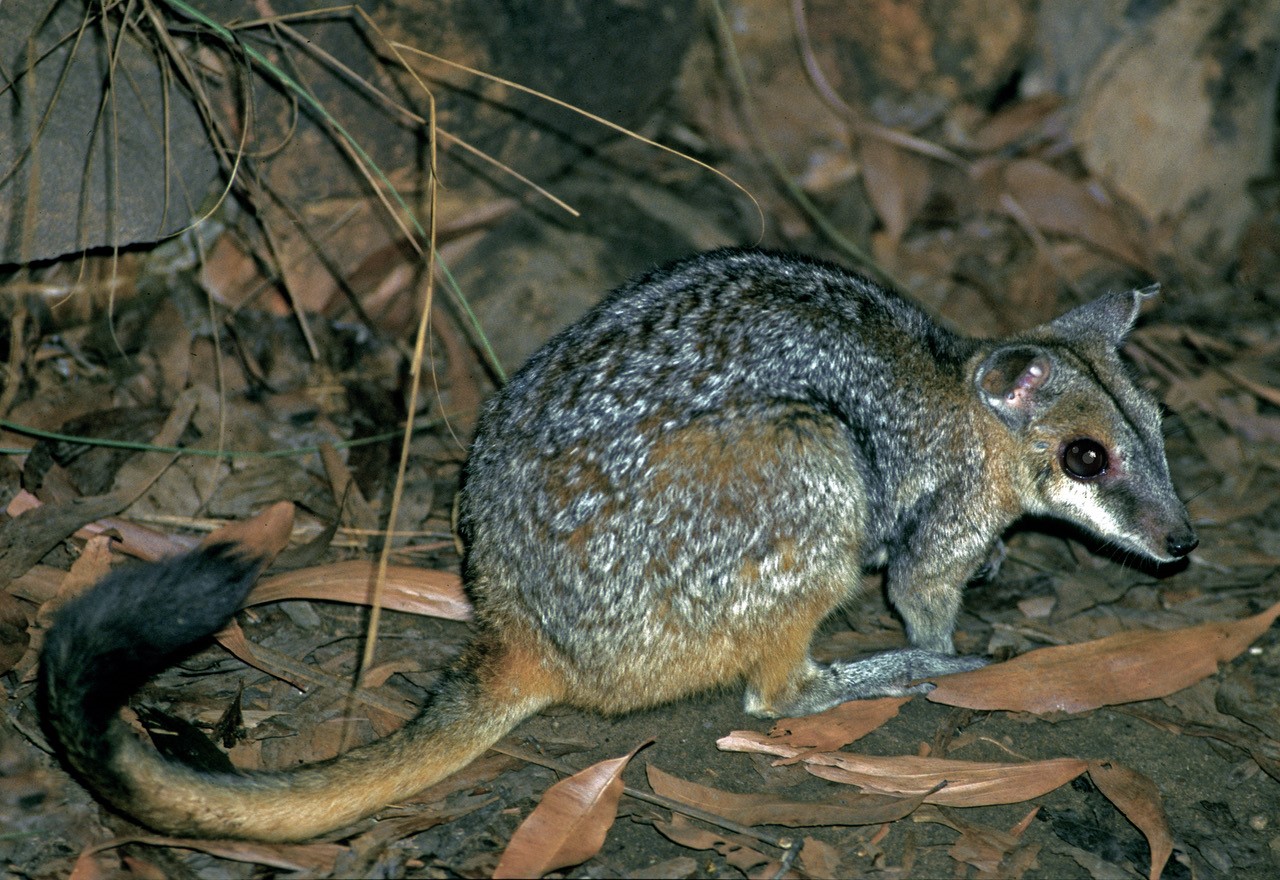
Universal Brain-Computer Interface Lets People Play Games With Just Their Thoughts
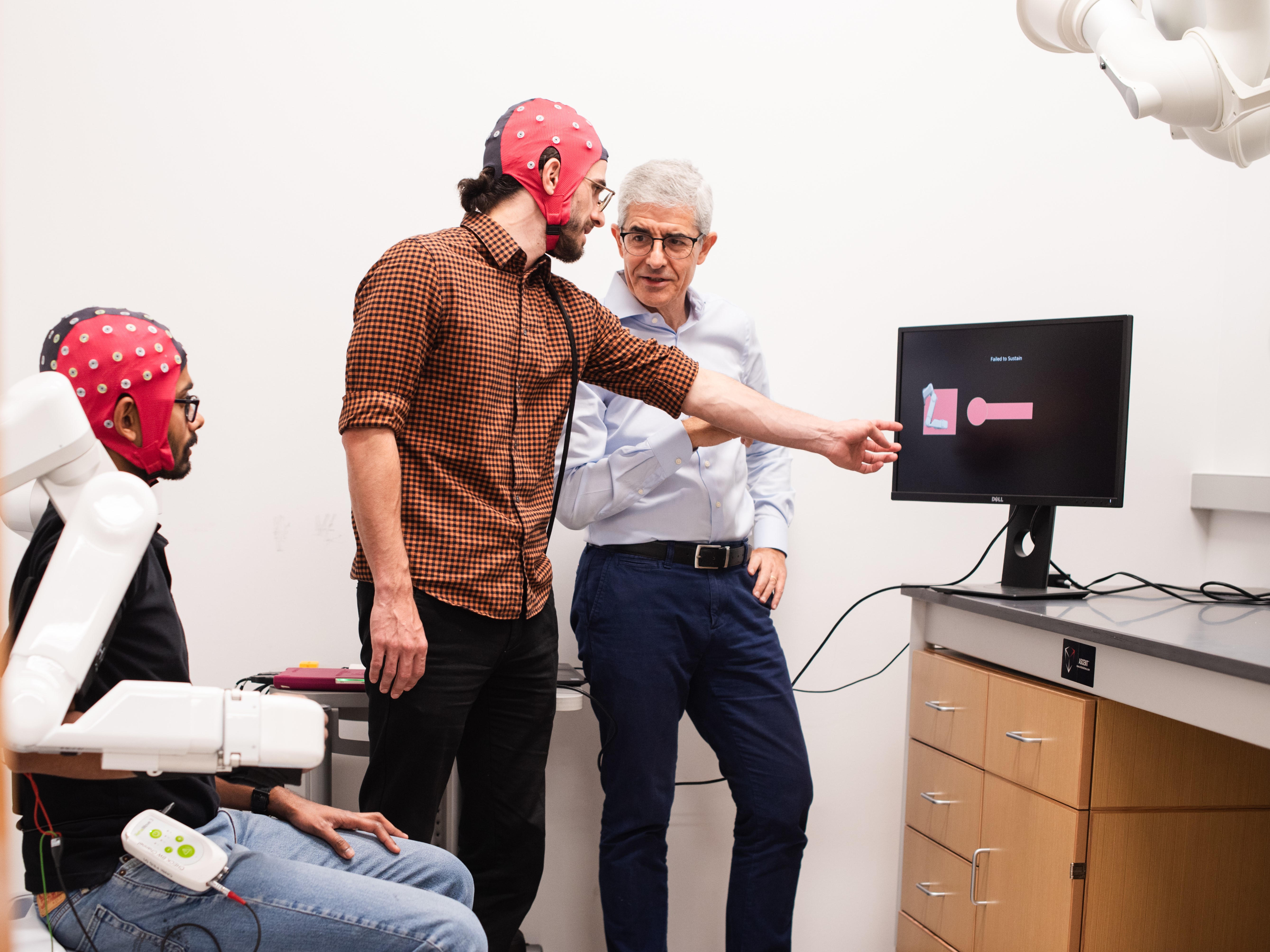
‘A blind and deaf mind’: what it’s like to have no visual imagination or inner voice

Look at these pictures. Can you see a cube on the left and a face on the right?

Can you imagine seeing things in your mind? Can you hear an inner voice when you think or read?
One of the authors, Loren Bouyer, cannot do any of these things. To Loren the left-hand image looks like a jumble of two-dimensional shapes, and she can only see a mop on the right.
Loren cannot imagine audio or visual sensations, or hear an inner voice when she reads. She has a condition we describe as “deep aphantasia” in a new paper in Frontiers in Psychology.
‘A Blind Mind’
Both authors are aphantasics – we are unable to have imagined visual experiences.
Aphantasia is often described as “having a blind mind”. But often we cannot have other imagined experiences either. So an aphantasic might have a blind and a deaf mind, or a blind and a tasteless mind.
We are often asked what it’s like to be aphantasic. Some analogies might help.
People Have Multilingual Minds
Most people can experience an inner voice when they think. You might only speak one language, so your inner voice will “speak” that language.
However, you understand that other people can speak different languages. So, you can perhaps imagine what it would be like to hear your inner voice speak multiple different languages.
We can similarly imagine what your thoughts must be like. They may be diverse, experienced as inner visual or audio sensations, or as an imagined sense of touch or smell.
Our minds are different. Neither of us can have imagined visual experiences, but Derek can have imagined audio sensations and Loren can have imagined feelings of touch. We both experience thoughts as a different set of “inner languages”.
Some aphantasics report not having any imagined sensations. What might their experiences of thought be like? We believe we can explain.
While Loren can have imagined sensations of touch, she does not have to. She must choose to have them and it takes effort.
We presume your imagined visual experiences are similar. So what’s it like when Loren thinks, but chooses not to have imagined sensations of touch?
Our Subconscious Thoughts
Most people can choose to pre-hear their speech in their minds before they speak aloud, but they often don’t. People can engage in conversation without pre-hearing themselves.
For Loren, most of her thoughts are like this. She writes without having any pre-experience of the written content. Sometimes she will pause, realising she is not yet ready to add more, and recommence when she feels prepared.

Most of the operations of our brains are subconscious. For example, while we do not recommend it, we suspect many of you will have experienced driving while distracted, only to suddenly realise you are heading for your home or office instead of your intended destination. Loren feels most of her thoughts are like these subconscious operations of your mind.
What about planning? Loren can experience that as a combination of imagined textures, bodily movements and recognisable states of mind.
There is a feeling of completion when a plan has been formed. A planned speech is a sequence of imagined mouth movements, gestures and postures. Her artistic plans are experienced as textures. She never experiences an imagined audio or a visual listing of her intended actions.
There Are Vast Differences Between Aphantasics
In contrast to Loren, Derek’s thoughts are entirely verbal. He was unaware, until recently, that other modes of thought were possible.
Some aphantasics report occasional involuntary imagined sensations, often of unpleasant past experiences. Neither of us have had an imagined visual experience, voluntary or involuntary, during our waking lives.
This highlights diversity. All we can do is describe our own particular experiences of aphantasia.
Frustrations And The Humour Of Misunderstandings
Aphantasics can be frustrated at others’ attempts to explain our experiences. One suggestion has been that we might have imagined visual experiences, but be unable to describe them.
We understand the confusion, but this can seem condescending. We both know what it is like to have imagined sensations, so we believe we can recognise the absence of a particular type of imagined experience.
The confusion can go both ways. We were recently discussing an experiment. The study was too long, and had to be shortened. So we were considering which imagined visual scenario to cut.
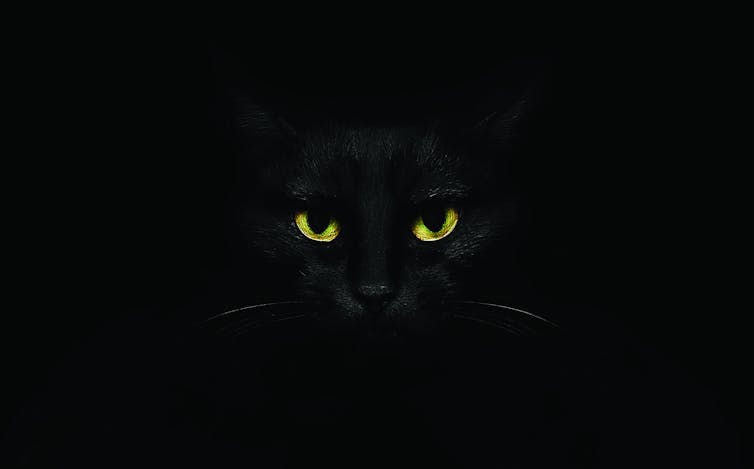
Loren suggested we cut a scenario asking people to imagine seeing a black cat with their eyes closed. We thought it might be hard to see an imagined black cat against the blackness of closed eyes.
The only person in the room who could have imagined visual experiences started laughing. Apparently it’s easy for most people to imagine seeing black cats, even when their eyes are closed.
Deep Aphantasia
Researchers believe aphantasia happens when activity at the front of the brain fails to excite activity in regions toward the back of the brain. This “feedback” would be necessary for people to have imagined experiences.
Loren seems to have a form of aphantasia that had not been described. Unsuccessful feedback in Loren’s brain seems to result in atypical experiences of actual visual inputs. So she cannot see the cube at the top of this article, or the face instead of a mop, or have a number of other typical experiences of visual inputs.
We coined the term “deep aphantasia” to describe people like Loren, who not only are unable to have imagined sensory experiences but also have atypical experiences of actual visual inputs.
Our goal in describing our experiences is to raise awareness that some aphantasics might have unusual experiences of actual visual inputs, like Loren. If we can identify these people, and study their brains, we may be able to understand why some people can conjure imagined sensory experiences at will, while others cannot.
We also hope that raising awareness of the different experiences people have when they think might encourage tolerance when people express different thoughts.![]()
Derek Arnold, Professor, School of Psychology, The University of Queensland and Loren N. Bouyer, PhD Student, Neuroscience, The University of Queensland
This article is republished from The Conversation under a Creative Commons license. Read the original article.
Businesswoman and women’s advocate Samantha Mostyn to be Australia’s next governor-general
Michelle Grattan, University of CanberraAustralia’s next governor-general will be businesswoman Samantha Mostyn, succeeding David Hurley on July 1.
Announcing Mostyn’s appointment on Wednesday morning, Prime Minister Anthony Albanese said Mostyn was a “modern and optimistic leader for our modern and optimistic nation”.
“Her leadership reflects our enduring Australian values of equality, fairness and responsibility to build a better future for the next generation,” he said.
Mostyn is the second woman to hold the post, following Quentin Bryce who was appointed by the Rudd Labor government.
Trained as a lawyer, Mostyn has had extensive experience in business, especially in telecommunications and insurance locally and globally.
Her non-executive board roles have included the boards of Transurban, Virgin Australia, and chairing Citibank Australia.
She presently is chair of AWARE Super and Alberts Music Group and is on the Mirvac board.
She was president of Chief Executive Women from 2021-22.
She was a commissioner of the Australian Football League – the first woman to be a commissioner – helping develop its Respect and Responsibility policy, and a driver of the AFL (Women’s) (AFLW).
She has also chaired many not-for-profit bodies, including Beyond Blue and Australian Volunteers International.
Mostyn has been a strong advocate on climate change and on women’s issues and has long had strong Labor connections.
She was a policy adviser for former Labor ministers Bob Collins and Michael Lee and a senior communications policy adviser to former Prime Minister Paul Keating.
In 2022 the Albanese government appointed her to chair its Women’s Economic Equality Taskforce, charged with developing a national strategy to achieve gender equality. The committee reported late last year.
Albanese told a joint press conference with Mostyn she was an “exceptional leader”.
Mostyn said she was “ready to serve with integrity, compassion and respect”.
The governor-general designate told the news conference she wanted to “introduce myself to those who do not yet know me.”
Born in Canberra, “like most people, and certainly most people in Australia, my fundamental values were set early by my parents and our family life.
"Along with my three younger sisters, I grew up in an army family, our father a Royal Military College Duntroon graduate who served Australia with distinction for almost 40 years, supported by the generosity, love, care and selflessness of our late mother.
"In my very early years, my dad’s military service took us to the United States and Canada before returning to Australia and living in Adelaide and Melbourne, including time spent with my grandmother when my father served in Vietnam. We learned to be resilient.
"By the early 1970s, we had returned to Canberra, where I was the beneficiary of the public education system and then later completing an arts law degree at the Australian National University while working as a researcher for the Chief Magistrate of the Australian Capital Territory.
"My memories are of deep service, community involvement, education and learning, sport and music, volunteering and engaging in the disability sector. I also clearly and fondly recall our annual attendances at Anzac Day dawn services and marches and standing patiently with my sisters in the crowds on Dunrossil Drive at Yarralumla, waiting to catch that glimpse of Her Majesty The Queen on her visits to Canberra in the 1970s.
"My parents instilled in us the values that they lived so consistently. Generosity, care for others, respect, curiosity, being of service to society and always humility. Millions of Australians know this to be true, that being of service is what often provides a person with their greatest happiness and sense of purpose.
"That is certainly the case for me and I can think of no greater purpose, Prime Minister, than to serve this country I love as Governor-General, particularly at a time in our history when the challenges and opportunities we face are large and complex.
"In the past 40 years, I hope my career and contributions reflect these values. I’ve worked in the highest levels of many Australian companies and spent time working globally. I’ve also had the privilege of advising governments of all persuasions across the country.
"Alongside my broad business career, I’ve forged a strong connection with many other aspects of Australian life, including in sport, civil society, arts and culture, First Nations reconciliation, sustainability in the environment, policy development, mental health, gender equality and young people.
"My connections to this country and people have come in so many forms, from contributing to governance around executive investment and board tables, to cheering at the footy, to being moved and inspired sitting in the audience at our extraordinary arts and music events, or simply packing food boxes in my local community.
"I’ve had engaging discussions with farmers about the challenges of climate change, listened deeply to young people talking enthusiastically about civics and democracy and intergenerational fairness. I spent time listening carefully to single mothers and domestic violence survivors, and shared coffees and stories in men’s sheds.
"My legal training, including time spent in courts from the Magistrates Court here in Canberra to the Court of Appeal of the New South Wales Supreme Court, ensures that I understand and deeply respect our institutions, the rule of law and in particular the democratic will of the Australian people when it comes to our constitutional arrangements.
"It is this that will guide me in carrying out the duties of this office.”![]()
Michelle Grattan, Professorial Fellow, University of Canberra
This article is republished from The Conversation under a Creative Commons license. Read the original article.
Disclaimer: These articles are not intended to provide medical advice, diagnosis or treatment. Views expressed here do not necessarily reflect those of Pittwater Online News or its staff.